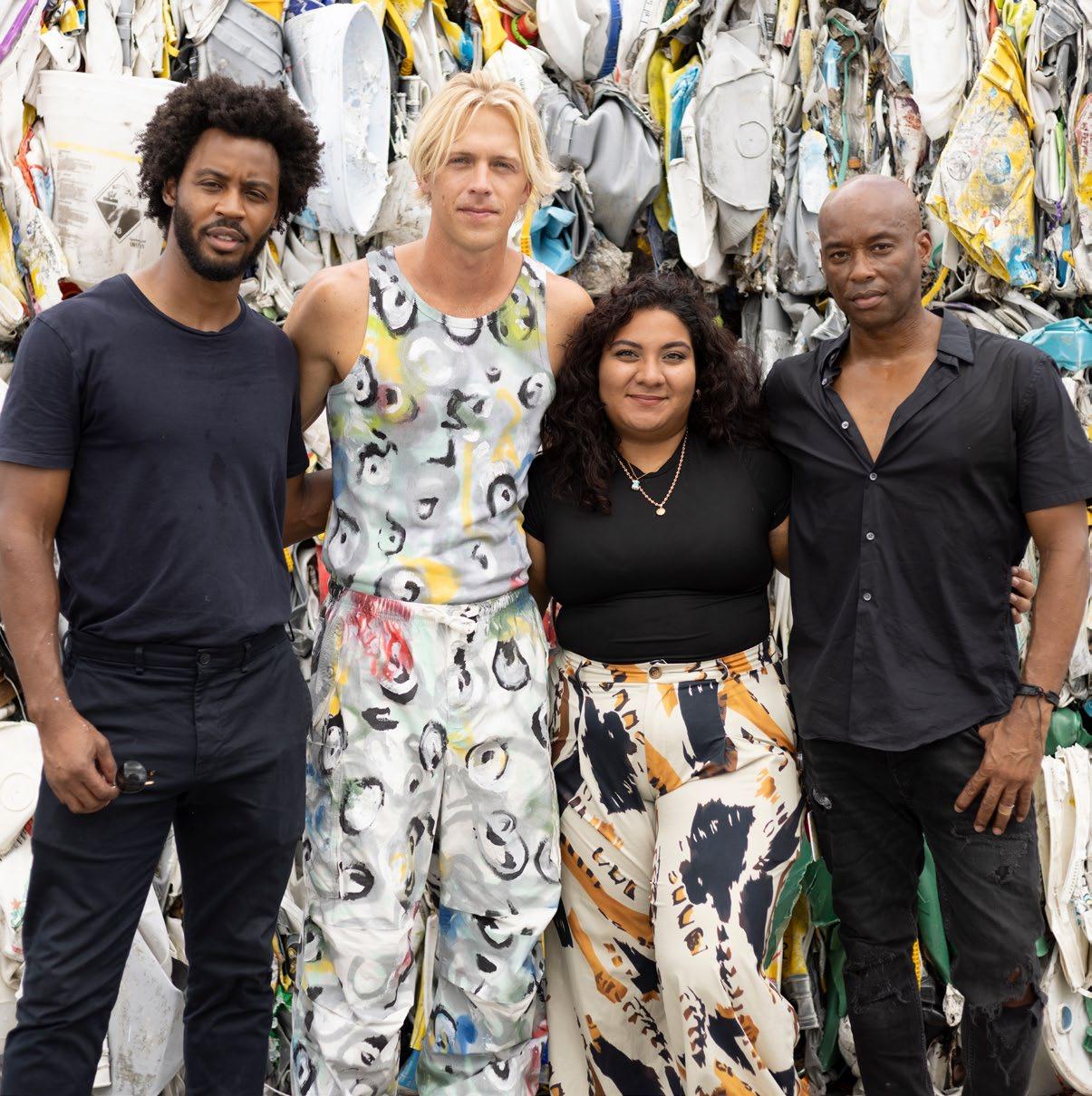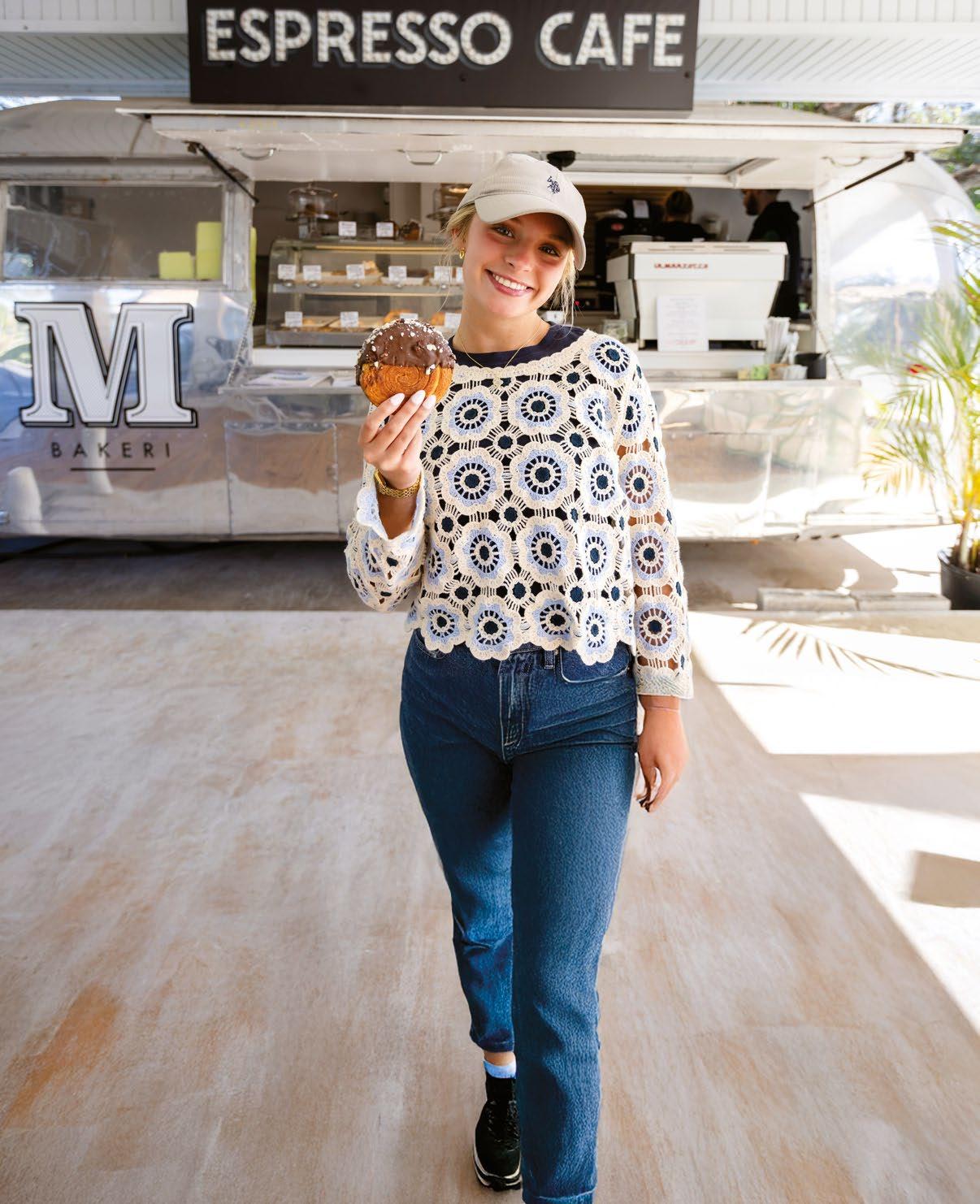
OUTRAGEOUS: BURIED IN BEAUTY. DROWNING IN PLASTIC.




Photograph by Victoriya Knapp
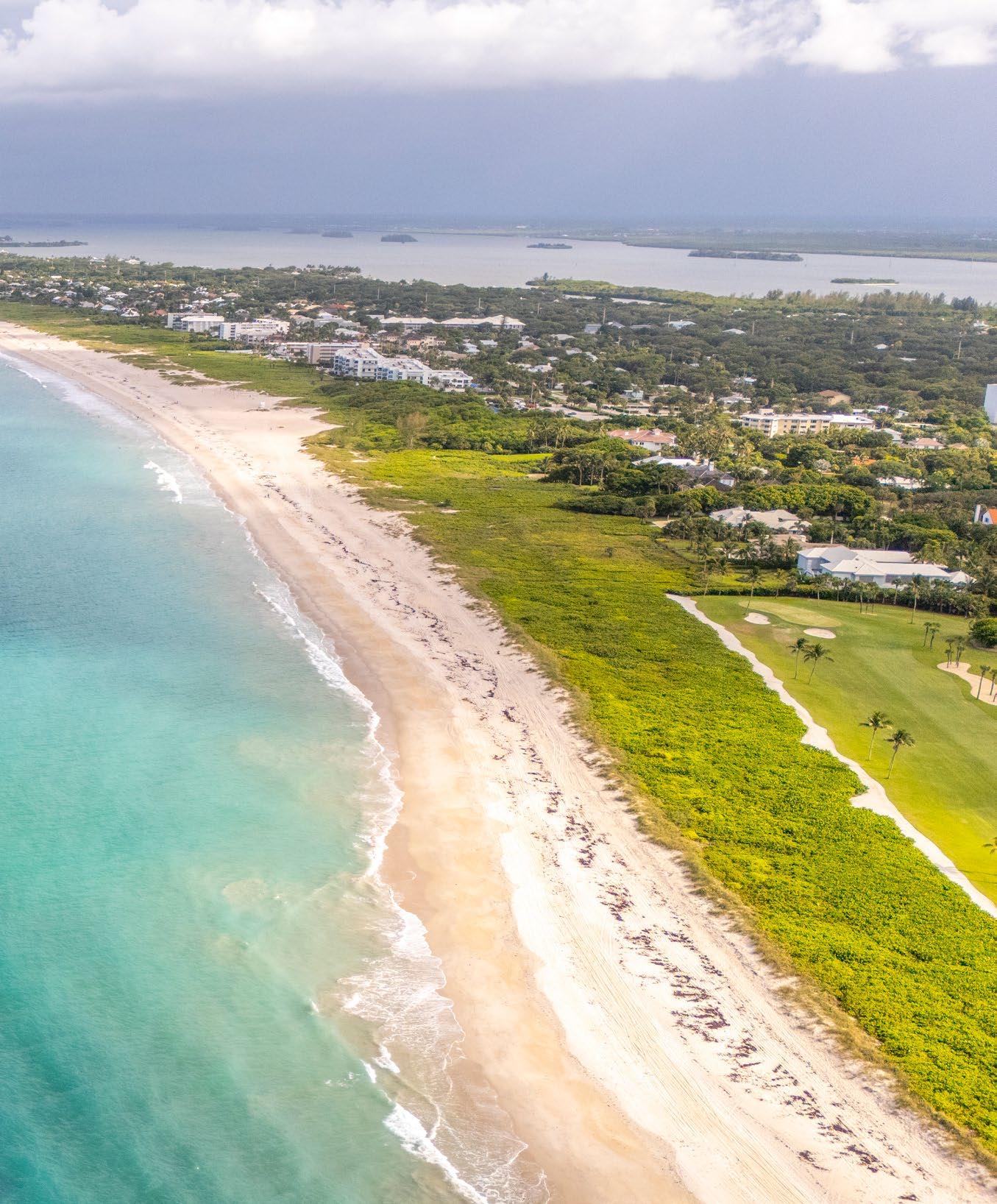
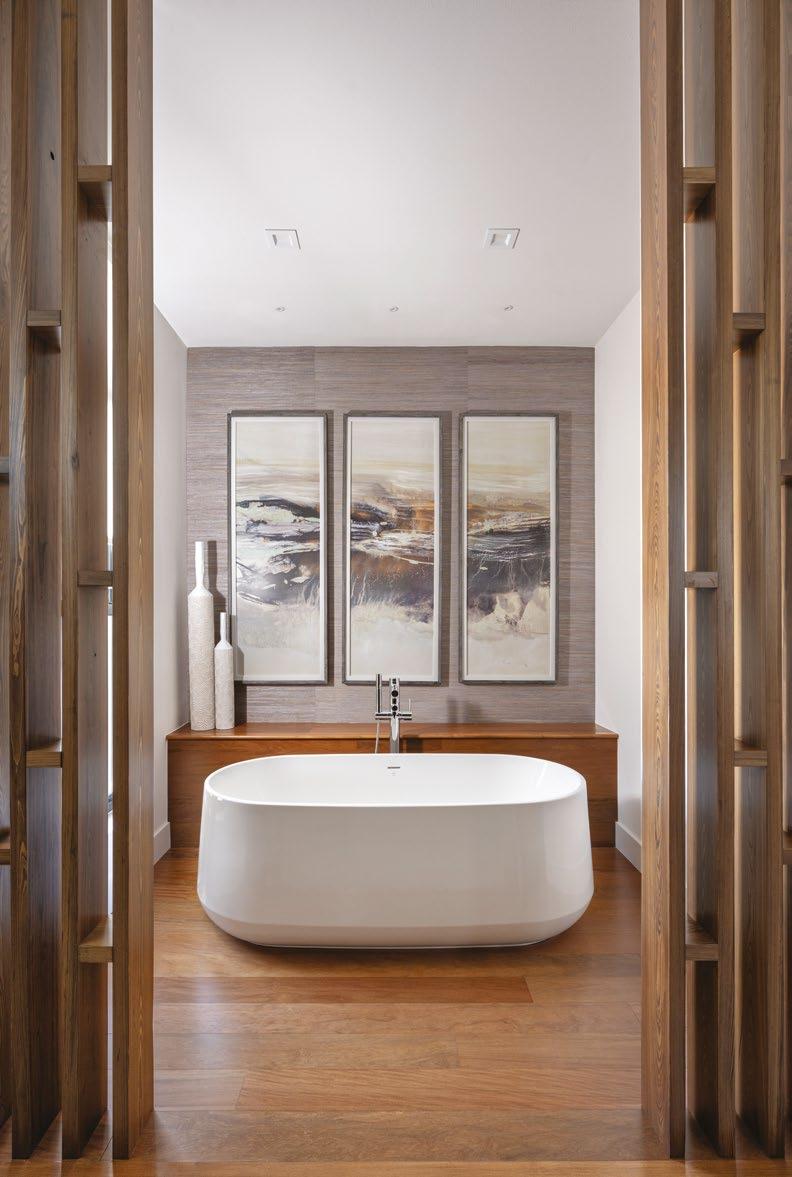
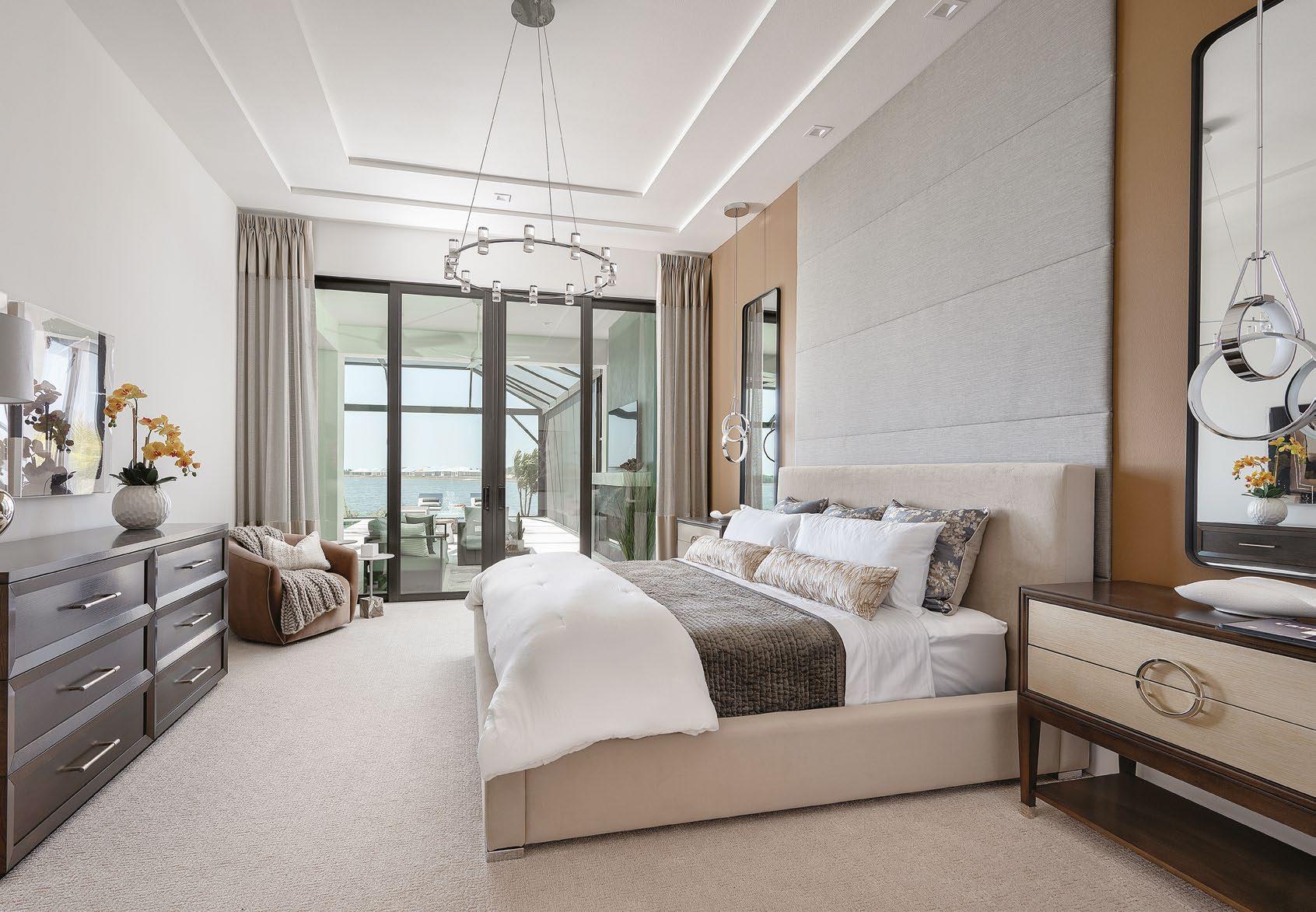



“A MAGAZINE—A RELEVANT ONE— SHOULD BE A SOUND, NOT AN ECHO.”
Tina Brown, The Vanity Fair Diaries, 1983-1992
10
Editors’ Letter
PIECES of the larger whole
16 Bar carts bring the party to where guests are gathered.
HOME STYLES
18 Mediterranean Architecture
An amalgamation of Spanish, French, and Italian heritage and brilliance.
HOME OWNERSHIP
20 Land Elevation Surveys
In Vero Beach you should want to know how far your home is above sea level.
LIGHTING
24 Glorious Chandeliers
A room’s jewelry to accentuate the aesthetic and showcase your personal style.
MATERIALS
26 Wood Flooring Part 2
Purchase and installation best practices drawn from personal experience.
KITCHENS
30 Brewing Better Mornings
The Miele CVA 7775 Coffee System is built-in, automatic, and knows precisely what you want.
MATERIALS
32 Zellige Tiles
Ancient tiles from Morocco still define the cutting edge of aesthetic design.
SMART HOME
34 The Perfect Home Theater Technology just keeps getting more magnificent.
ARTIST TO ARTIST
38 Where Water Meets Canvas Shotsi Lajoie finds healing and art in the cadence of oars in the quietude of nature and dawn.
ENVIRONMENT
42 Holding Back the Tide
Maxwell Muller leads one of the most outspoken and innovative environmental efforts on Florida’s East Coast.
ART
50 LIV VERO Gallery 1
Artist Tommy McDonnell.
FASHION
52 Golden Hair Hour
Summer hair tips from WEN® Creator Chaz Dean.
FASHION
58 Summer Style Found Locally
J. McLaughlin is a store filled with pieces that reflect the spirit and beauty of seaside living.
ENVIRONMENT
62 Beneath the Surface
How reef-safe sunscreens help protect our oceans for future generations.
NATURE
65 Sea Turtle Nesting: Just the Facts
Interview with Quintin Bergman, Coastal Resource Manager for Indian River County.
EDUCATION
74 Big Lessons Drawn From Science
St. Edward’s School teaches students to observe, analyze, and describe their world.
TRANSFORMATIVE FOOD
80 A Taste of Amalfi
Chef Kevin Anthony hosts a fivecourse meal inspired by the flavors and spirit of the Amalfi Coast.
























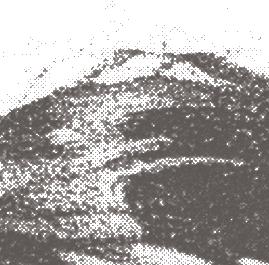
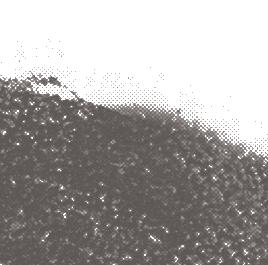











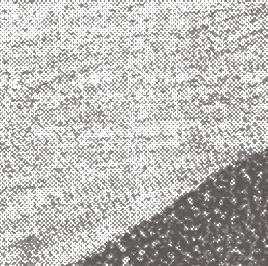








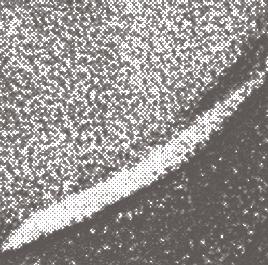



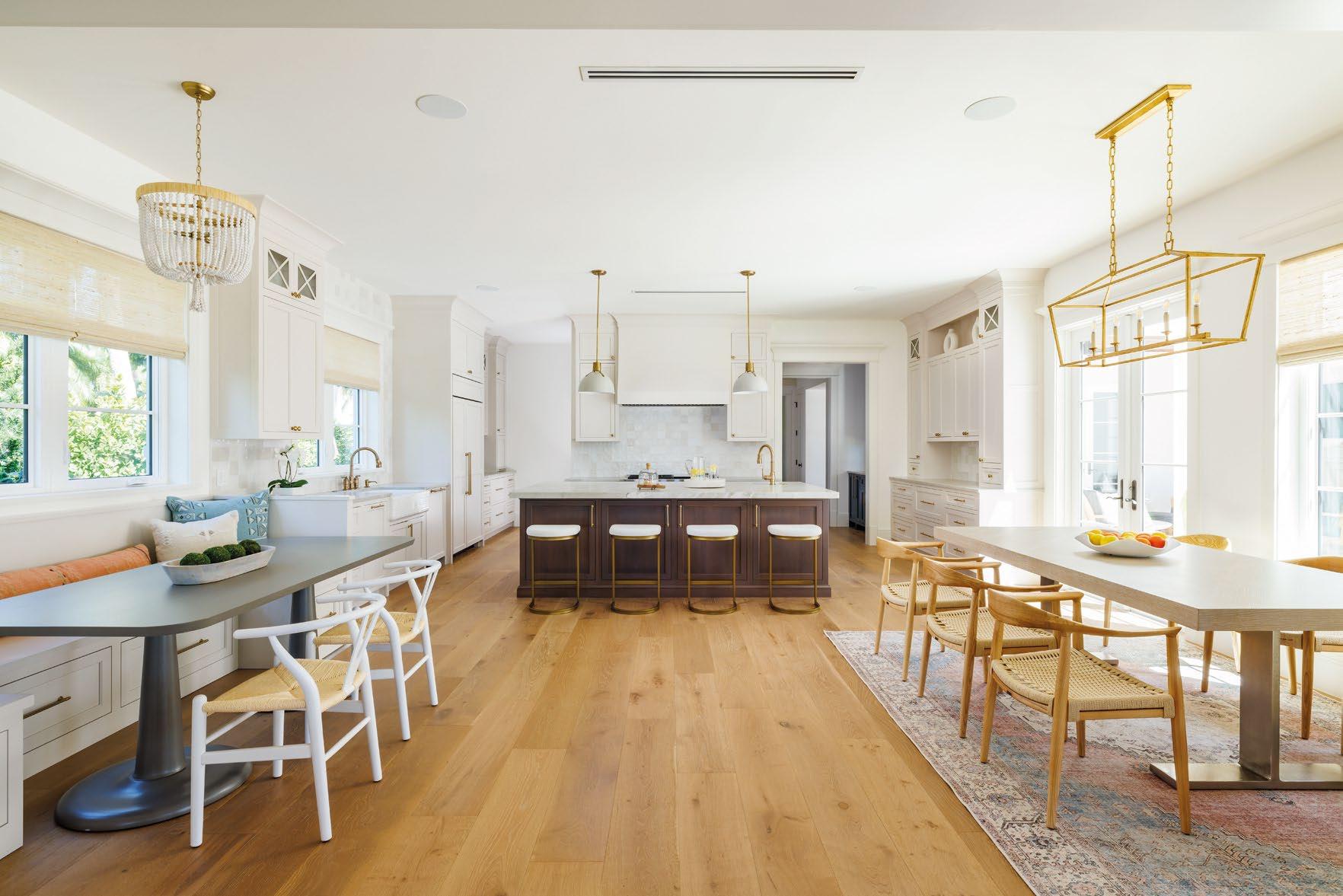
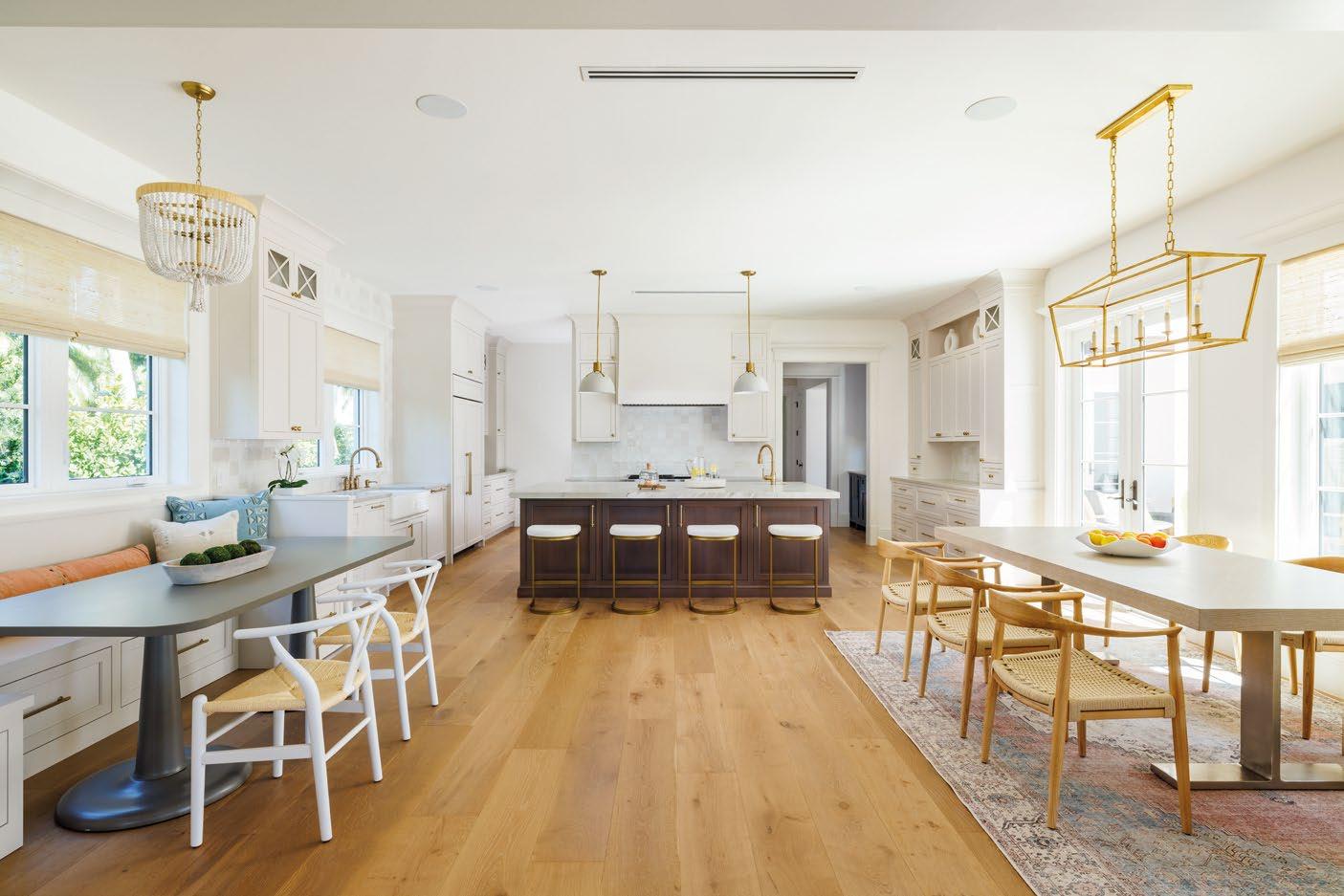
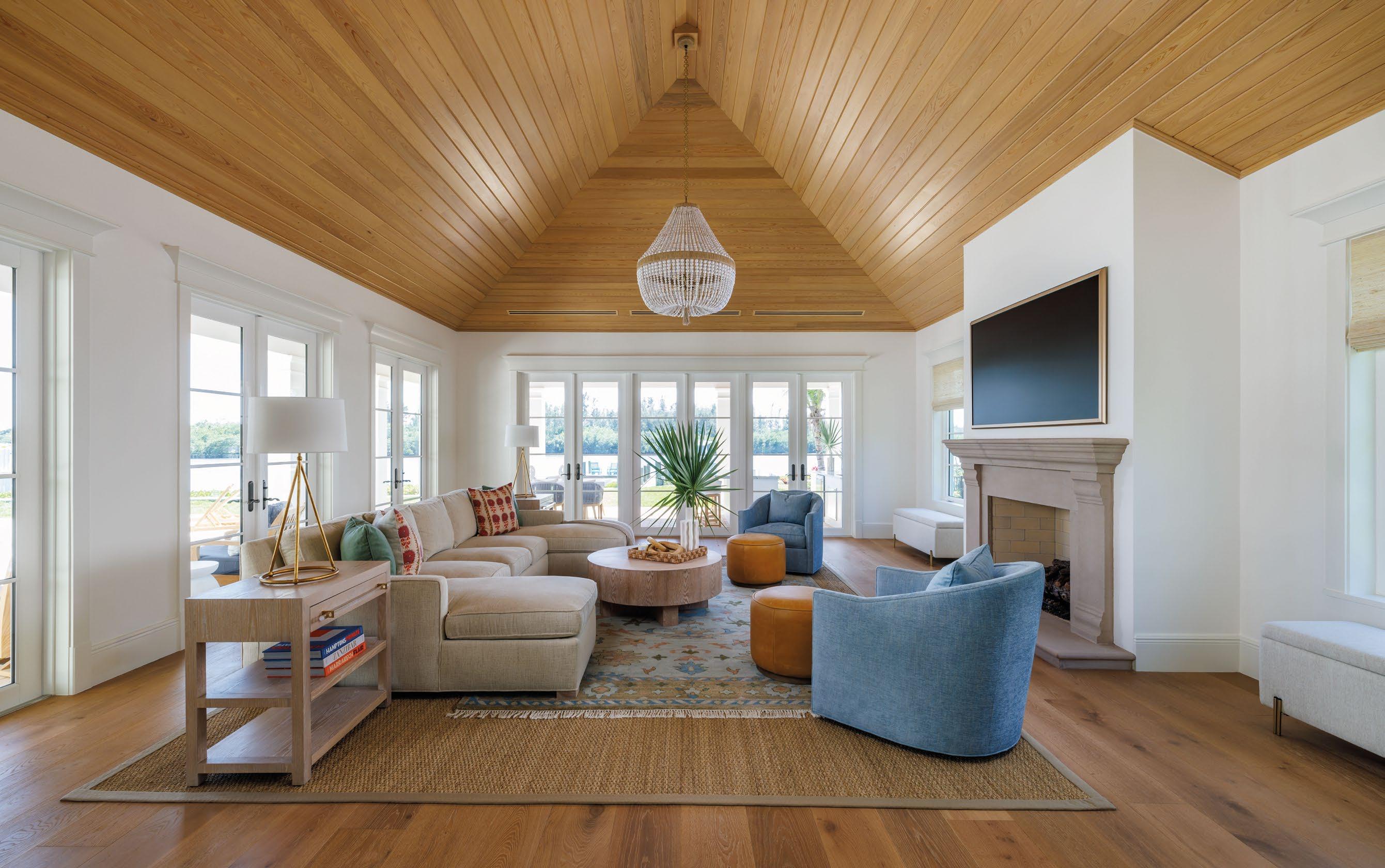

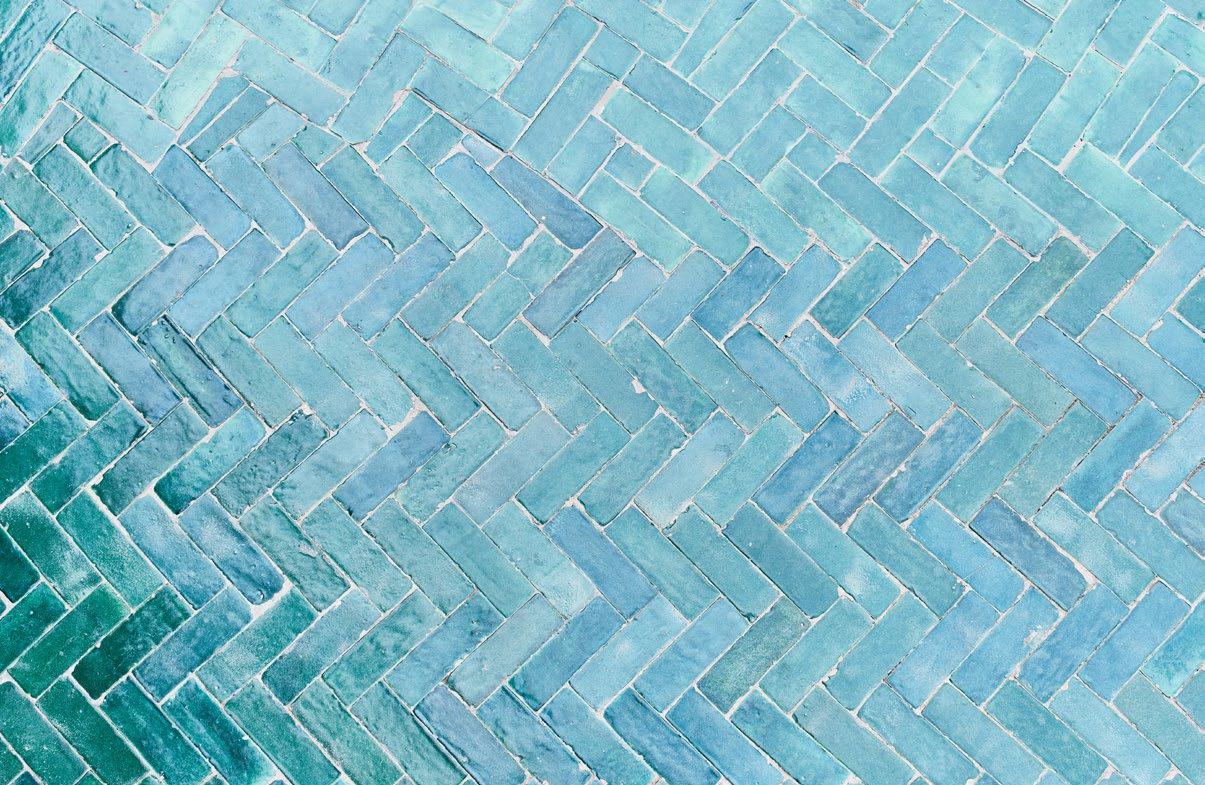
Subscriptions
Be
Send
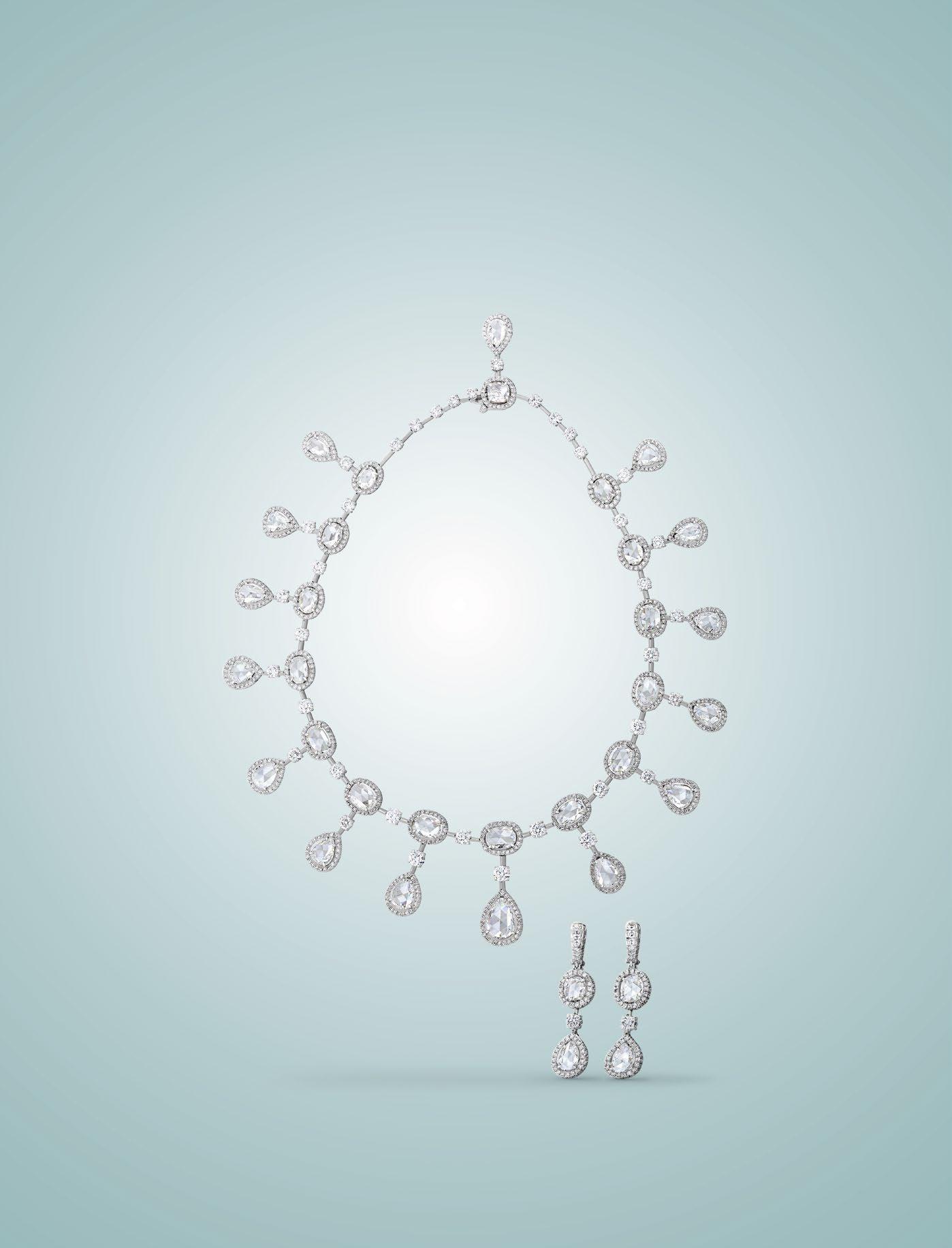

This is Issue 1, Volume 2 of LIV VERO Magazine. It is significant in marking the completion of our first publishing year, our practice being to publish ten issues per calendar year.
Starting the magazine has been a busy, engaging, energizing, draining, enjoyable, and even bumpy undertaking. In other words, it has been a true startup. Small businesses are not for the faint of heart. It takes enormous hard work, undying persistence, and fanatic belief that what you are doing is worth the effort. Hats off to all small business owners!
We are only just hitting our creative stride. We believe that we have successfully developed a distinctive brand and clean and artistic magazine look and feel. We intend to make it so much better still.
We have broadened our content scope to legitimately include both Home &
Lifestyle. We will remain appropriately weighted toward Home, while covering all of life in Vero Beach.
We have only scratched the surface of great editorial content. Our efforts confirm that Vero Beach is a treasure trove of great stories harking back to amazing people. We will double down on exceptional content creation.
We are on the path to developing an unparalleled platform for advertiser ROI. Print-based advertisements are only part of the equation. Add social media. Genuine partnerships are essential.
The cover is a stunning rendition of the world of Maxwell Muller, a son of Vero Beach devoted to cleaning up our environment by pioneering innovative solutions emphasizing the power of group action. For Maxwell, the state of environmental degradation is panic worthy. Our photographs channel his angst.


With hurricane season upon us, we delve into property “elevation,” an underappreciated real estate metric identifying distance above sea level. You should know your home’s elevation and risk of flooding.
We are honored to profile Chef Kevin Anthony, another Vero Beach son, who has made himself into an artisan of Italian cuisine. It’s joyous to appreciate culinary excellence at its highest level.
With pride, we offer multiple articles on our breathtaking natural environment. Our approach is to write detailed, substantive pieces to impart learning, and with it, engagement, caring, and involvement. Our topics feature sea turtles and oysters. Each will be covered in a series of forthcoming articles.


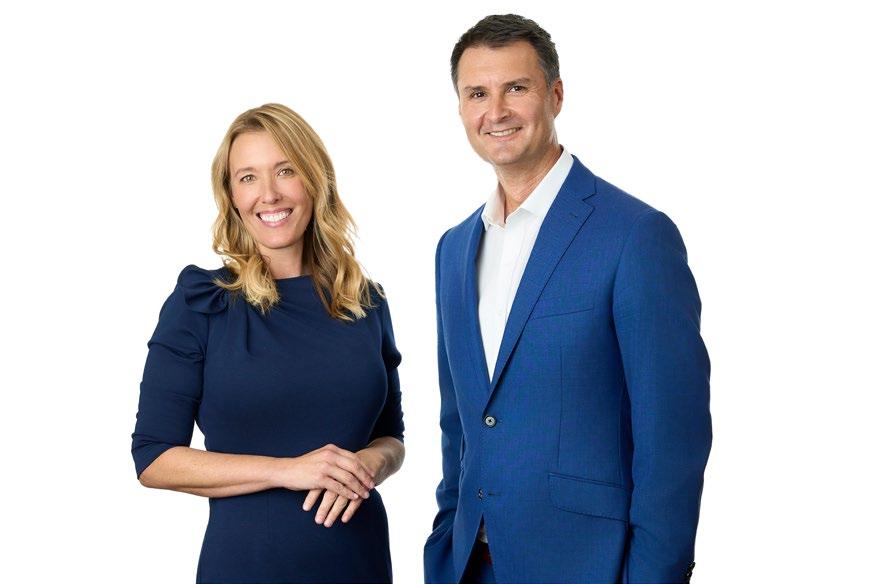


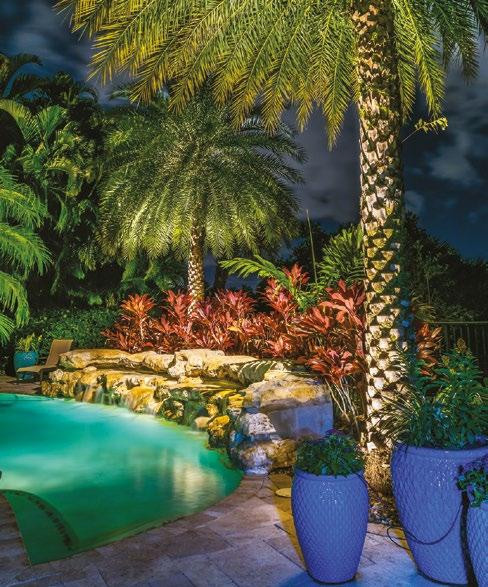

LIV VERO Magazine is a registered trademark of Orchid Island Publishing Group LLC.
CO-PUBLISHER | CO-EDITOR
Jim Field jim@livvero.com
Diane Field diane@livvero.com
CREATIVE DIRECTOR
Chris Foster
ASSISTANT CREATIVE DIRECTOR
Joshua McMiller
EDITORIAL
CONTRIBUTING WRITERS
Nancy George, Renee Morad, Brett Ringeisen
ART
CONTRIBUTING PHOTOGRAPHERS
Yuri Semenyuk, New York
Victoriya Knapp: realestatephotographybyvictoriya.com
ADVERTISING AND EVENTS
703-851-0703
DIGITAL
WEBSITE: livvero.com INSTAGRAM: @livveromagazine
ORCHID ISLAND PUBLISHING GROUP LLC
Vero Beach, FL 32963
President | Jim Field
SUBSCRIPTIONS
10 issues: $45. Subscribe at jim@livvero.com
POSTMASTER
SEND ADDRESS CHANGES TO: Orchid Island Publishing Group 3320 Cardinal Dr., Suite 648175
Vero Beach, FL 32963
LOCALLY OWNED & OPERATED
LIV VERO MAGAZINE: File No.: 440381.1 Serial No.: 98525418 (ISSN# pending) is published ten times per year by Orchid Island Publishing Group, 32963.
SUBSCRIPTIONS: Free of charge to qualified residents of Vero Beach. Publisher reserves the right to determine qualifications. Annual subscriptions: U.S. and possessions $45, all other countries $125 U.S. funds (via air mail). Single copies: U.S. and possessions $5. No part of this publication may be reproduced without the written consent of the publisher. The publisher does not warrant, either expressly or by implication, the factual accuracy of any advertisements, articles or descriptions here in, nor does the publisher warrant the validity of any views or opinions offered by the authors of said articles or descriptions. The opinions expressed are those of the individual authors, and do not necessarily represent the opinions of Orchid Island Publishing Group. Orchid Island Publishing Group makes no representation or warranties regarding the accuracy or appropriateness of the advice or any advertisements contained in this magazine.
SUBMISSIONS: We welcome submissions. Unless otherwise negotiated in writing by the editors, by sending us your submission, you grant Orchid Island Publishing Group permission by an irrevocable license (with the right to license to third parties) to edit, reproduce, distribute, publish, and adapt your submission in any medium on multiple occasions. Submissions will not be returned.

Engel & Völkers proudly expands luxury real estate services to Hutchinson Island!
Led by License Partner Claire Higgins, our new shop at 4007 N Highway A1A brings elevated listings and dedicated advisors to the Treasure Coast. Visit us to experience the charm of Hutchinson Island and discover how Engel & Völkers can be your gateway to remarkable properties and personalized service.
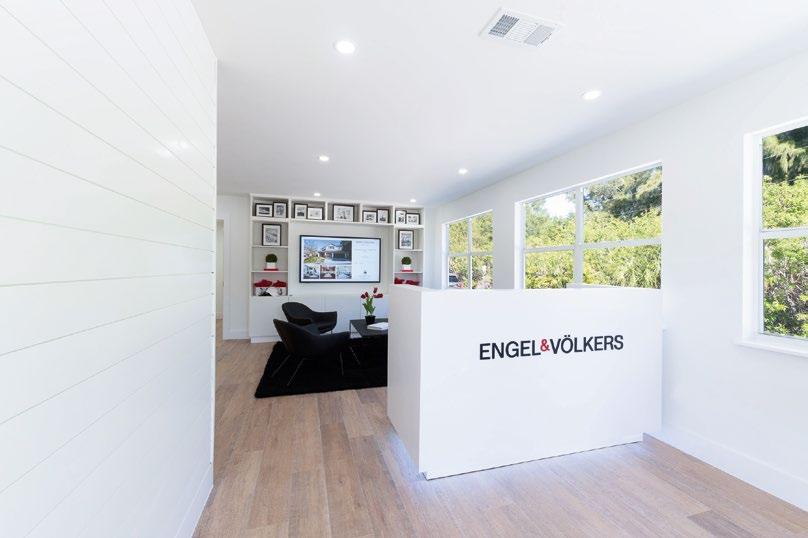

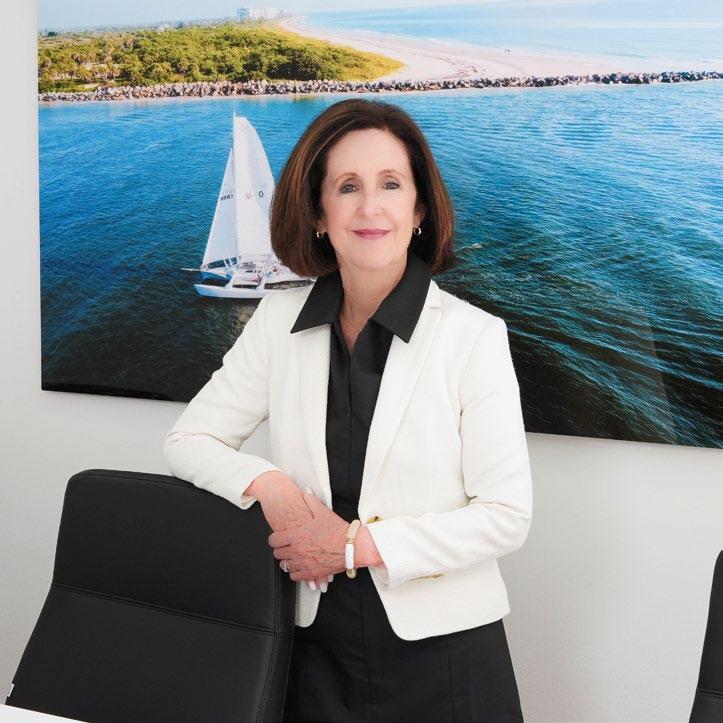
Visit us today or call to speak with a local adviso r.
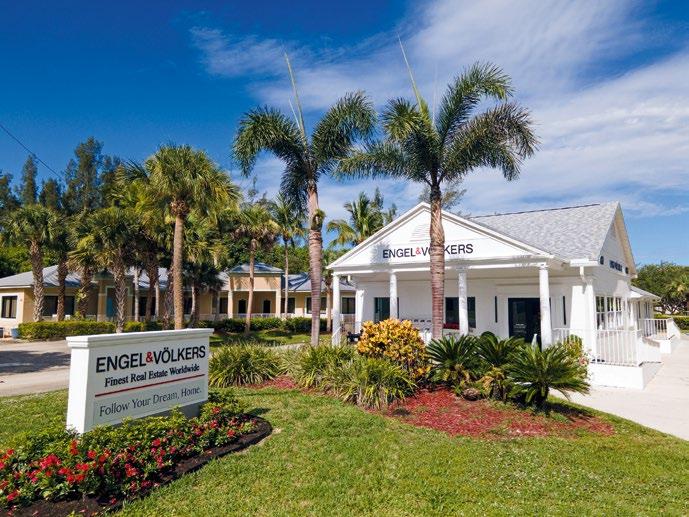
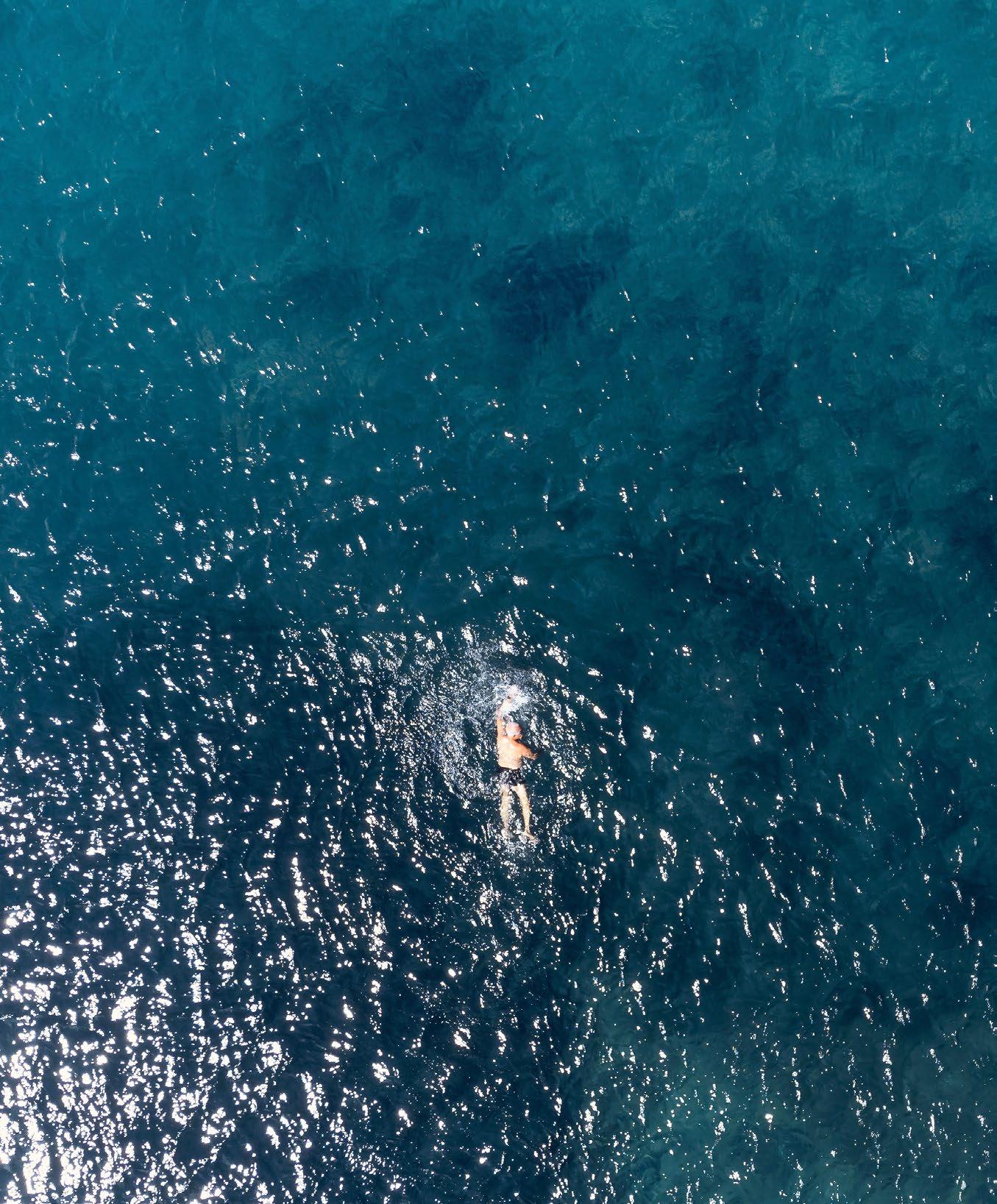


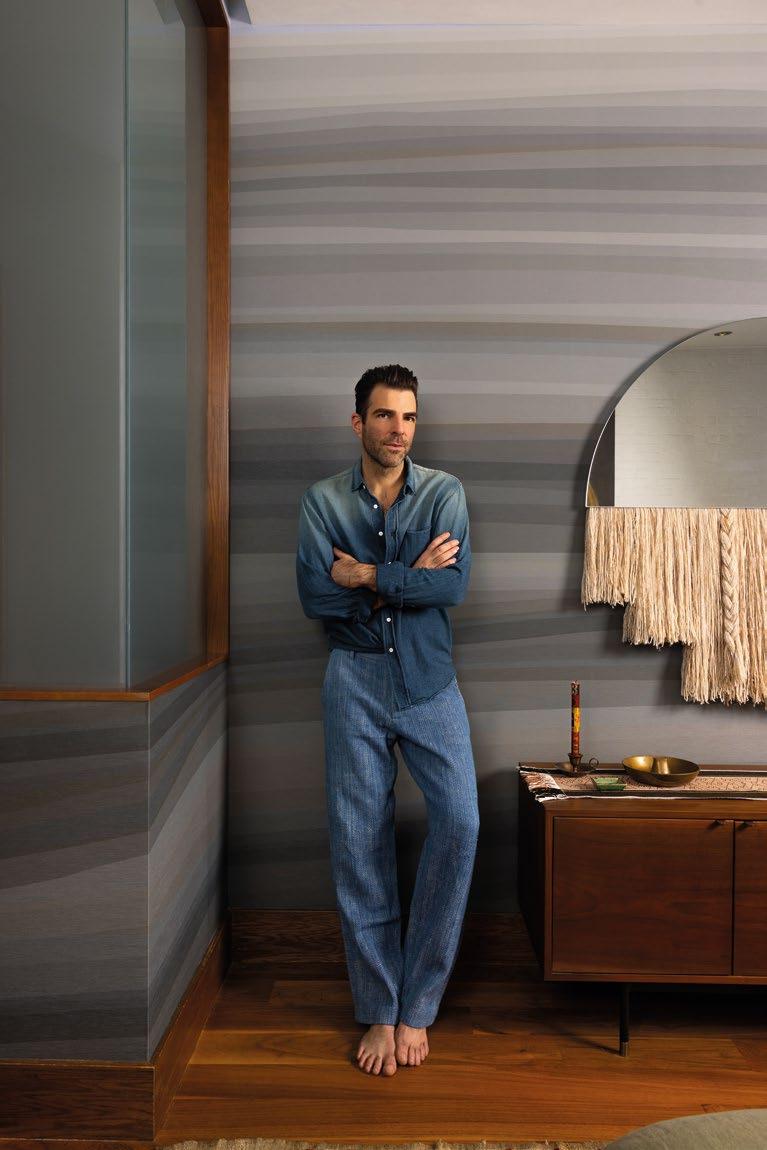
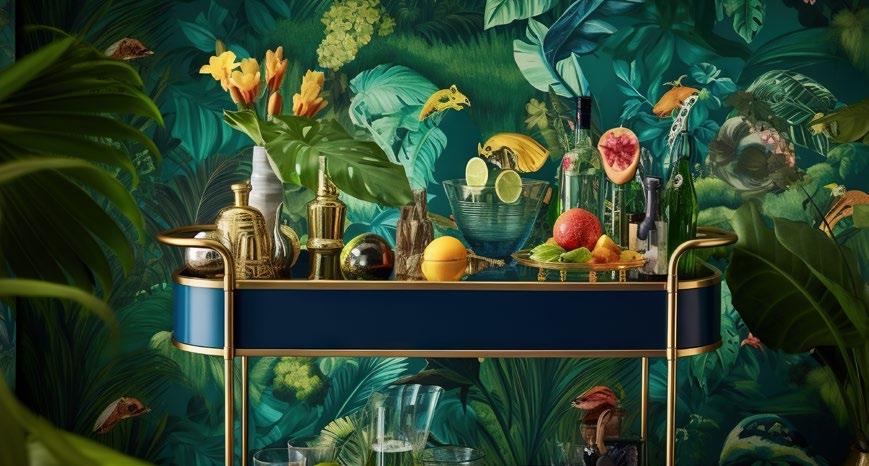
by Diane Field
Bar carts can be one of our most valued entertaining assets. They are functional, decorative, infinitely versatile, and dedicated to imparting pleasure, since their chief purpose is to locate libations immediately nearby ourselves and guests. And they do this efficiently and with aesthetic flair.
Bar carts began as tea trollies in Victorian England. They became highly fashionable following the repeal of Prohibition, becoming commonplace in US homes from the 1940s-1960s. They fell from favor once homes were fitted with wet bars and entertaining gravitated to the kitchen island.
Happily, they are back. Retailers offer hundreds of designs to fit every taste and purpose, which now goes far beyond staging alcohol. Indeed, a case can be made that every comfortable home with a social calendar should utilize one—or more—of them.
A KEY ELEMENT OF YOUR ENTERTAINING REPERTOIRE.
Begin by searching for a cart that fits your home’s aesthetic style—antique (wood, brass), modern (acrylic), minimalist (nickel), tropical (rattan). Choose your location, which will determine optimal shape and size. If you intend to move the cart between locations, ensure sturdy construction of frame, handles, and wheels.
Select a large enough size to adequately hold everything you want to convey— and beware of going too small. Two or three levels of shelving will significantly increase capacity. If the top shelf will be used to pour and mix drinks, allow enough space to hold necessary bar tools, ingredients, and glassware. Mirrored surfaces dress up even simple items.
Design-wise, a bar cart doesn’t have to look like a bar cart (think spheres). Similarly, functionality can extend to double-duty as an end table, a dessert table, an entryway table, a wine storage table, or a plant table. This versatility is what makes the bar cart such a valuable and exciting piece of furniture.
You will be playing with color, pattern, and texture. Resist the urge to fill every inch of surface and space, courting clutter, chaos, accidents and intimidating users.
Start (perhaps on the bottom shelf) with classic liquors—gin, vodka, rum, tequila, bourbon—and accompaniments—soda water, tonic, freshly cut lemons and limes. Be selective, not comprehensive. Serve two white wines, two red wines, three different beers. Flat and sparkling water. Use an ice bucket to keep selections chilled. Many cocktail recipes call for liqueurs as well, so cluster commonly used ones nearby.
Wine glasses can be hung in a compartment. Choose a single glass for red and white wine, another for beer, and two or three sizes for mixed drinks. Plastic stemware is a smart choice for patio and pool. Keep tools to a minimum: wine and bottle opener, shaker with strainer, stirring sticks, shot glass for measuring. Space allowing, a special decanter can be stunning.
Coasters and cocktail napkins can introduce whimsey and color. Cloth cocktail napkins bring an elegant touch. Add personal warmth with fresh flowers, an heirloom, framed photo. Finally, include a few choice options for those who don’t imbibe. Introduce an element of fun with garnishes like cranberries, mint sprigs, colored glasses and straws.
In sum, a wonderful aspect to all of this is that every entertaining event provides a new opportunity for restyling your bar cart to embellish and celebrate the occasion. Approached this way, your bar cart becomes a key element of your entertaining repertoire.
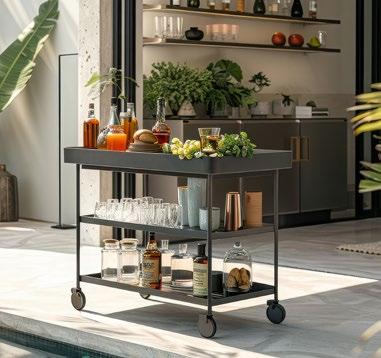
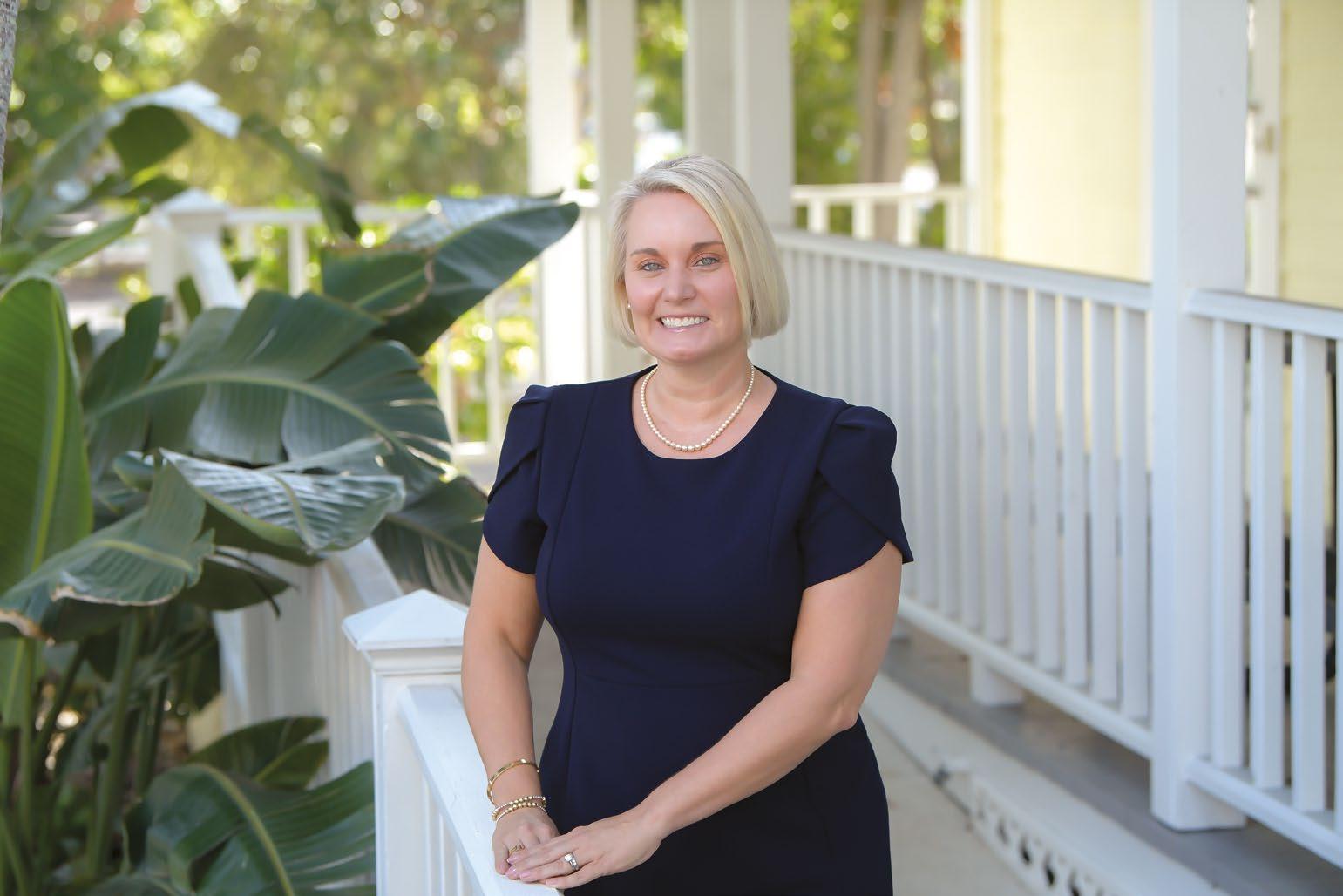
SERVICES PROVIDED:
• Estate Planning (including wills)
• Trusts
• Powers of Attorney & Healthcare Directives
• Probate & Trust Administration
• Business Entity Formation
• Real Estate (including full buyer & seller representation, closing agent title services, deedsa, leases & contracts)

by Jim Field
In the previous May/June issue this column profiled Spanish Architecture, whose inspiration traces back to the architecture of Spain and Mexico.
Today we unbundle Mediterranean Architecture, highlighting that few architectural styles are purely original, but incorporate and integrate the input of multiple surrounding cultures and design tastes, and thus are amalgamations of architectural inspiration.
To wit, Mediterranean Architecture is linked to aesthetics originating in southern Spain, France, and Italy, extending also to Greece, Malta, and Morocco. Visual and sensory associations evoke rocky coastlines, salty air, olive and fig trees, green hillside pastures—the beauty and elegance ascribed to Southern Europe.
Concisely described, Spanish Architecture is more rustic and handcrafted than general Mediterranean style. Its signature architectural elements include white stucco walls and red tile roofs; archways;
decorative tile work; heavy wooden doors with iron accents; exposed beams; small windows with wooden or wrought iron grilles.
In contrast, the Italianate Style traces back to 16th century Italian Renaissance country villas. Its characteristic features include low-pitched or flat roofs, sometimes with cupolas; wide eaves with decorative brackets (corbels); tall, narrow
windows, sometimes arched and paired; columns and other classical detailing.
Relative to these, if one were to isolate Mediterranean Style’s most distinctive trait, it would be the use of a broad range of colors, earthier tones like terracotta, brown, ochre, soft yellows, as well as pops of bright hues—light blues, bright whites, vivid yellow, pink, orange, green, relating to the nearby sea—with lush layering of organic materials and textures. A rich history of Mediterranean trade intertwined cultures to produce a rich, eclectic aesthetic.
Rounding out its look, key Mediterranean features encompass low-pitched or flat roofs with wide eaves; roof tiles in a broad range of colors; stucco exteriors in white, beige, warm earth tones; archways; natural stone and wood finishes; tiled floors using terracotta, mosaic, or patterned ceramic; large, numerous windows to create a bright, open interior; and emphasis on indoor-outdoor living spaces using expansive terraces or loggias.
Notably, “revival’ in architecture refers to the reinterpretation of historical design elements using updated materials, techniques, or designs to suit contemporary tastes and needs. In our forthcoming September issue, we will feature a stunning, impeccable Mediterranean Revival home created by an up-and-coming Vero Beach designer.
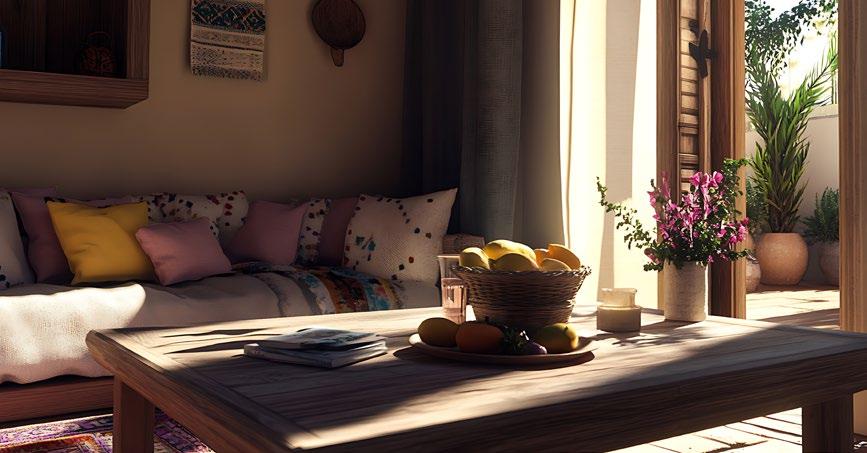
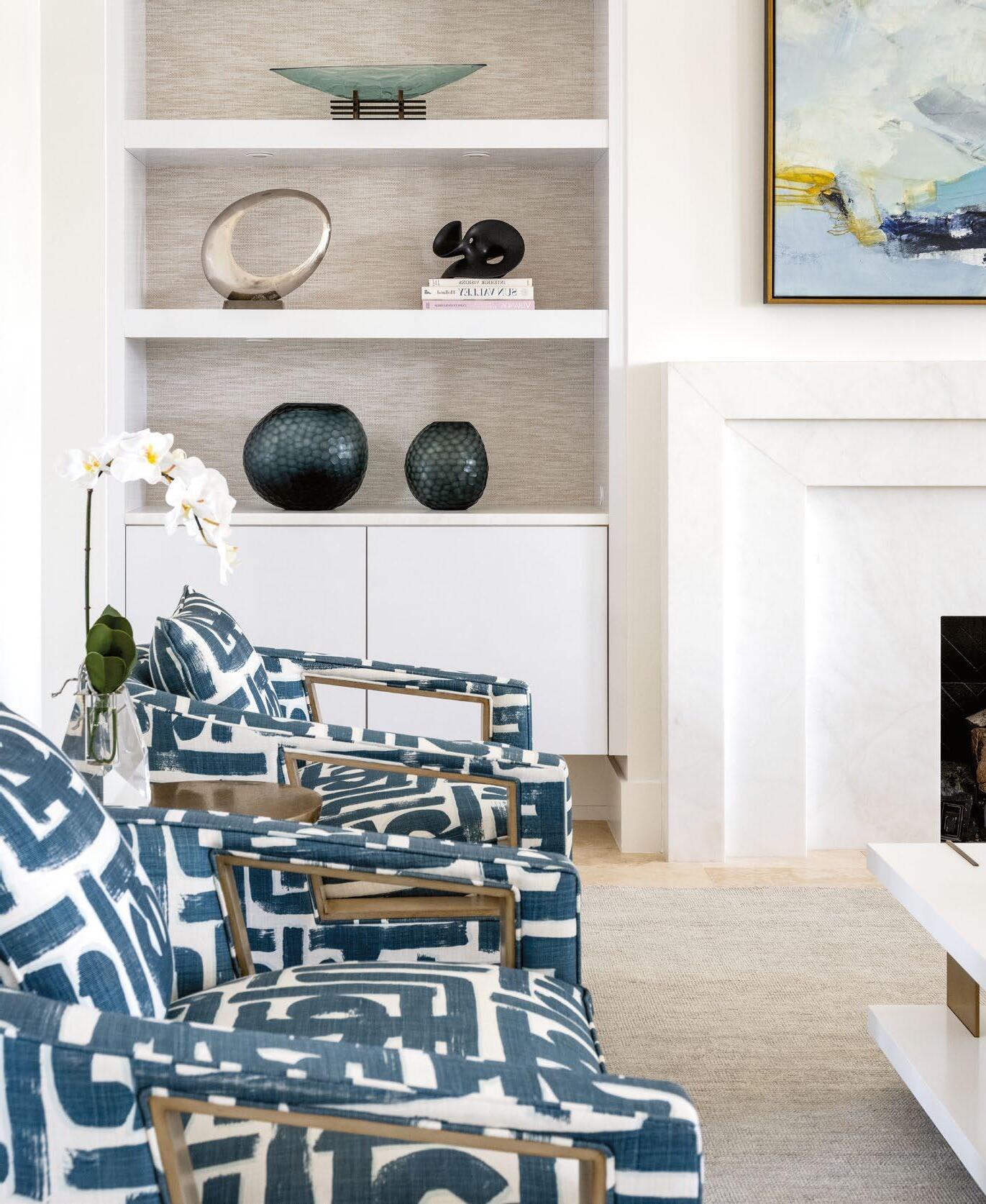


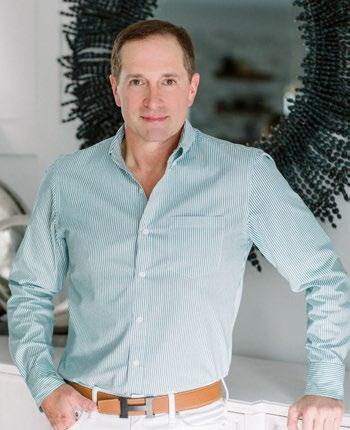
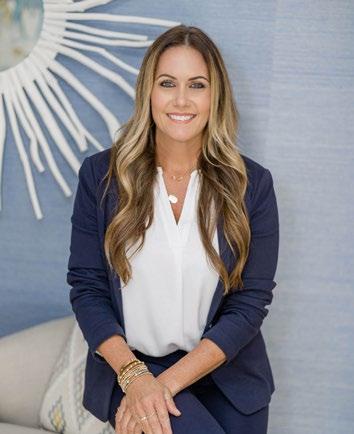
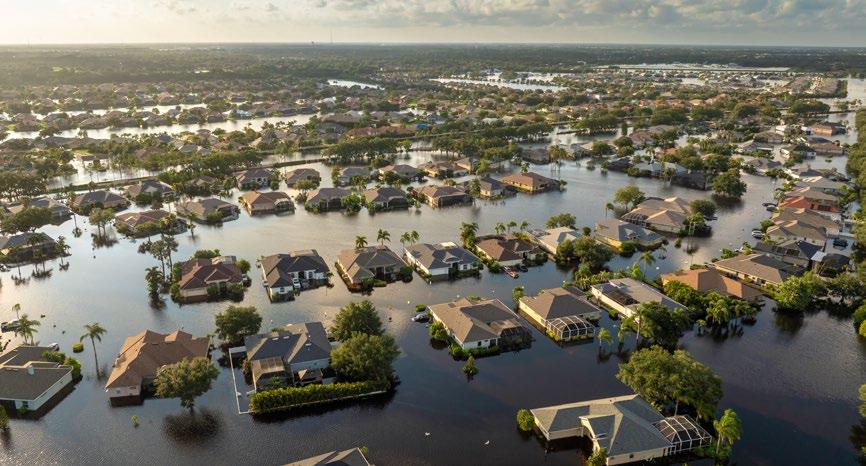
by Jim Field
Welcome to Hurricane Season, which began June 1 and extends through November 30. This is the period when many local residents suffer heightened anxiety about the safety of their homes and personal well-being should a major tropical cyclone strike our area.
These fears are justified and grounded in statistical certainty: Vero Beach will be impacted by hurricane activity each year and will at some point suffer a direct hit— this is known. Thus, it’s not a matter of if, but merely when.
This article discusses how to determine a property’s risk of flooding, which can impact purchasing decisions, new construction design, renovation design, and insurance requirements.
Take note: the City of Vero Beach has an average elevation of 23 feet above sea level, with sections of the barrier island ranging from at sea level to 13 feet above sea level.
Florida is hit by more tropical cyclones— i.e., hurricanes—than any other state— roughly 40 percent of 300 recorded hurricanes making landfall in the US
historically. If you deeply fear these storms, you might reconsider owning property in Florida even remotely close to the ocean or gulf.
The potential each year for large, powerful, cataclysmic weather events is a fact of life in Florida and Vero Beach. In any given year, the “big one” could visit our shores . . . or not. Since 1930, Vero Beach has been impacted by 73 hurricanes.
Damage produced by tropical cyclones is a combined function of three main causes. First, of course, wind. Second, flooding from rain, related not to the intensity of the system, but its relative speed, and therefore how much water is dumped on a location. And third, storm surge, or the wall of water that is pushed onshore as the system meets land.
There are four levels of tropical cyclone defined by maximum (one-minute) sustained surface wind speed: tropical depression, 38 miles mph or less; tropical storm, 39 to 73 mph; hurricane, 74 to 110 mph (categories one and two); and major hurricane, 111 mph and higher (categories three and four). For those who’ve never experienced these disturbances, mere 60 mph winds are frightening.
In Vero Beach, September is the leading hurricane month, followed by August and October. Of total cyclones, there is roughly an even split between tropical storms and hurricanes. On average, Vero is brushed by or hit by a hurricane every 2.4 years. Average duration between a direct hurricane hit (hurricane force winds for a few hours) is 6.2 years. Average years between a major hurricane hit is 21.2 years. The last serious hurricane to impact Vero was Dorian in 2019, a category five that stalled over the Bahamas, causing, in that country alone, 245 deaths and $3.4 billion in damage.
Homeowners have a vested interest in protecting their residence and personal property—for many, their single largest assets—from damages. Conventional home insurance policies cover ten major perils, including fire and smoke, lightning, windstorms, and vandalism. To protect their investment, mortgage lenders require borrowers to purchase an adequate home insurance policy.
However, standard home insurance does not cover flood damage, which can range from relatively minor water intrusion to completely destroying a dwelling. Still, for homeowners residing in areas exposed to flooding by natural disaster, managing the largest risks to their homes should include considering the additional purchase of flood insurance. Yet only a very small percentage do—roughly 15 percent in Indian River County.
The federal government, through the Federal Emergency Management Agency (FEMA), plays a decisive role in operationalizing the US flood insurance marketplace. Within FEMA, the National


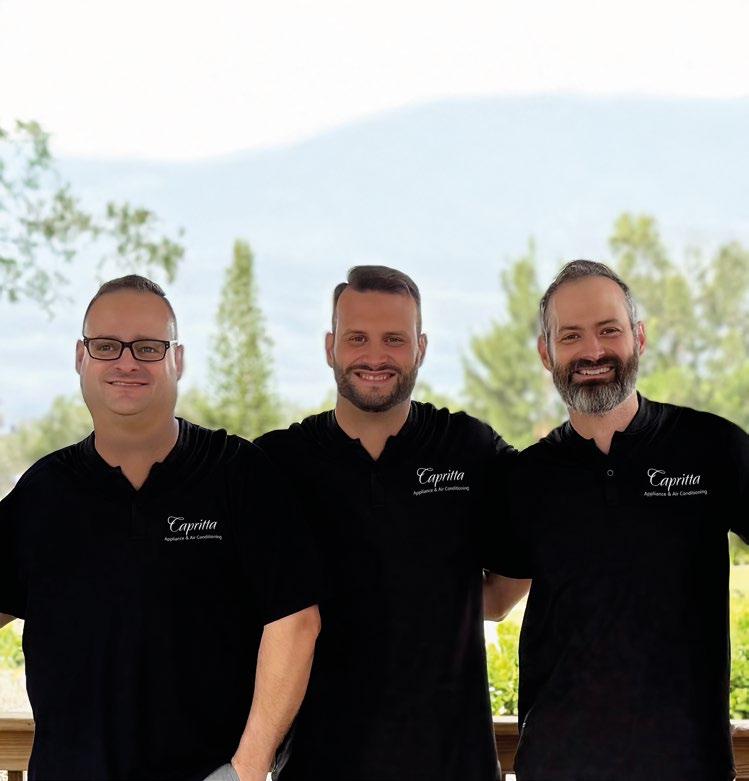
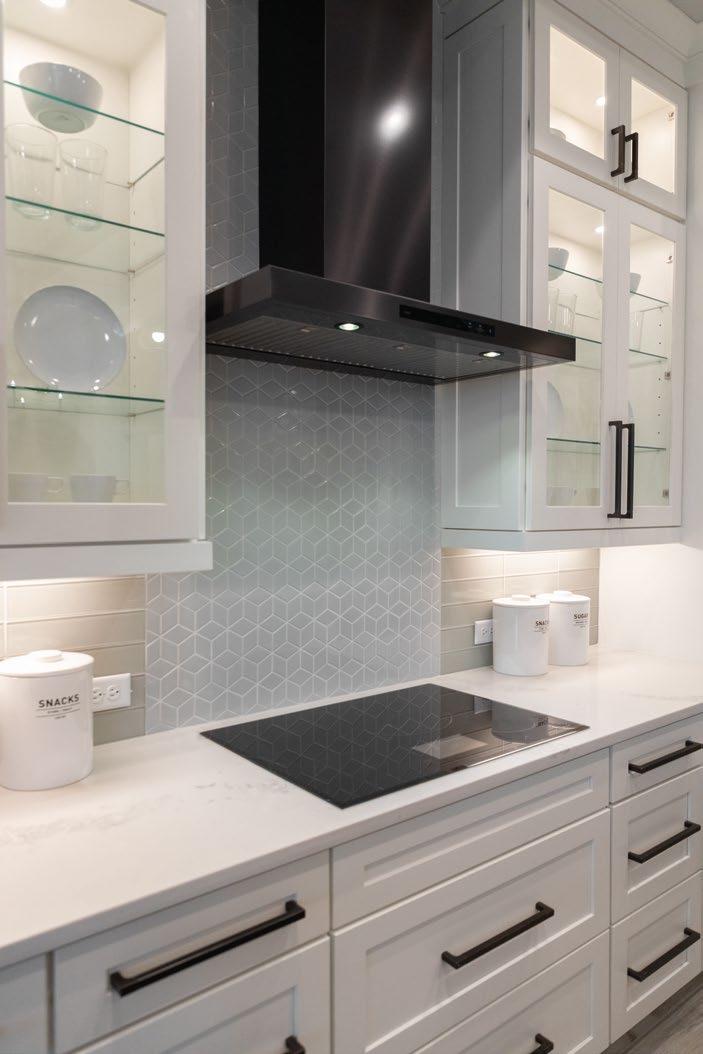



At Capritta Appliance & Air Conditioning, we’re with you for the long haul — from your first AC tune-up to your next kitchen remodel (and every appliance in between).
• Shop Smart. Local luxury showroom, top brands, expert advice, and no pushy salespeople. Just honest help from folks who know their stuff.
• We Fix What We Sell. In-house, factory-trained techs who show up on time and get it right the first time.
• Easy Replacements. When it’s time for an upgrade, we make it simple — from install to haul-away.
• One Number. One Team. For Life. We’re here when you need us. Since 1982.
Pro Tip: Choosing appliances should be the first step in a kitchen build-out. You can easily customize cabinets to work around your appliances, but you’re much more limited with your kitchen functionality when you’re forced to fit appliances into an outdated cabinet layout.
2585 W New Haven Ave. West Melbourne 321-676-0111
www.caprittaappliance.com

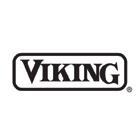

Flood Insurance Program (NFIP) serves as the primary source of flood insurance coverage for US residential properties.
FEMA employs extensive databases and analytics to produce Flood Insurance Rate Maps (FIRMs), which graphically delineate assessed flooding risk, providing visibility down to the individual property level. You can access Indian River County’s latest FEMA map by searching online using “Indian River County flood maps” (or a close derivative).
Viewing the map, you will find “Special Flood Hazard Areas” defined by a series of Zone designations, color-coded on the map (overall there are nearly 20 different Zones.) Simply described, minimal flood hazard areas are designated Zone C or Zone X (unshaded). Moderate flood hazard areas are labeled Zone B or Zone X (shaded). Areas at greatest risk are designated Zones A, AE, and V. Take note that all oceanfront properties are assigned Zone VE: Coastal Floodplain. Because of Vero Beach’s geographic orientation, you can see that large swathes of residential properties have Zone A designations.
For properties without a mortgage, homeowners can elect to purchase primary flood insurance or forego it, similar to whether or not they choose to purchase a standard home insurance policy.
However, things are different if a mortgage is involved. Historically, banks have not required primary flood insurance for homes located in lowest risk Zone X (unshaded). Conversely, banks have required flood insurance for properties located in all higher risk zones. For the bank, it’s just additional protection on their investment in the presence of higher disaster risk.
What’s important to know is that FEMA is revising its methods and making it possible for more homes to be upgraded to higher risk zones. FEMA makes a change; banks pick up on this; and affected homeowners are notified by their bank that they are now required to purchase flood insurance.
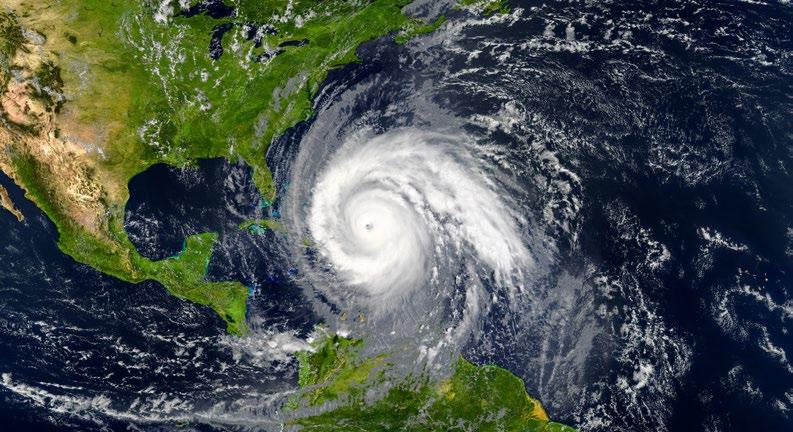
Furthermore, some home insurance carriers are requiring select homeowners in Zone X-even if not required by the bank—to purchase flood insurance because their properties are contiguous with, or in proximity to, Zones A, AE, and V. Some banks are imposing new flood insurance requirements for select Zone X properties—no explanation forthcoming.
Why is FEMA doing this? While explanations vary, skeptics trace it back to FEMA’s heavy debt and extreme risk exposure in coastal areas. By placing more homes into higher risk zones, the greater number of homeowners will be paying into the premium pool, producing more income coming into government coffers to cover storm damage payouts.
All this points to a benefit for prospective home buyers and homeowners alike to find out the elevation of a property in question. In all candor, when I purchased multiple homes on the island, I made no effort to learn their elevations. Based on what I understand now, I’m every interested to establish this on my current property.
Land elevation surveys allow property owners, architects, engineers, and insurance companies to understand the landscape’s topography, boundaries, and flood risk. They contain critical details regarding the property’s elevation relative to the floodplain, significantly influencing construction projects, insurance premiums, and legal disputes.
You may need an Elevation Certificate if you are making substantial improvements that change your property’s lowest point of elevation—for example, when building underground additions or converting a basement into a living area. In addition, an Elevation Certificate is required by FEMA and private insurers when seeking flood insurance.
Note that property surveys and elevation surveys are two different things. A property survey is essential when you’re buying, selling, or developing land, as it identifies a plot’s property lines, acreage, and physical structures (helpful in preventing disputes with neighbors).
In contract, an Elevation Certificate focuses on your property’s elevation levels and flood risk, including:
• The lowest point of elevation on the property—the area of your property with the highest risk of flood damage based on FEMA guidelines.
• The plot’s FEMA flood zone determination.
• The property’s building characteristics relevant to flood risk-notable structures including garages, sheds, and pools.
Most companies licensed to perform property surveys also perform flood surveys. Generally speaking, the cost for an Elevation Certificate ranges from $500$2,000 depending upon type of property and amount of land.
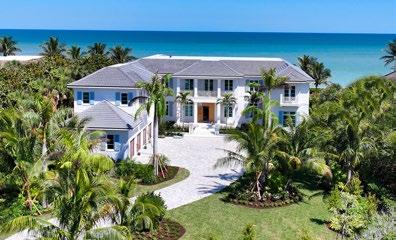

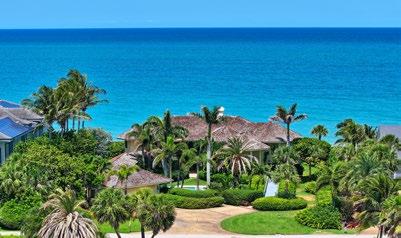
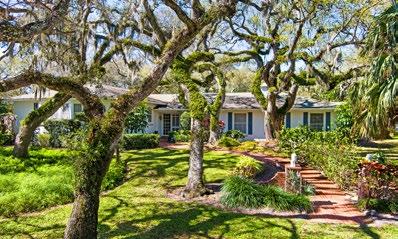
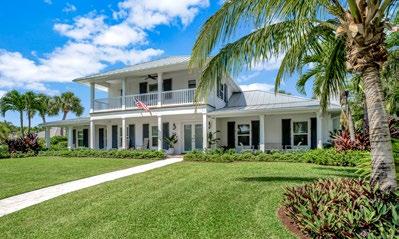
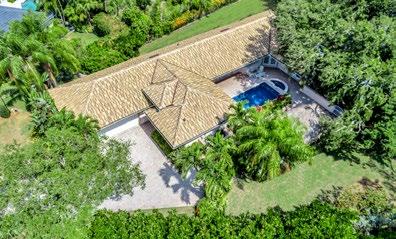
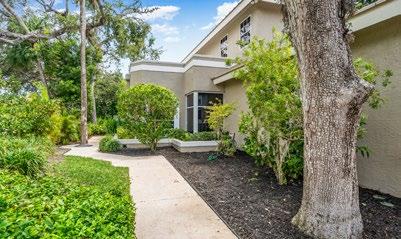
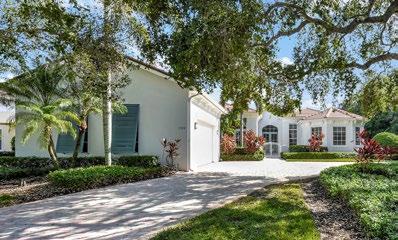
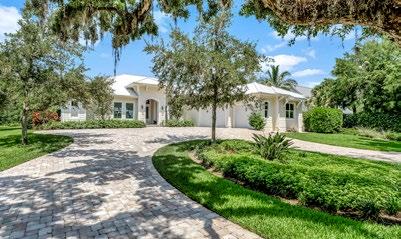
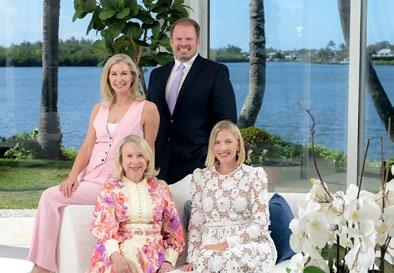
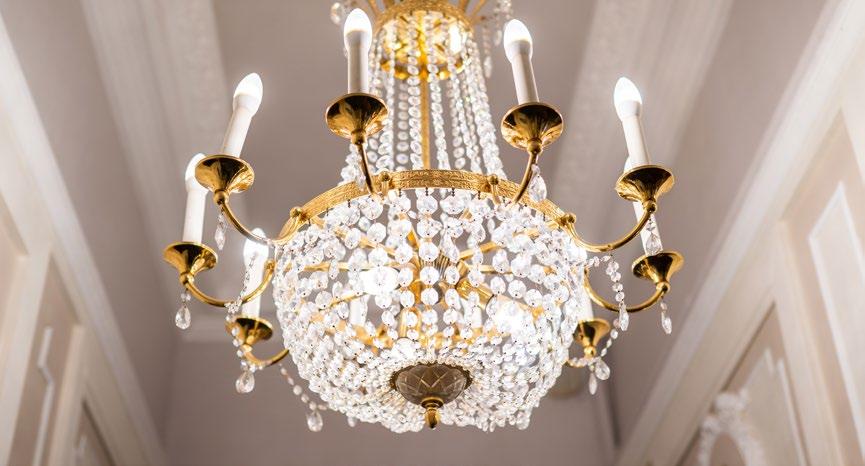
by Diane Field
Chandeliers are a major design element in the home—or at least they should be thought of this way. Paint and fabric make strong visible statements, but not more than artful fixtures suspended from the overhead, anchoring a room’s focal point, casting light on everything.
Chandeliers can be complicated to do well. There are nearly infinite shapes, materials, and sizes to choose from. Some homes may have two, five, even more of them. They can make a dramatic impression on first encounter, or only be noticed when seated in a room. Each chandelier may be specific to a single space; alternatively, there may be a unifying theme.
Above all else, chandeliers should be fun! Consider them a room’s jewelry, showing off a homeowner’s personal style. You can go traditional, modern, rustic, industrial, boho, and dozens more styles. Your selection can evoke quiet sophistication or drama. As a category, chandeliers arguably provide more creative freedom than any other design element—and they’re three dimensional and floating!
Chandeliers date back to medieval castles and churches, with candles used in large numbers for illumination. In European palaces and later 20th century mansions of America’s wealthiest families, they became a symbol of wealth and elegance. Size mattered.
Formally described, a chandelier is a decorative light fixture that hangs from the ceiling by a chain, rod, or cord. It will contain multiple arms or branches and two or more candles or light bulbs arranged in any design. Common materials include metal, glass, crystal, wood, beads/ shells/capiz, and modern composites (as sculptural art, they can be made of anything.)
Notably, not all hanging lights are chandeliers. Those falling short include pendants, given a single light source, and lanterns, enclosed in a cage, and track lighting, cans in a row barely lower than the ceiling.
Chandelier Locations
It is almost easier to identify spaces in a home where a chandelier would be out of place. My childhood home had a single chandelier, located in the dining room. (Anything more would have been extravagant.) As previously mentioned, numerous chandeliers in a home— particularly if located within sight of each other—can present a challenge: should they coordinate in style, materials, and size; closely, loosely, or not at all? Lots to think about.
• Front porch. First impression.
• Foyer or entryway. Glimpse of what follows.
• Dining Room. Classic location.
• Living Room. Anchor a seating area.
• Bedroom. Introduces softness, romance.
• Bathroom. Adds glamor and scale.
• Kitchen. Not just any kitchen.
• Stairwell or landing. Accentuates vertical space.
• Closet or dressing room. Boutique ambiance.
• Home office: Success and fashionable.
• Covered porch or patio. Style outdoors.
Shape and Form
While the shape and form of chandeliers is only restricted by the creativity of designers and craftsmen, there are standard configurations and contours that help categorize them into groups for sorting through large inventories.
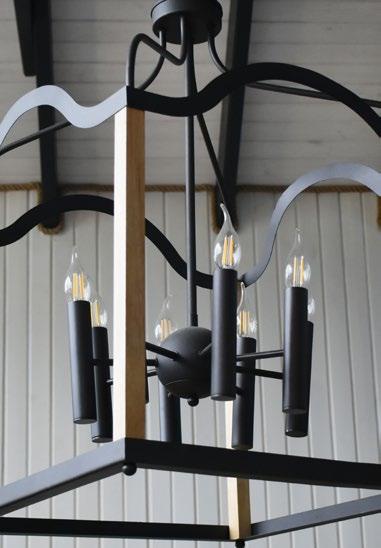

• Tiered chandelier. Multiple stacked levels of lights.
• Drum chandelier. Lights enclosed in a drum shade.
• Linear chandelier. Long and horizontal.
• Globe chandelier. Lights enclosed in a sphere.
• Candle chandelier. Bulbs imitating flames.
• Raindrop chandelier. Cascade of crystals or glass.
Imperatives
Always use dimmers. Be extremely careful not to undersize or oversize the chandelier’s size for a given space—it will instantly look wrong. Clean at least twice a year—visible, collected dust ruins the effect. Ensure the chandelier’s weight is not excessive for the ceiling’s construction. Don’t hang the chandelier too high or too low: have an expert assist. Don’t overlook antiques: many are treasures for a discounted price. On holidays, entwine fabric or greenery and/or hang ornaments and curios for a special touch.
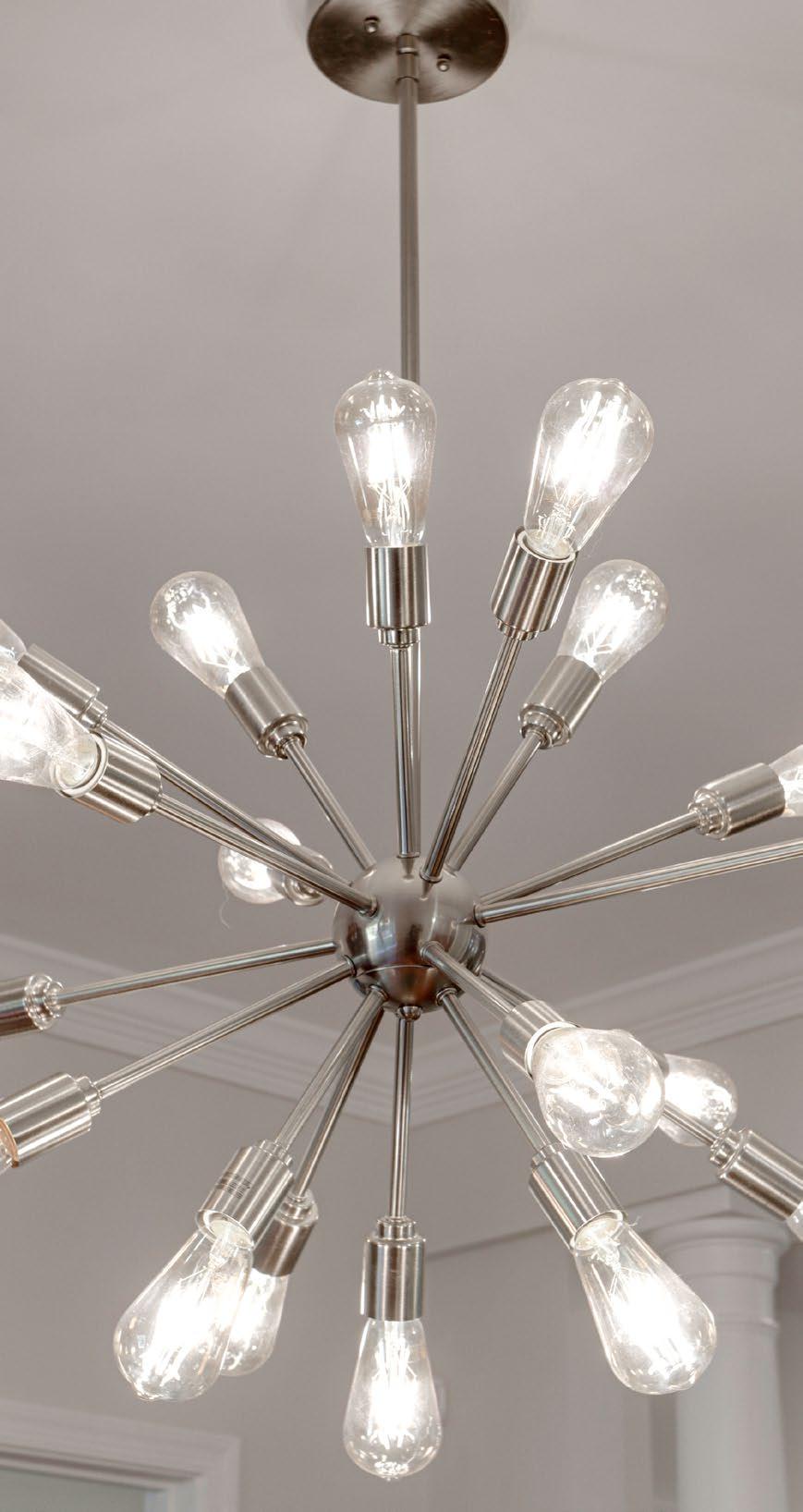

by Jim Field
In our prior May/June issue, we wrote about the various types of wood flooring available to homeowners, a range of products to meet individual tastes and material requirements. Specifically, the four major options are engineered wood, laminate, luxury vinyl, and porcelain tile.
This article extends this discussion to purchase and installation: observations and lessons drawn from experience in acquiring new flooring.
The prior article merely stated that installation was critically important to a high quality floor—every bit as much as the materials themselves. This statement is truth—underscore and remember it. Still, the entire purchase/installation process can get complicated.
Baseline Scenario
You have decided to replace carpeting in your bedrooms with an alternative material, and you’re thinking wood. The main living areas in the home have travertine flooring. You’ve never replaced a floor before and recognize you have a lot to learn.
Your process should begin by going online and educating yourself about wood flooring. A one hour investment of time will make you a genius, lifting the burden of having others teach you from scratch.
Follow this up by selecting at least two local flooring companies and visiting their showrooms. Two is important to ensure exposure to a full range of products and work with different consultants, whose opinions, insights, and messaging may align or be different. Pick up on the differences.
Ask to be shown all four wood flooring options and hear a description. Study examples of each to visually and physically understand the products and how they are unique.
Select one of the products as your preferred flooring. Your decision should be based on some combination of price, appearance, and material. Let’s assume you choose engineered wood. Next, begin the process of selecting plank width and length, both of which will impact appearance and price—the wider and longer, the higher the cost.
Finally, begin the process of selecting a color and pattern—for example, formal versus rustic, knots versus no knots. Here, you will want to match your wood with your existing travertine floor—i.e., have them complement each other to your taste. Select half a dozen samples and lay them on the showroom floor. Inspect them carefully from every angle—as individual pieces and compared to one another.
Based on what you see and learn, perhaps remove some samples and add others. The end goal is to decide on four to six samples to take home with you. Go through the same exercise at the second showroom and select four to six more. (Write down which samples came from which showroom.)
Loading the (heavy) product samples into your car, you will immediately notice that their color—as perceived inside the showroom—changes significantly in natural light. In fact, you will be astounded by how much.
Once at home, carry the samples into your home and place them in the first bedroom, carefully observing their color and how they appear against the travertine. This particular room might be darker or lighter than the others, be painted a unique color, or have unique window treatments. Spend at least 15 minutes forming opinions.
Next, carry the samples to the remaining two bedrooms, and replicate the process. Lastly, place the samples directly on the travertine in two or three locations. The end goal should be to select three favorite samples and rank order them. Load them back in to your car and return to the showroom.
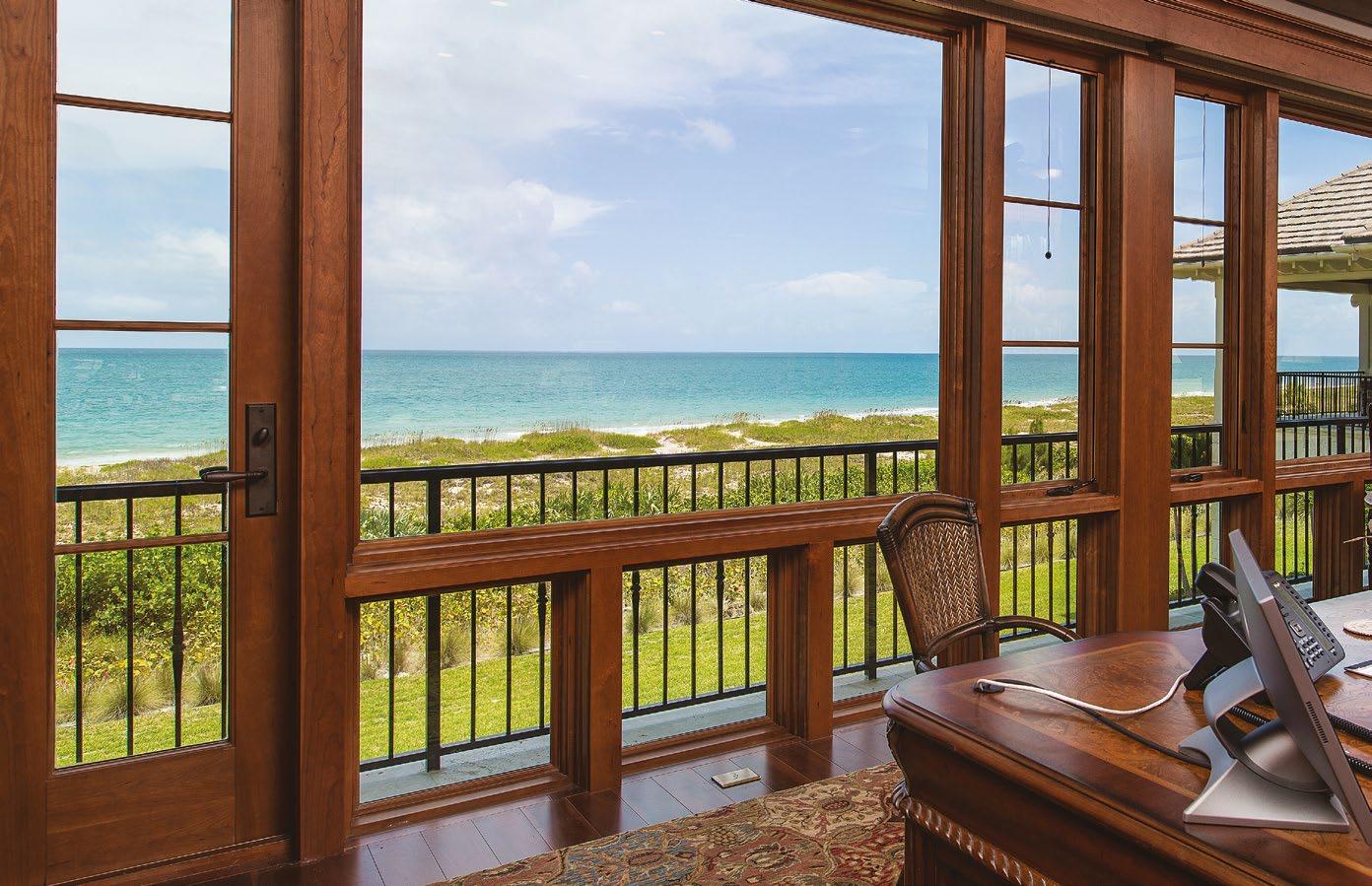
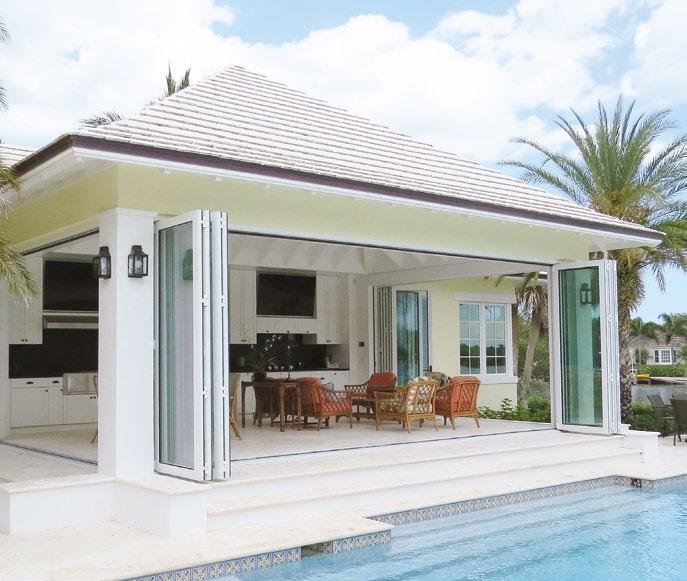
•
•
•
• Featuring
•


Back in the showroom, share your results with the consultant. Ask her/him to price out each product by square foot. Next, ask the consultant to look up their availability— that is, if you place an order today, when would the product arrive at your retailer. This is important: you may not want to wait on a product that will take three months to ship; alternatively, you may not care. Knowing price per square foot and availability, you’re ready to make a final (albeit still provisional) selection.
At this point, you could ask your consultant to prepare a written cost estimate. You’ll need to provide a floor plan to determine square footage of the spaces to be covered. Doing so, the consultant will apply the known cost per square foot for the selected product and multiple this by an estimated installation cost per square foot, arriving at a total project cost. Note, however, that the installation cost will be a guess, since the consultant won’t know the actual status of the current subfloor, and what alterations may be required to make it into a perfect subfloor (i.e., level, consistent). This unknown is an important variable, since unforeseen improvements may increase the cost of installation by a significant (shocking) amount.
A better alternative path is to ask the consultant to visit your home to see things in person. The consultant can measure the square footage, look for potential difficulties/anomalies, assess the condition of the baseboard that will have to be removed and re-installed, and peel back carpeting in each bedroom to inspect the existing subfloor. Keep in mind that anything can be discovered. Perhaps the plywood exposed is poor quality and/or poorly installed and needs replacement.
Perhaps there is no moisture barrier between the concrete pad and plywood (thank you prior installers!). Perhaps the plywood is too thick, producing an accentuated difference in height between the travertine and your new engineered wood, and thus a clumsy step-up or
Photographs by Jim Field

step-down transition. Worst of all, what if the plywood shows evidence of water intrusion and mold? Then you’re looking at delaying the new floor until you bring in a restoration contractor to assess water damage and mold types and prevalence, and if necessary, conduct needed repairs and remediation.
All to say that you won’t know any of this—and anything is possible—until you look. And so you won’t know the cost of installation and total project cost with any exactitude. Further, based on what you find, you may want to switch out engineered wood for a more resilient product, say porcelain tile, thereby eliminating any risk of damage from moisture.
At the end of this visit, you’ll have a much better picture of installation requirements and cost. Should there be a need to bring in additional experts to assess conditions and devise a plan for correction, then so be it. Finally, you can ask your consultant to prepare a written cost estimate, to include a timeline for completing the project. You can have confidence in these projections.
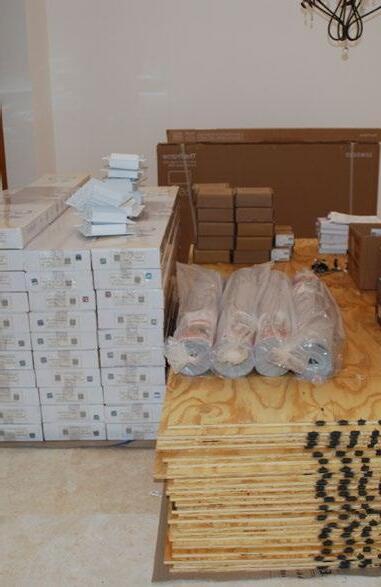
Had you requested a written cost estimate upfront, signed a contract, and paid for the engineered wood, all this valuable learning would await in the future. Your expected cost could escalate wildly. Your installer may not recommend a perfect solution to create a perfect subfloor (because of their way of doing things), and you would be beyond seeking a second opinion. So too, it would be too late, if desirable, to switch out your purchased product for a more appropriate one.
• Do your homework upfront.
• Visit multiple retail stores/showrooms.
• Evaluate all possible products.
• Bring your favorite samples home to assess.
• Price out your top three favorites, check their availability dates.
• Invite your consultant to visit your home to assess conditions.
• Based on all discoveries and recommendations, confirm your choice of product.
• Ask for a written cost assessment: product, square footage, true installation.



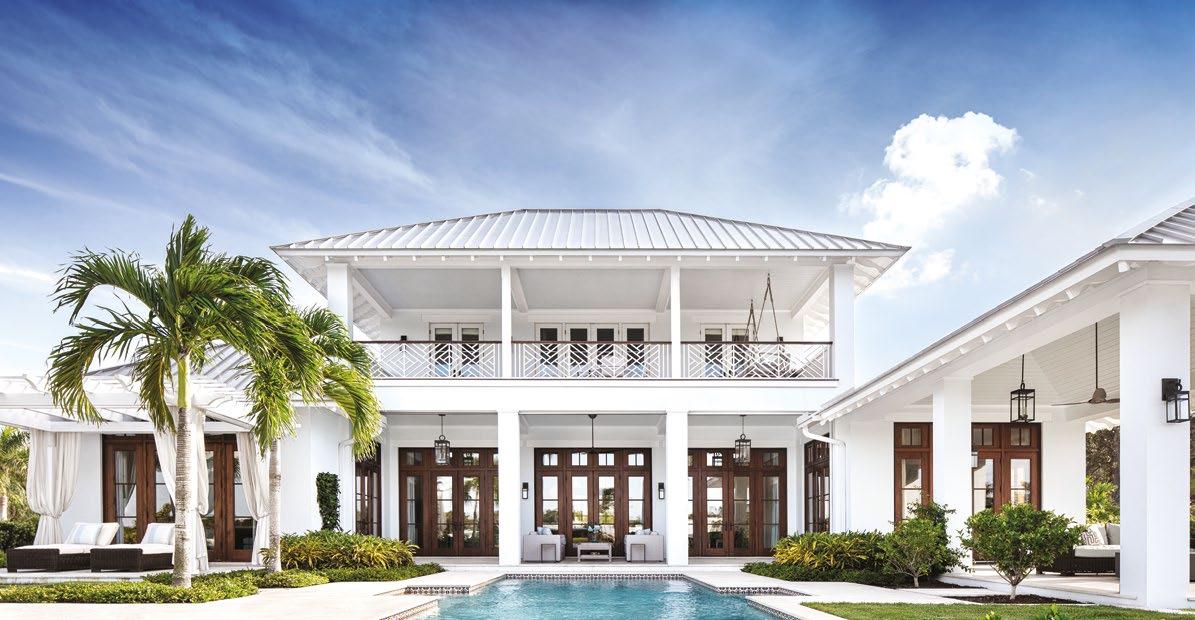

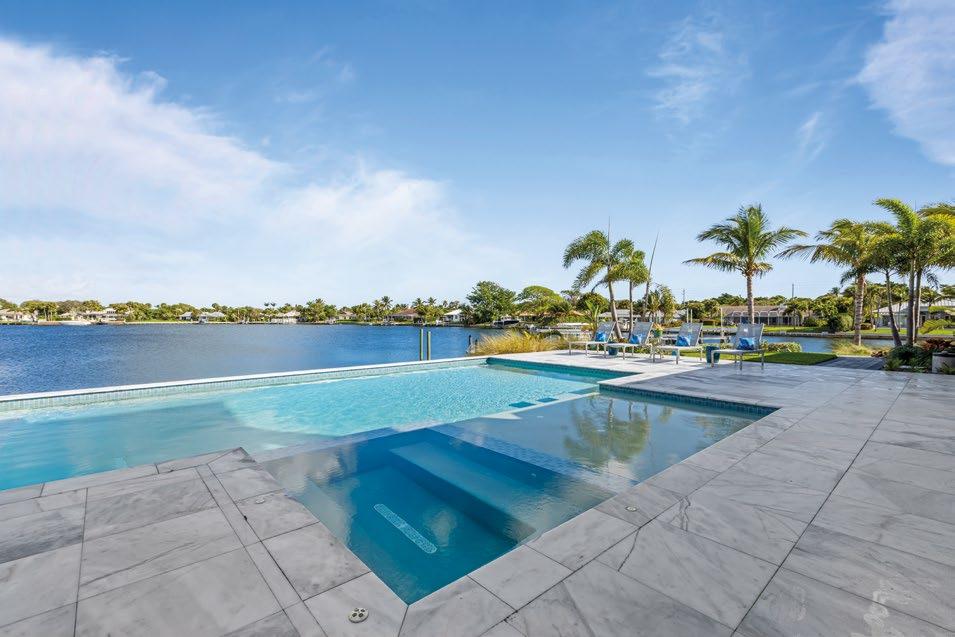

by Linette Capritta
Let’s talk about the typical morning. The alarm shrieks. You fumble for the snooze button like you’re defusing a bomb.
You shuffle to the kitchen, bleary-eyed, only to be greeted by a half functioning drip machine that huffs out something resembling coffee—but mostly tastes like regret. You pour a cup anyway (because caffeine is caffeine), take the first sip, and wonder if it’s too early in the day to give up entirely.
Now let’s rewind—and reimagine that same morning with the Miele CVA 7775 Built-in Coffee System.
Picture this: you stroll into your kitchen like royalty, not because you’ve suddenly become a morning person, but because your Miele knows exactly what you want. With built-in WiFi and the Miele@home app, you can start brewing from bed. Your phone becomes a wand; your kitchen, the enchanted castle.
The Miele CVA 7775 is built-in, sleek, and smart—and it gives you options. You can connect it to a dedicated water line or use the large, convenient built-in water reservoir. It grinds whole beans fresh for every brew with its aromatic system, delivering a fragrance that hits your nose like a love letter from Colombia. The grinder is ultra-quiet too, so the only thing waking you up is the anticipation of greatness.
Choose from espresso, latte, macchiato, cappuccino, flat white—or invent your own masterpiece. The machine remembers up to 10 user profiles, so everyone in your house gets their own personal barista. It even adjusts automatically to the height of your mug with CupSensor technology. No mess. No guesswork. Just perfection.
And speaking of perfection: let’s compare your Miele-made masterpiece to your
usual $6 cup of Starbucks. Sure, the green siren lures you in, but her brew is massproduced, pre-ground, and who-knowshow-old. With the Miele, you choose the beans. Organic, single-origin, fair trade, low acid—you’re in control. It’s not only better tasting, it’s better for you, and for your wallet. That $6-a-day habit? That’s $2,190 a year. With Miele, you’ll be sipping a better cup, at home, in your pajamas, with thousands in savings to show for it.
So let’s recap: the same alarm goes off. But instead of despair, you stretch luxuriously, knowing your perfect cup awaits. You take a sip—creamy, rich, perfectly balanced— and suddenly, birds are singing, emails are less annoying, and your kids aren’t even fighting over cereal. It’s not just coffee. It’s a lifestyle. And with Miele and Capritta, it’s one that begins beautifully.
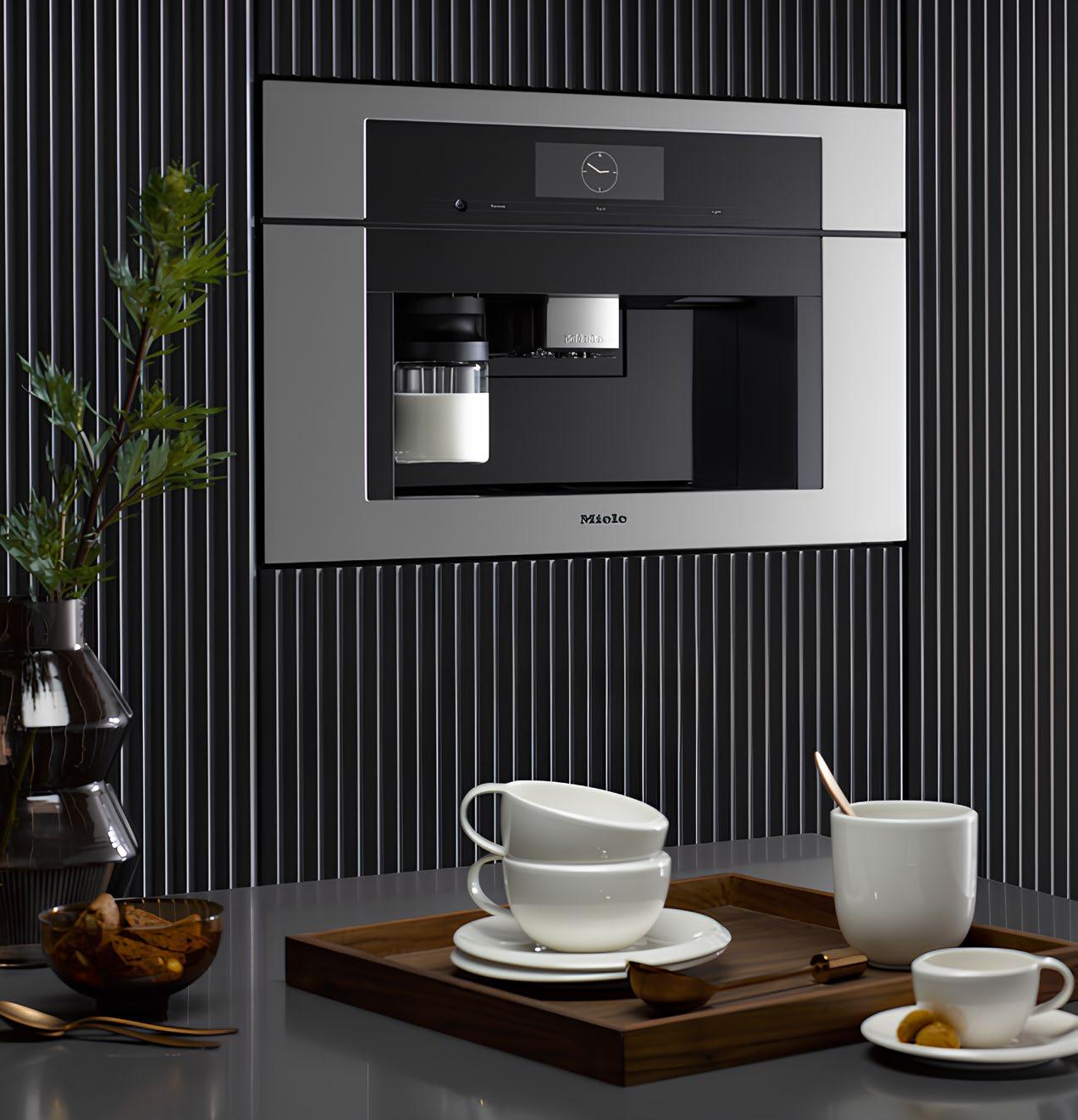
Purchasing a Miele Coffee System from Capritta Appliance comes with lifelong local support. Capritta’s expert technicians will service your Miele coffee system for the life of the unit, ensuring your investment continues to pay off with flawless foam and piping-hot performance.
In her role as Marketing and Design Project Manager, Linette Capritta blends brand building with business development, leveraging her expertise in digital marketing and interior design to influence both the company’s public image and its growth trajectory.
by Jim Field
Zellige (pronounced zell-ij to rhyme with “prestige”) is a handmade, glazed terracotta tile originating in North Africa, and in particular, Morocco, during the 10th century. Also spelled Zillij, the Arab term means “to slide,” a reference to the smooth, glazed surface of the tiles. Today, zellige tiles are cherished for the ancient heritage they embody and their purist artesian creation and character: each tile is a one-of-a-kind piece varying in shade, size, thickness, and texture. This imperfection is intentional, creating shimmering, textured walls when installed. While ancient in origin, zellige tile exemplifies modern aesthetics.
Mosaic tile as Islamic art is one of the main characteristics of architecture in the western Islamic world. It is found in the architecture of Morocco, Algeria, Tunisia, and the Iberian Peninsula. Beginning in the 14th century, zellij became a standard decorative element along lower walls, in fountains and pools, on minarets, and for the paving of floors.
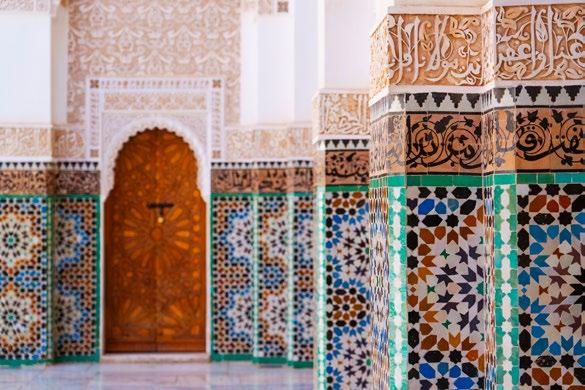
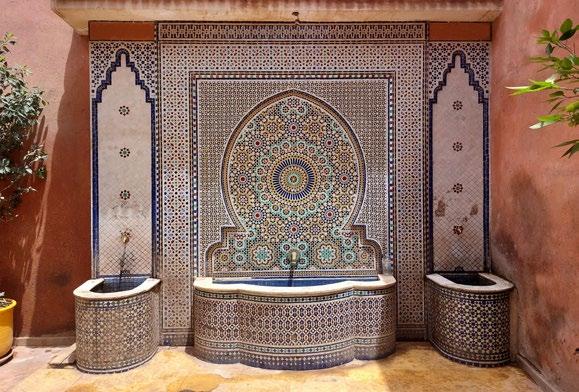
Tiles were used to create geometric mosaics, reflecting Islamic principles of infinity and divine order. Early Zellige tiles emphasized symmetry, geometry, and non-figurative design. Mosaics covering large areas were created using patterns that could be repeated indefinitely and fitted together without spaces. Shapes included squares, radiating stars, various polygons. Over centuries patterns increased in complexity and earthy colors gave way to vibrant colors: cobalt blue, emerald green, iron red, manganese black, and creamy whites.

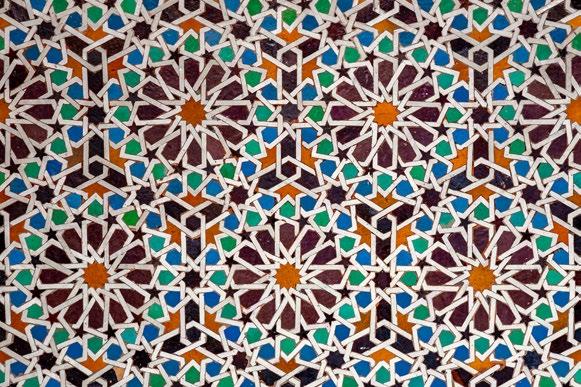
Made from non-refined clay called Tadlilt, known for its pliability and density. It is soaked, kneaded, shaped, using molds or by hand, into flat, square tile forms (4x4” or 2x2”). Tiles dry in the sun, allowing for natural hardening and shrinkage. Dried tiles are fired in wood kilns, emerging as unglazed terracotta bisque. Each tile is then dipped, brushed, or poured over with glaze. Because glaze is unevenly applied, it pools and gathers differently on every tile. Tiles are re-fired at high temperatures to set the glaze. The result is a glossy, glass-like surface with subtle crackles, color variation, and depth. For mosaic shapes, tiles are chiseled by hand.
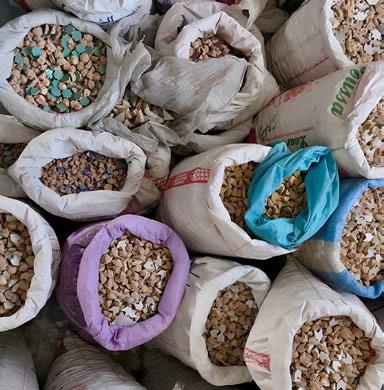

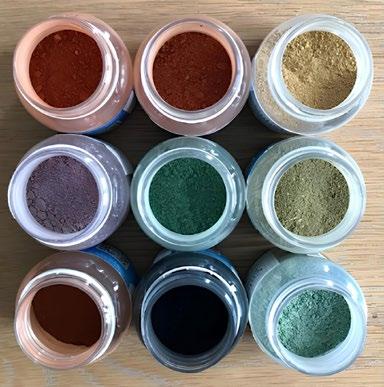
French colonial interest in Moroccan craftsmanship brought Zellige to Western attention. Art Deco and Orientalist design incorporated Moroccan tilework into European architecture and furniture. Zellige tile has surged in popularity in global interior design, favored for its imperfection, character, and timeless elegance. Modernist use favors white and neutral colors, although creatives remain loyal to bold colors and patterns. The ultimate testimonial is that once known to an individual, Zellige tile is immediately recognizable, breathtakingly beautiful, never confused for another.
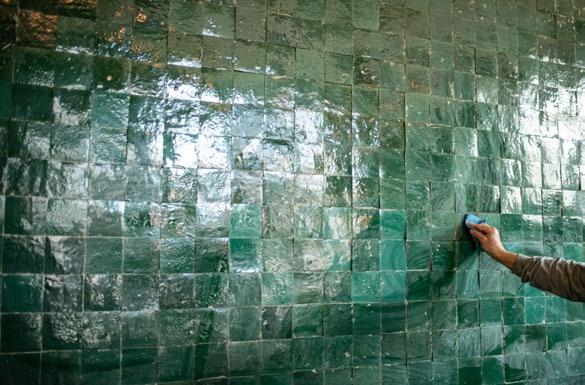
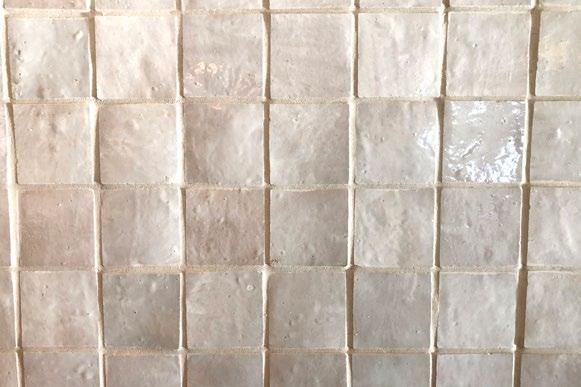
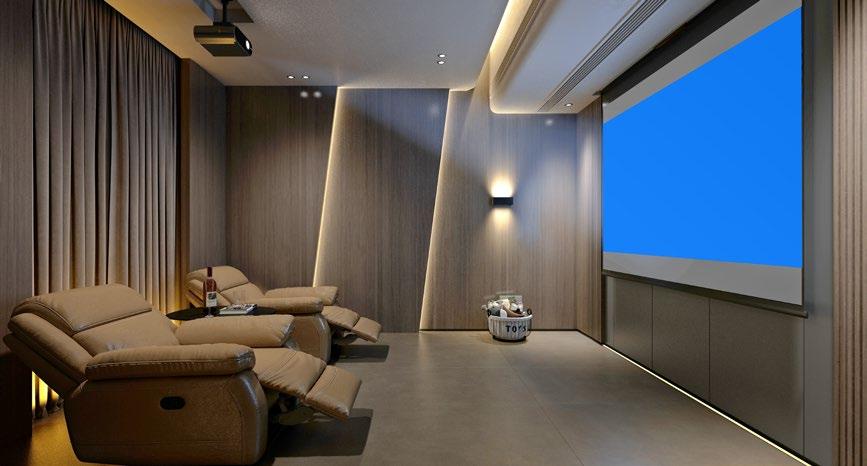
by Brett Ringeisen
In the nearly 50 years that I have been designing and installing home technology systems, I have seen home theaters evolve from a novelty into something truly extraordinary. In 1982, we showcased one of the first projection TVs made, the Advent Videobeam. When coupled with another new product called the video tape recorder (VCR), the concept of the home theater was off and running.
The Consumer Technology Association defines home theater as a dedicated home entertainment space with a minimum 42” display and surround sound. This sounds quaint today, as the systems we install now deliver immersive, cinematic experiences that go far beyond just a large screen and decent sound.
Since those early days, we have designed and installed some basic and many dramatic home theater systems in some of the most beautiful homes in Vero Beach. During the COVID-19 pandemic, with commercial theaters shut down and streaming services releasing movies directly to homes, people began investing in home theater like never before. This
trend has not slowed down. Some theaters never reopened, and now homeowners want that movie-quality experience in their own space—for films, sports, gaming, and more.
Home theaters are generally grouped into two categories: dedicated theaters and stealth theaters which are built into multipurpose rooms like a Family Room or Game Room..
A basic dedicated theater could be as simple as a 50-inch TV with a soundbar and subwoofer in a spare room, but many of our clients want something truly immersive.
A dedicated home theater is typically designed from the ground up with performance in mind, with multi-channel speakers hidden in the walls and ceiling, seating on risers and the walls featuring acoustical treatments to enhance both sound clarity and comfort.
Most dedicated theaters include frontprojection TVs with screen sizes from 100 to 160 inches. While massive flat-panel TVs continue to improve, projection systems are still the best way to create true cinematic scale. Today’s projectors deliver 4K resolution, rich HDR contrast, and exceptional clarity, all while running quietly and efficiently. When combined with proper room design and acoustics, the results are phenomenal.
If a dedicated theater is not in the plans, most homeowners opt for a stealth theater integrated into a Family Room or Game Room. These setups are designed to blend the speakers and TV seamlessly into everyday living spaces while still delivering great performance. A lot of these systems feature large direct-view TVs. 98-inch models from brands like Sony can now be purchased for under $6,000, and provide a big, bright picture without the need to darken the room.
Video display technology continues to evolve. MicroLED is starting to make serious inroads, especially at the high end. It offers the brightness and long lifespan of LED, the deep blacks and contrast of OLED (Organic Light-Emitting Diode), and none of the burn-in issues. Sony, for example, is moving its premium line toward MicroLED and phasing out OLED. That’s a major shift in the industry and a sign of what’s coming.
For those who want both convenience and wow factor in the Family Room, we can combine a smaller flat-panel TV with a larger drop-down projection screen for movie and sports time. Ambient lightrejecting (ALR) screens make it possible to enjoy these large projection systems even in well-lit rooms.
Whether it’s a dedicated theater or a stealth system, sound plays a crucial role. Immersive audio technologies like Dolby Atmos add a vertical dimension to sound. It’s no longer just about speakers in front of or behind now, audio can move over your head and all around you. This creates a soundscape that feels alive and threedimensional. Whether you’re watching a movie, gaming, or listening to music, immersive audio takes the experience to another level.

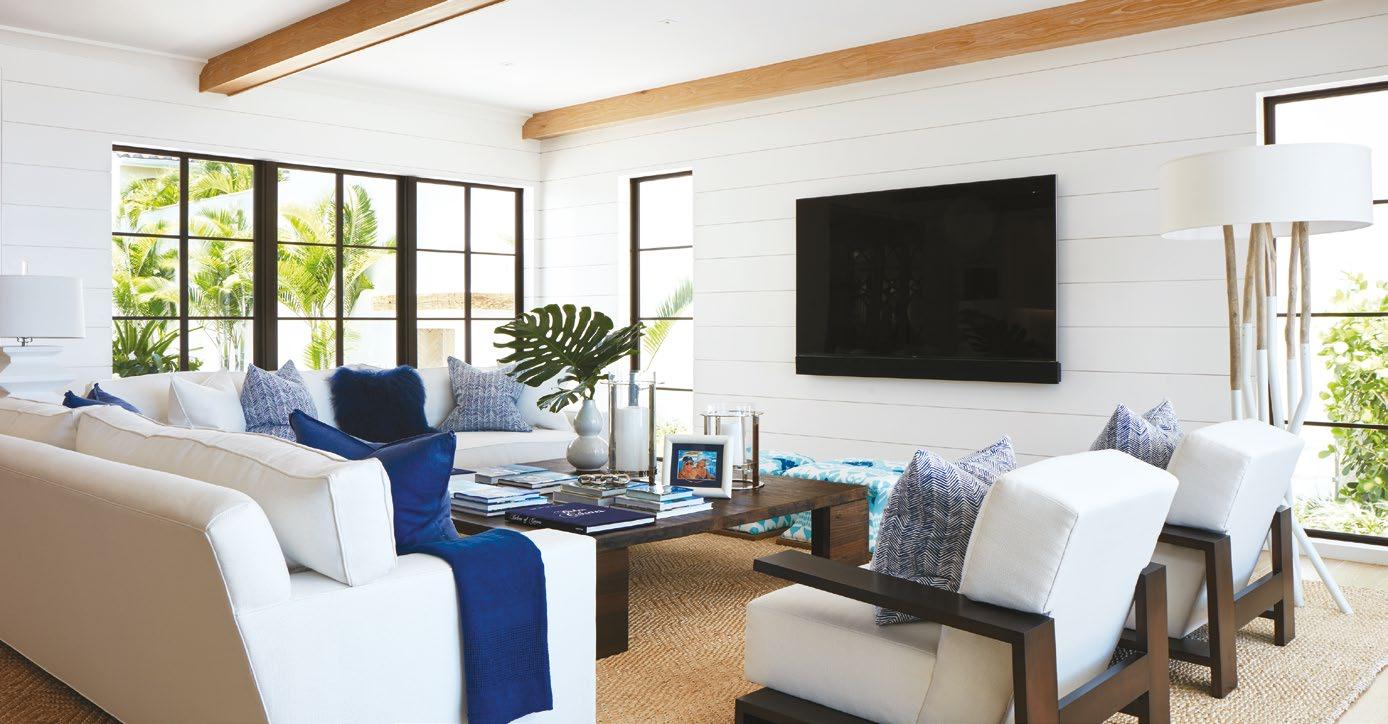

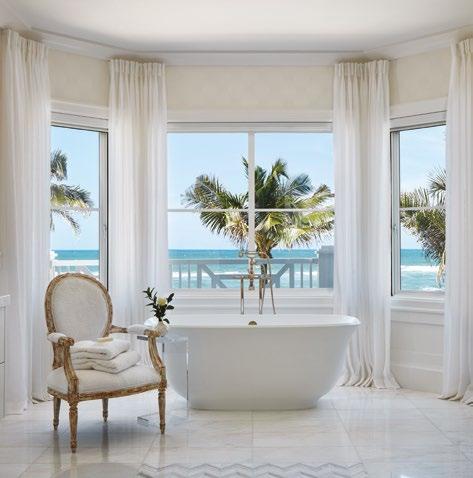
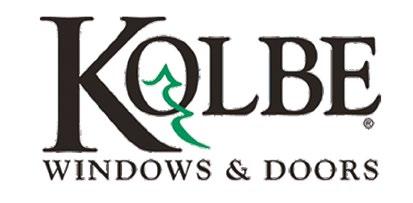
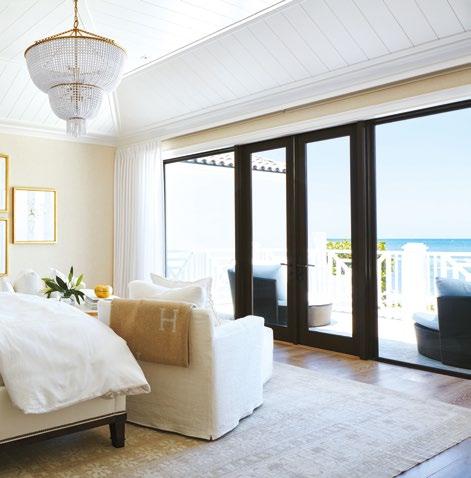
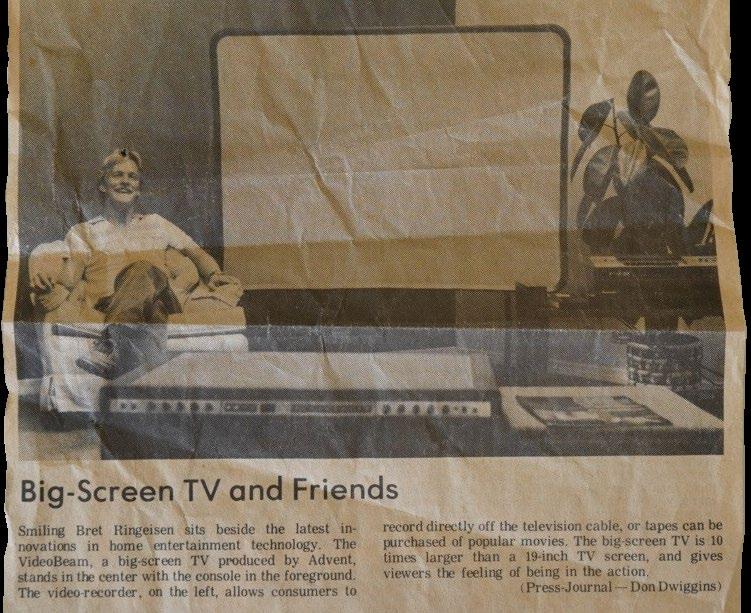
After all these years, I still believe in the power of a well-designed theater space. Whether it’s for watching movies, gaming with the family, or binging a favorite series, having a comfortable, highperformance environment to enjoy it all is something people value more than ever.
Brett Ringeisen, Director of The Audiohouse in Vero Beach, is passionate about improving the quality of lives with technology and simplifying the user experience. He is one of the pioneers in the custom home electronics industry, and writes and speaks about technology trends.
This is a theater system that The Audiohouse recently designed and installed in the Orchid Island neighborhood. The owners are both Tony Award winning producers, and benefactors of the UCLA School of Theater, Film and Television. Having been involved in the film industry for many years, the homeowners contracted The Audiohouse to design and build a high-quality theater in which they could entertain their large family and group of friends. Rob Atkins was the architect and The Hill Group was the builder involved in the project.
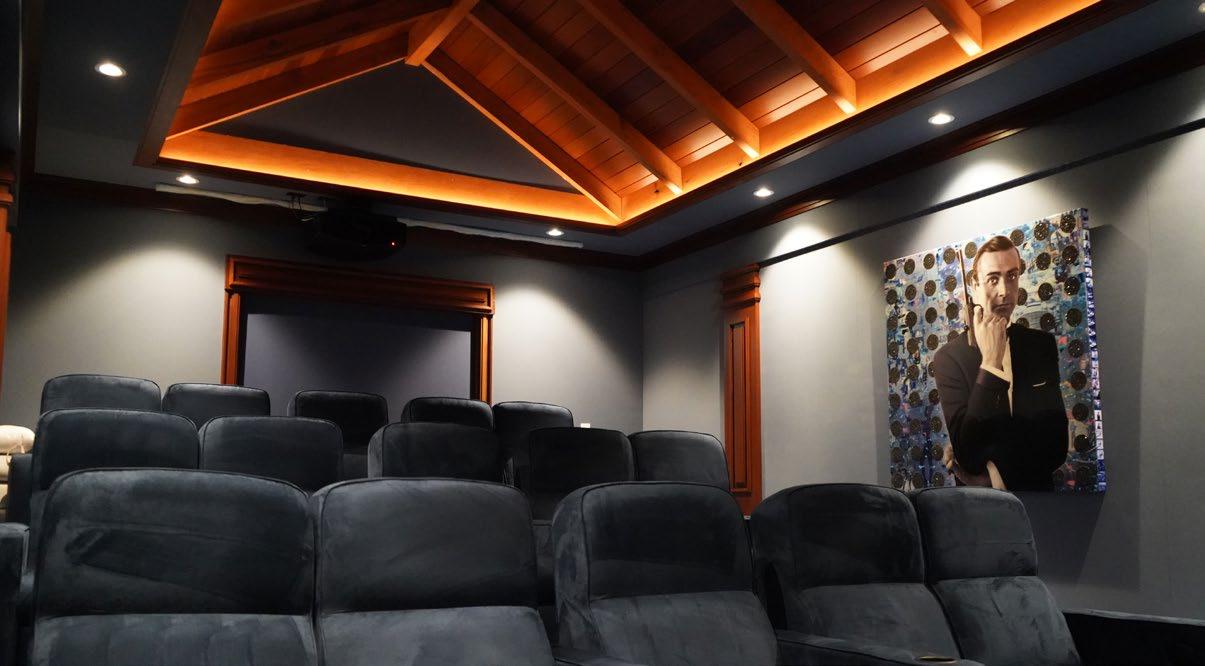
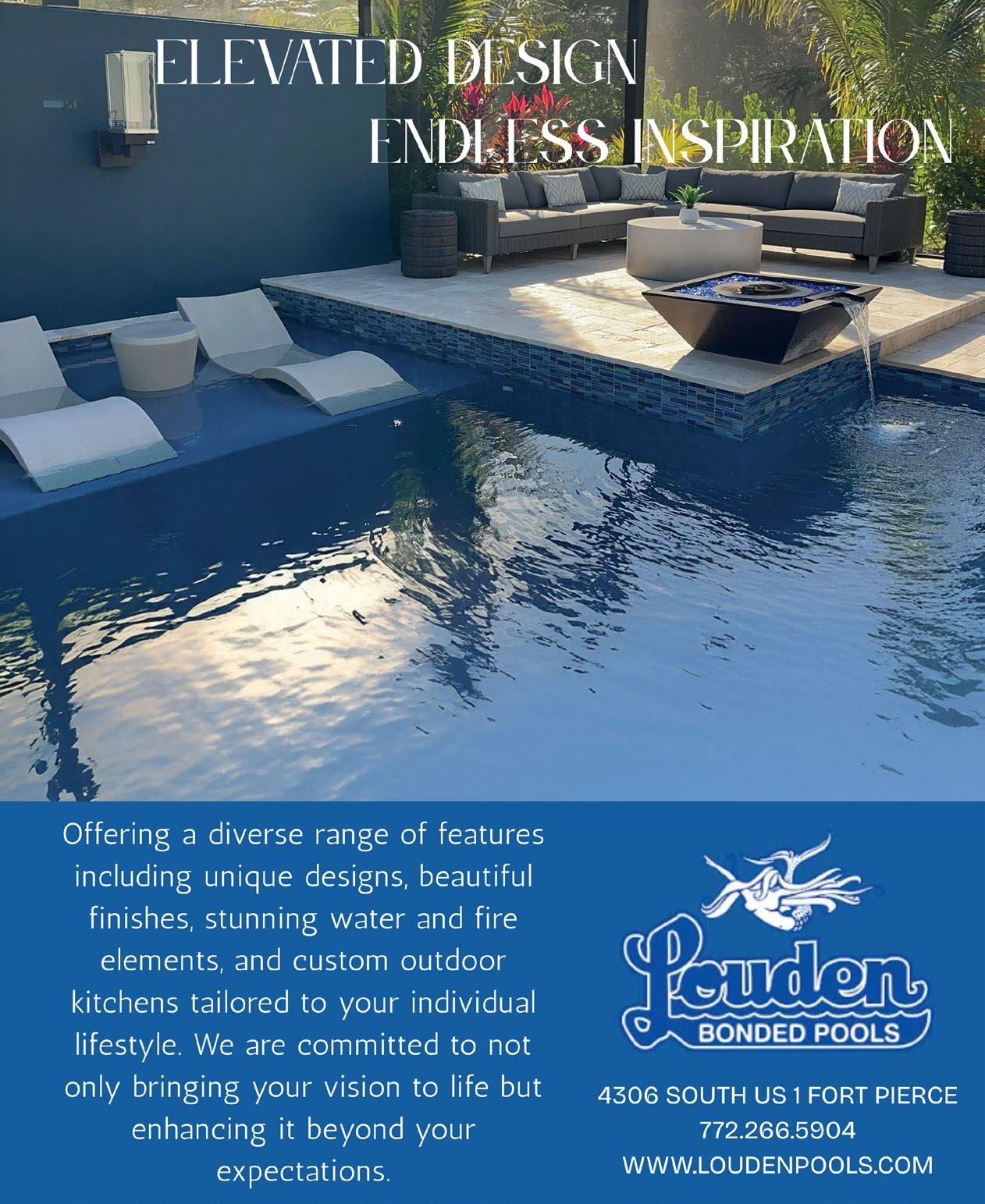

by Joshua McMiller photography by Yuri Semenyuk
Before her brush ever touched canvas, before the vibrant blues and blazing oranges made their way into her abstract work, Shotsi Lajoie was a pioneer skimming the surface of rivers and lakes in a rowing shell after something much deeper than just a sport. Born in Lincoln Park, Chicago, she found her rhythm not only in the cadence of oars but in the quietude of dawn and the electricity of natural light.
It all began at St. Mary’s at Notre Dame in 1973, the year Notre Dame went co-ed. Shotsi became part of the university’s first women’s athletic team, rowing on borrowed men’s equipment and traveling to competitions unrecognized by the school. “There were no women’s sports, so we were pioneers,” she says. “Notre Dame didn’t even know we were racing.” Yet they won the first trophy ever awarded to a women’s team at the university. That victory marked not only a place in history, but the beginning of a lifelong love affair with water.
By 1981, she had moved to Vero Beach, bringing that love with her. For twenty years, she rowed solo in her own single shell, every morning surrounded by silence and sunrise. “It’s just you and the elements,” she reflects. “There’s no noise, no motors, just the splash of the oar, the call of birds, the surprise of a dolphin or manatee near the boat. It’s meditative. It changes you.”
That intimate, immersive, and humbling connection to nature bleeds directly into her art. “Much of what I paint looks like water,” Shotsi says. “Not because I intend it, but because the experience is in my body.” Her work is layered, gestural, often bursting with motion and color. Lines curve, splashes similar to the natural world she inhabits before most people wake up.
A Visual Language of Healing Shotsi’s path to painting was anything but linear. A former finance and accounting major who worked in Chicago’s Financial district and was later transferred to Miami. While working, something seemed to be missing.
She turned inward during a difficult period in her life in the late 1990s. “I needed to heal,” she explains. A friend introduced her to spontaneous painting (which is an intuitive, meditative process) that served as an emotional release. “I painted in black, red, brown, and white. I didn’t know why. I didn’t care what it looked like. I just needed the feelings out.”
This inward journey catalyzed by trauma seemed to deepen through motherhood, and it was eventually expressed through art, which gave her a new kind of strength. She began teaching intuitive painting as a form of personal healing, holding silent workshops where participants could process their emotions visually, without judgment or conversation. “You don’t have to be an artist,” she insists. “We all have access to that part of our soul.”
It wasn’t until she sold her very first painting—an enormous 4 foot by 6 foot abstract priced boldly at $5,000—that she then claimed the title of “painter” for herself. “It sold in the first five minutes,” she recalls with wonder. “That’s when I thought, maybe this is who I am.”

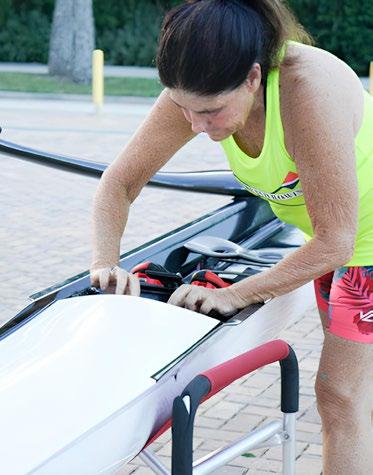
Despite being entirely self-taught, Shotsi explored sculpture, metalwork, glass, and clay in addition to painting. She has no allegiance to medium or technique, only to feeling. “If it doesn’t feel, it isn’t real,” she says, brushing off AI art and algorithmic creation. “The struggle is the point. You can’t skip it and still make something meaningful.”
Her work emerges slowly, layer by layer, with long pauses between movements. “Sometimes I wait days, sometimes months. I look at the painting and if it’s not talking to me, I leave it. Or I paint over it and begin again. There’s honesty in not knowing.”
The freedom to lack attachment, destroy, re-create, and explore without rigid expectation is evident in every piece she makes. Like rowing, it requires rhythm, patience, and trust. “Art, like water, reveals things to you when you’re ready.”

JM: When did you first start painting?
SL: In the late 1990s. I was going through a difficult time and needed a way to process it. A friend introduced me to intuitive painting. I didn’t know what I was doing, but it helped me heal.
JM: Has art ever healed you?
SL: Absolutely. My first paintings were deeply emotional black, red, brown, and white pieces. I didn’t show anyone except my therapist. It was a way of moving painful things out of my body. Art continues to heal me every day.

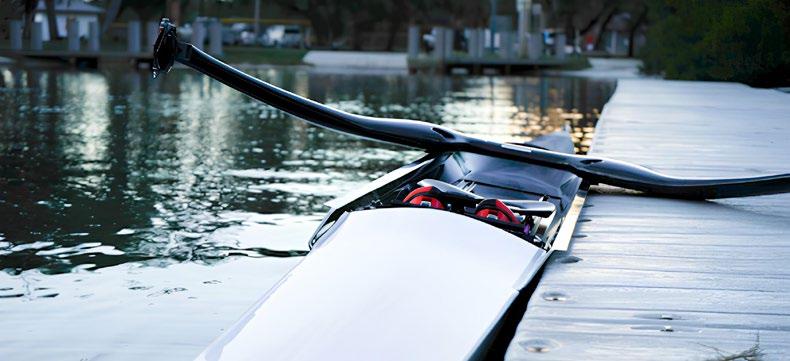
JM: Do you consider yourself self-taught?
SL: Yes, entirely. I never went to art school. I started with clay, metal, and sculpture, and slowly moved into painting. I never felt like a “real artist” until I sold my first big painting.
JM: What are your thoughts on AI art?
SL: I don’t pay much attention to it. If a piece doesn’t feel something to me, it isn’t real. I create from within, and I believe the struggle, the process, is what makes the art meaningful.
JM: What does abstract painting mean to you?
SL: It’s emotional language. I paint feelings, moments, memories from the water, from life. They might be unrecognizable to others, but to me, they carry energy. I’d rather not know where I’m going when I start a painting. The journey is the point.
Each morning, Shotsi rows before the sun rises. Her oars cut cleanly through the stillness, disturbing only the stars’ reflections. The sky slowly shifts from indigo to lavender to firelight. In this quiet symphony of water and light, something new is born. Sometimes it’s a feeling. Sometimes it’s a painting. But always, it is honest.
And for Shotsi Lajoie, that is enough.

Presented by
Be the next face of LIV VERO Magazine!
We're searching for fresh, local faces to represent Vero Couture LLC in upcoming creative projects and campaigns!
No experience or professional portfolio required - we're looking for authenticity, confidence, and individuality.
Casting Call Date: August 15, 2025
Time: 10:00 a.m. - 2:00 p.m.
Location details provided upon invitation
Mature Adults: Ages 40-65 WHO WE'RE LOOKING FOR:
Children: Ages 5-13
Teens & Adults: Ages 14-39
To apply, email your information and recent selfie to hello@couturevero.com. You can also apply online at couturevero.com/casting READY TO BE THE NEXT FACE OF LIV VERO MAGAZINE?
couturevero.com hello@couturevero.com
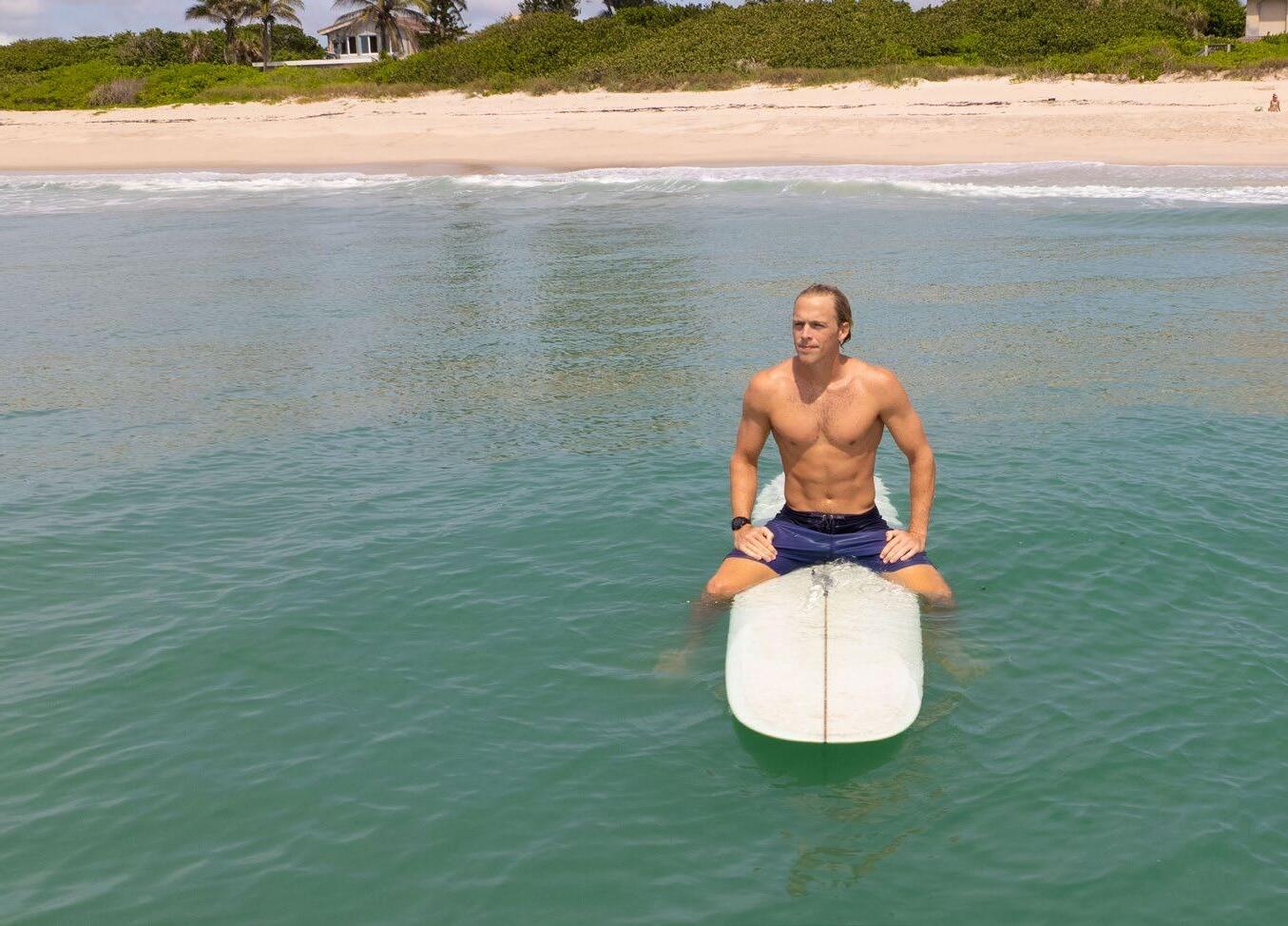
by Chris Foster photography by Yuri Semenyuk
When you meet Maxwell Muller, you’re not entirely sure what to expect. He looks like he just stepped off a surfboard—because most days, he has—but within minutes, he’s talking data points, AI systems, and environmental infrastructure like someone on a mission. Because, well, he is.
During our cover shoot, Maxwell joked about arriving in board shorts while holding a cardboard sign that read, “Quit the Sh*t, Y’all.” Instead, he held a massive pile of trash that was removed from our waterways, his face filled with a conviction
that clearly says: this is no gimmick. This is someone who has had enough and wants change now.
A local Vero Beach kid turned marketing mogul, Maxwell now leads one of the most outspoken and innovative environmental efforts on Florida’s east coast. What motivates him isn’t just policy or preservation—it’s personal.
“I grew up here,” he says. “Little bowl-cut beach kid with half a bag of Cheetos dust on my face, just trying to catch waves with my friends and avoid wiping out in front of the older surfers.”
Back then, he didn’t think much about the trash washed up on the beach. But as he got older, reality set in. The Indian River Lagoon he loved was changing. The seagrass beds he remembers as thick and spooky – filled with stingrays, crabs, and life everywhere – are now gone in many spots. Just muck. Muck that makes everyone wince when the sludgy substance squeezes between your toes.
“Growing up here, you don’t just see the changes – you feel them,” he says. “And the old-timers aren’t exaggerating when they say the lagoon used to be crystal clear with white sand bottoms. Dr. John Trefrey’s sediment cores proved it. Just a few feet beneath all that sludge is pure, pearly white sand. It’s still there. And I believe we can bring it back.”
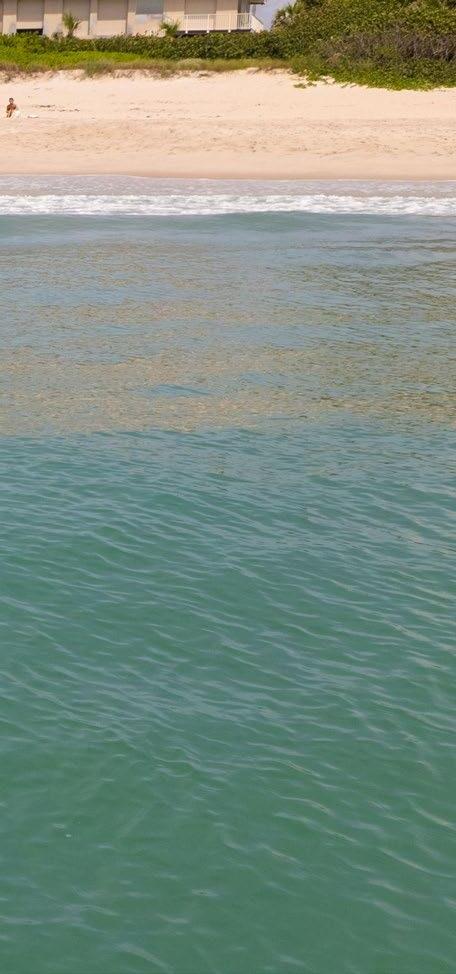
Maxwell isn’t a scientist or politician. He built a marketing company with over 100 people before realizing he could use those skills for a more meaningful cause: restoring the waters that shaped his childhood.
“Marketing taught me one thing: if you don’t know your most important data points, you’re just another loudmouth with an opinion.”
So he learned. He listened. He installed artificial reefs, cleaned beaches, sat through every environmental meeting he could find, and earned his Florida Master Naturalist certification in Coastal Systems. Not for a title, but to find real solutions.
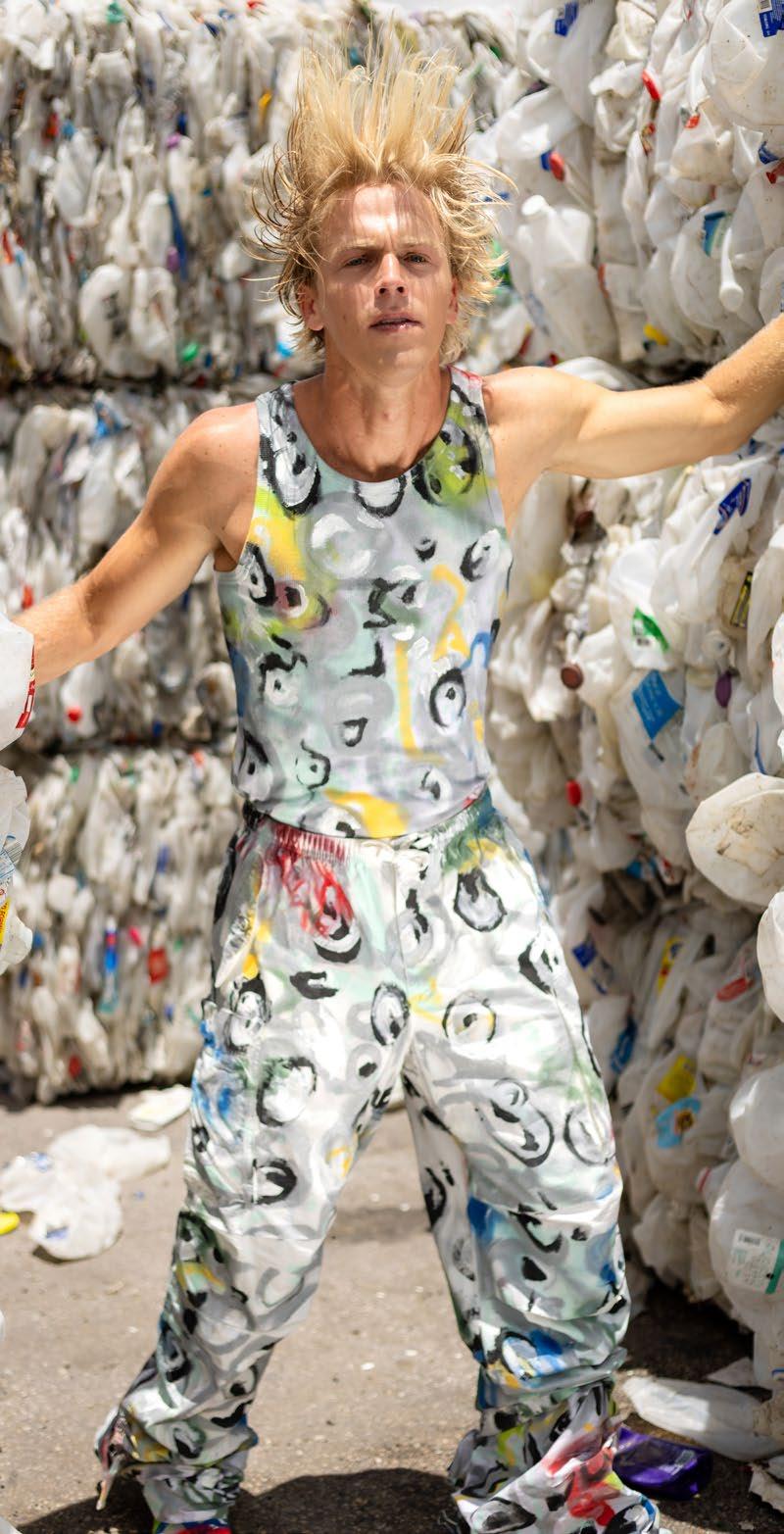
Here’s what he found:
• Trash stays for centuries. Plastic bottles take 450 years to decompose. Fishing line? 600 years. Aluminum cans? 200 years.
• Grass clippings spike nitrogen by 31% and phosphorus by 81% within just one day.
• Dog waste adds over 100 tons daily into our watershed – heavier than a Boeing C-32A military aircraft, every day.
“Our water problems are people problems. But if we caused it, we can fix it.”
That mission led him to launch 4 Better Water, a movement to stop pollution at its source and scale solutions that actually work.
One solution is their At-Home Oyster Bars, turning empty space under local docks into a system that can filter thousands of gallons of water every day.
For local businesses, there’s the DollarFor-Trash Match program, where every
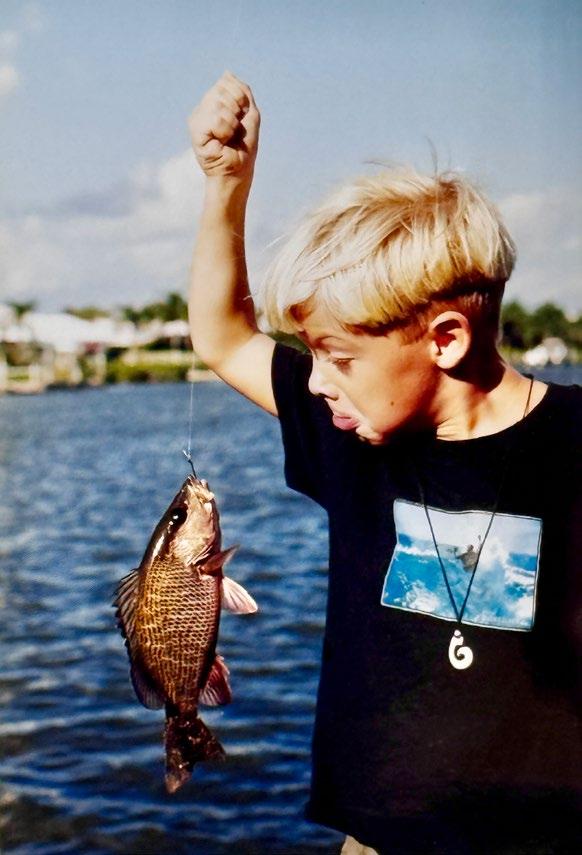
dollar funds the removal of trash directly from our coastline and waters. It’s a tangible way to make an immediate local impact.
He also started an Eco-Friendly Property Management team to clean up dog waste and manage lawns without harming our waterways.
And to bring it all together, 4 Better Water runs media campaigns that inspire action through science and storytelling, showing what’s possible when a community comes together.
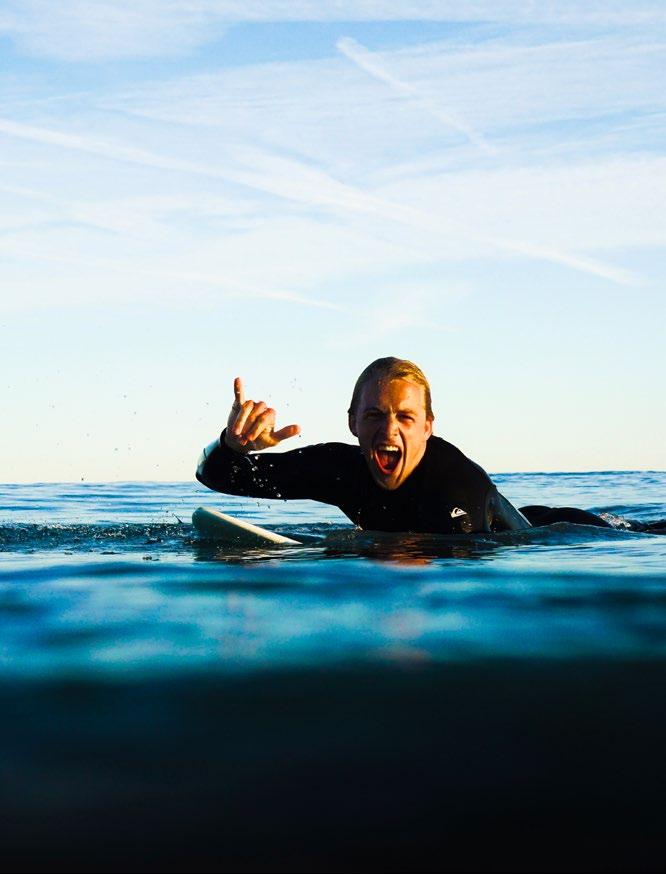

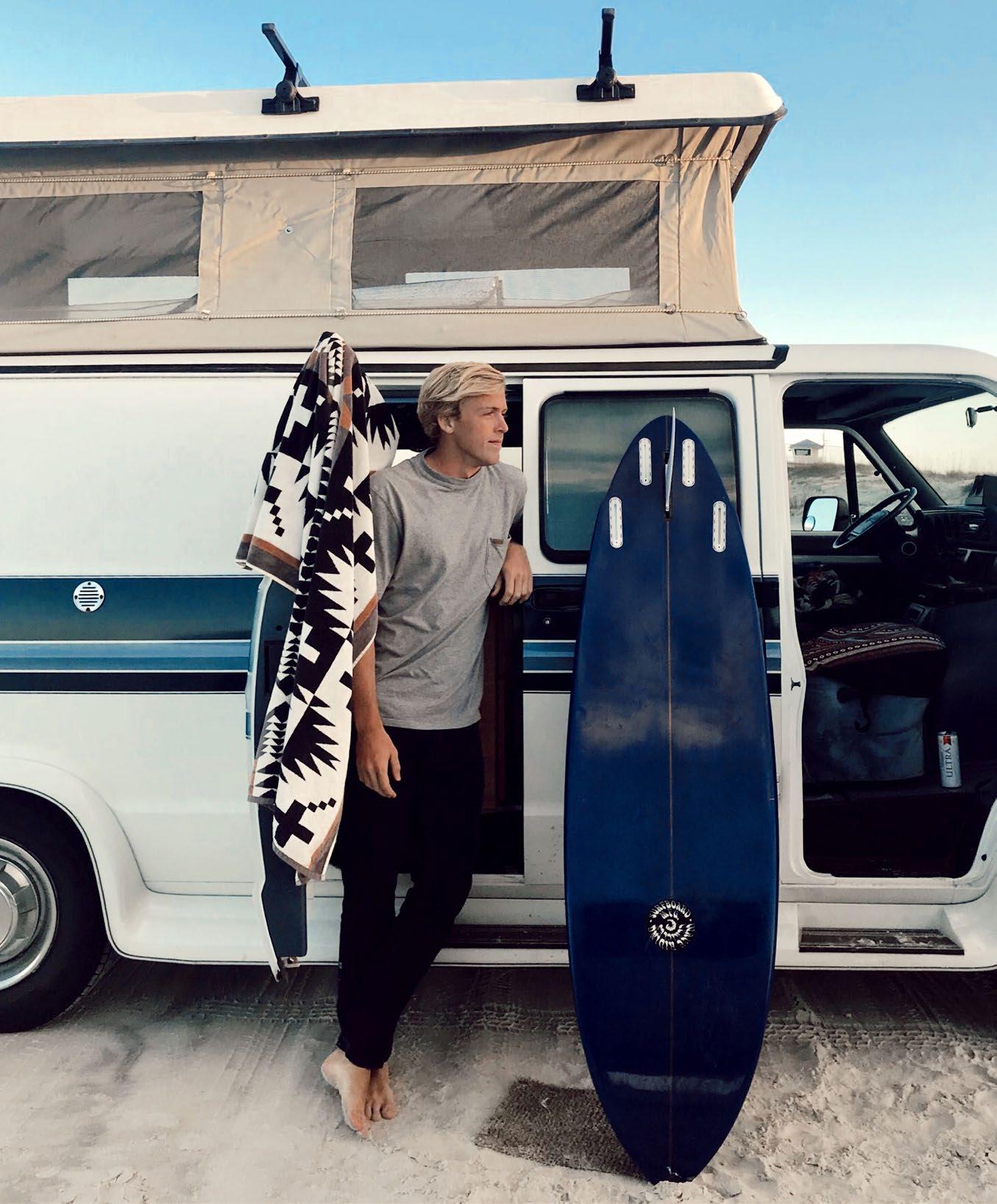
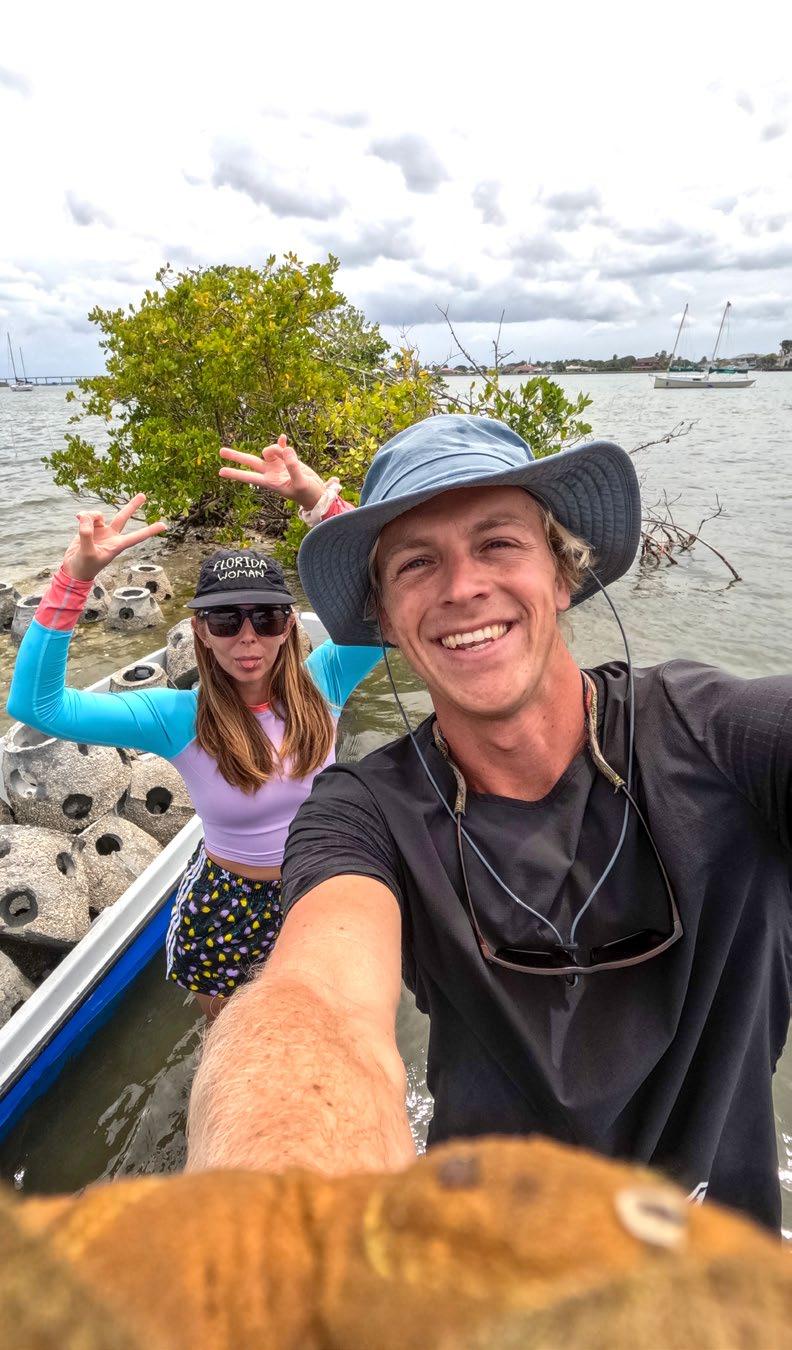
“We can’t keep inching forward with outdated tactics, hoping it all magically fixes itself. And we sure can’t guilt people into action with doom and gloom headlines. That just makes everyone hide in their shells, hoping someone else saves the day.”
He continues, “Vero is different – this is a place of smart people with big hearts. People who aren’t afraid to put their money to work, get their hands dirty, and create real change.”
His message is clear, urgent, and unwavering: “We’ve got a plan and we’re building momentum – but we need your help.”
With passion, innovation, and a very local kind of grit, Maxwell Muller reminds us that the fight for clean water doesn’t start in Washington. It begins right here, in our backyards.
You can learn more at www.4BW.org
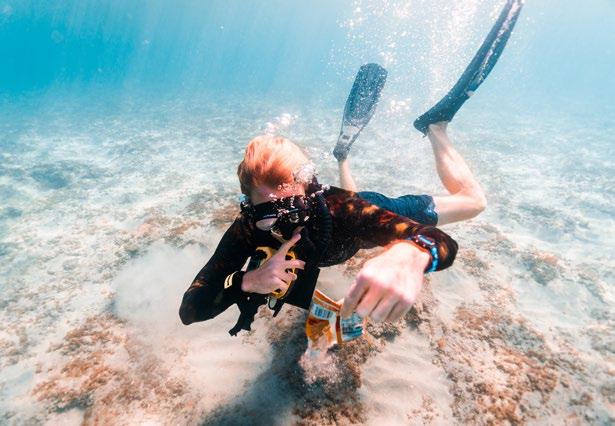

Discover advanced facial aesthetics, injectables, laser therapies, and biohacking treatments designed to help you look better, feel stronger, and age smarter.
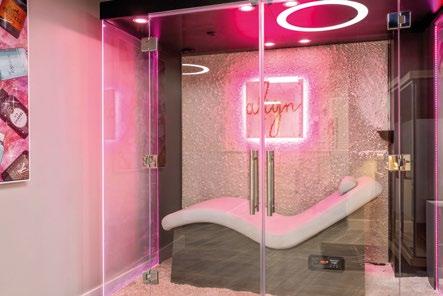

Services
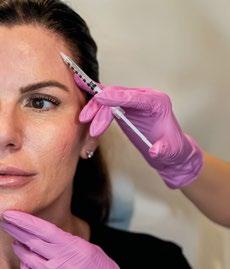

• Botox, Fillers, Sculptra
• Luxury Facials & Advanced Microneedling
• Cryotherapy, Infrared Sauna, Red Light Therapy
• BBL Heroic & Sylfirm X Skin Rejuvenation
• Salt Room & IV Wellness Lounge
Tailored memberships available to support your beauty + wellness goals.
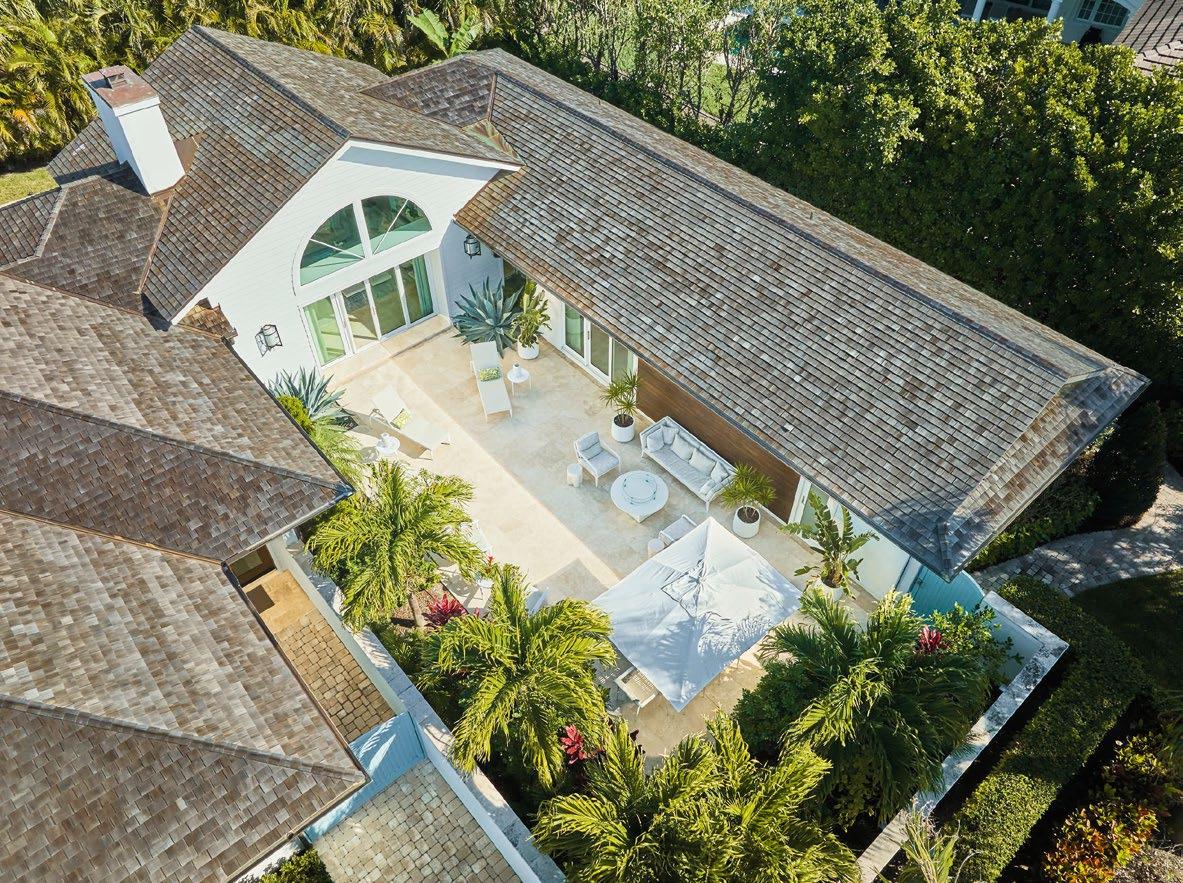
Rebuilt in 2021, this coastal modern home blends timeless luxury with effortless livability. Bathed in natural light, the open-concept interiors feature travertine flooring throughout, shiplap accents, quartz and marble finishes, volume ceilings, and a sleek modern fireplace.
Designed for everyday elegance and easy entertaining, the chef’s kitchen includes SubZero and Wolf appliances, a walk-in pantry with second refrigerator, and a custom wet bar. It’s a home that lives beautifully — and captured the market quickly.
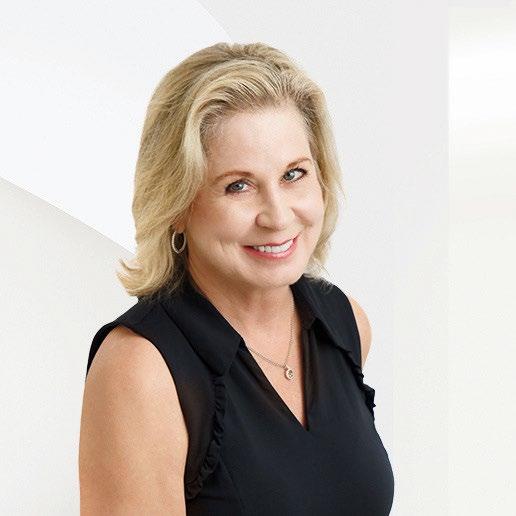

Resort-Style Outdoor Living Just Steps from the Beach
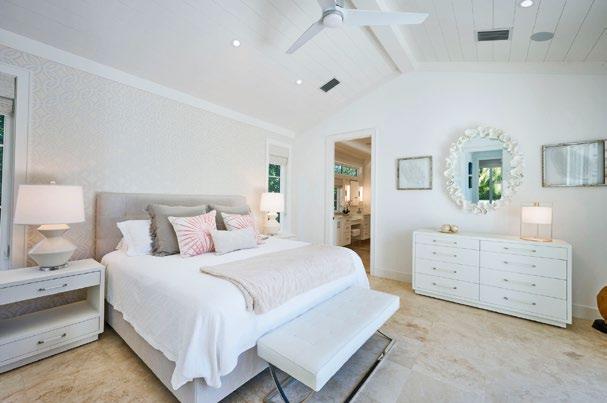
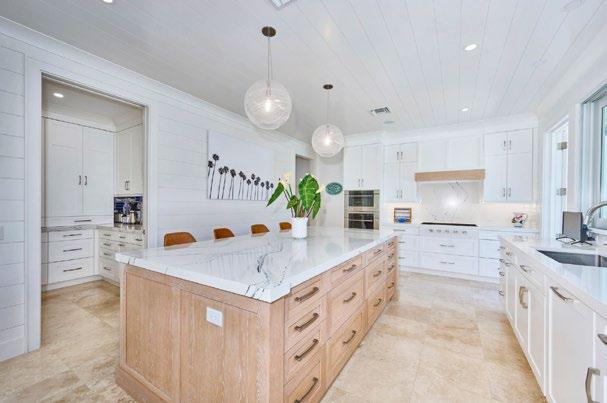
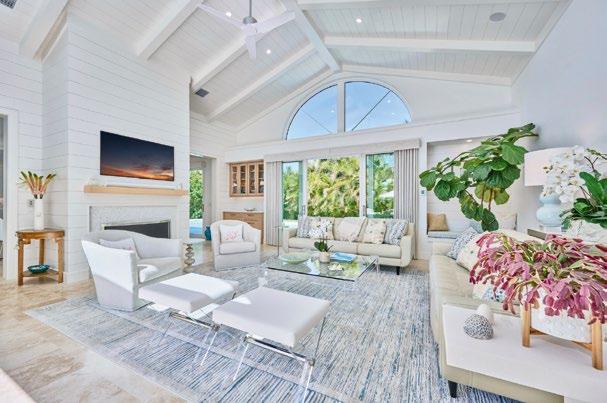
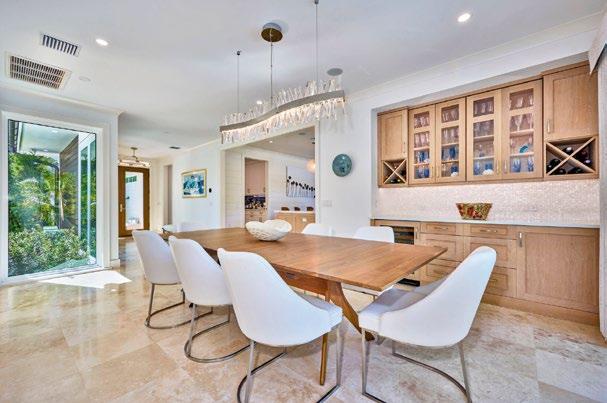
A newly added study with custom built-ins brings functional sophistication, while walk-in closets and a whole-home sound system offer everyday comfort.
The spacious living room flows seamlessly through two sets of sliders to a private walled courtyard with lush landscaping, a retractable awning, and a 40x20 pool, spa, and outdoor kitchen.
Located just steps from a private beach entrance in Seagrove East, this home exemplifies the lifestyle today’s buyers are looking for — let Diane Field showcase yours with the same strategy, style, and success. Offered at $3,350,000.

821A Beachland Blvd | Vero Beach | FL 32963


Introducing: LIV VERO Gallery
LIV VERO Gallery is a curated space within each issue dedicated to celebrating fine art and the artists who inspire us, telling stories that resonate with our community and beyond. Each showcased piece is available for purchase; inquiries please contact jim@livvero.com. Art lives here. Let it live with you.
Artist Statement
I am an unscripted artist guided by instinct, emotion, and a deep connection to nature. My journey into painting began unexpectedly, after years of farming the land in Vero Beach. One evening, I picked up a piece of wood from a dumpster and declared I would paint. That moment unlocked a lifelong passion for abstract expression.
I paint with no plan, often barefoot, surrounded by trees, ocean sounds, and the scent of ylang ylang. For me, painting is like surfing which both are about flow, rhythm, and surrender. I close my eyes, trust my heart, and let the work come through.


Sculpting followed naturally. I carve organic forms using surfboard foam, drawn to its strength, lightness, and connection to the sea. Whether I’m painting or sculpting, I listen to the whisper within. I don’t seek control. I seek freedom, truth, and emotional resonance.
My work isn’t about realism. It’s about spirit. I paint what I feel, not what I see. I believe there’s too little originality in the world, and art is one place I can be fully myself. Every line, every shape, comes from experience with farming, surfing, solitude, and silence. Art, like life, is most honest when it comes straight from the heart.
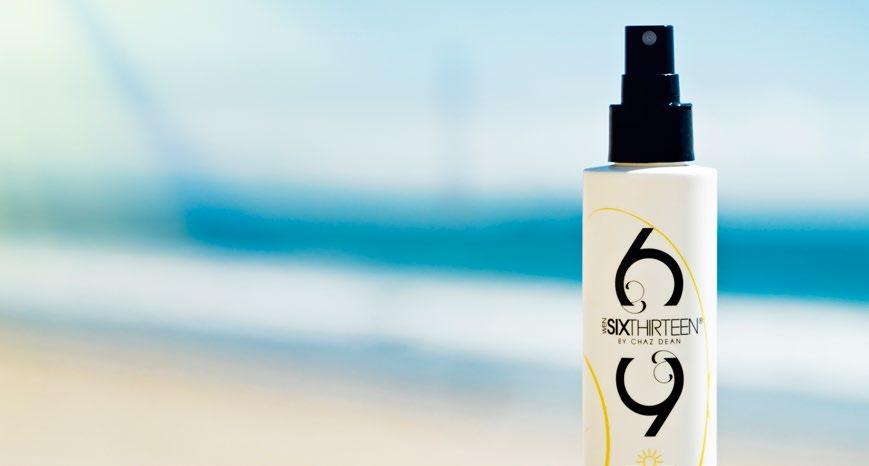
by Chris Foster

Summer can be blissful—with long beach days, warm nights, and that golden hour glow—but it can also be brutal on your hair. Sun, salt, chlorine, humidity, and heat all work together to strip your strands of moisture and vibrancy. To help fight the damage before it begins, I sat down with my friend and haircare icon, Chaz Dean, creator of WEN®, to get his expert tips on keeping hair healthy, hydrated, and summer-ready from root to tip.
The Seasonal Hair Battle
According to Chaz, one of the most common summer hair issues is rapid color fade. “You’ll notice color fades faster because of the excessive heat, chlorine from pools, and long days at the beach,” he says. “Each time you go in and out of the water, you’re baking those chemicals or salt into your hair.” His mission: to teach people how to prevent damage before it takes hold.
Pool and Beach Protection
Before starting your summer day, Chaz suggests applying a leave-in or deep conditioner to wet hair. This forms a protective barrier that helps block chemicals and prevents harsh, drying elements from penetrating the hair shaft.
Post-Swim
“If you can, cleanse your hair right after getting out of the pool or ocean,” Chaz urges. “If not, carry WEN® Replenishing Treatment Mist to spritz your hair, then apply your leave-in conditioner and/or treatment oil. That way, you’re actively treating your hair while still in the sun.”
Once home, it’s time to wash away the damage gently. Chaz recommends a hydrating cleansing conditioner followed by a generous application of WEN® ReMoist Hydrating Hair Mask — ideally worn overnight for deep recovery.
Humidity,
To combat Florida’s frizz-causing humidity, Chaz recommends applying your cleansing conditioner as a leave-in, mixed with a few drops of WEN® Treatment Oil on soaking wet hair. You can also add oil into your WEN® Styling Crème to seal the cuticle and prevent frizz from forming.
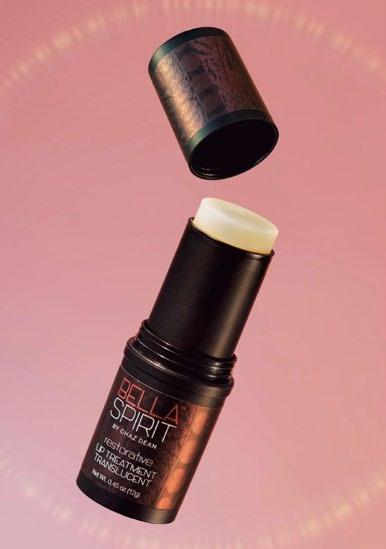

When shopping for products, choose clean formulas that are rich in hydration, botanicals, oils, and plant extracts. Avoid harsh chemicals and high-protein products in the summer, as they can dry out your hair further. “With high-quality products, you can never use too much,” he says. “Consistency is key—don’t wait until the damage is done.”
• Fine/Straight Hair: Stick to a simple routine—use a cleansing conditioner, a treatment mist, and a weekly mask.
• Wavy/Curly Hair: Use the same base but add WEN® Treatment Oil into your leave-in and styling cream to boost moisture and bounce.
• Textured/Coily Hair: Apply dry oils, glossing serums, or treatment oils—or all of these — to deeply nourish. These products should absorb completely without weighing the hair down.
Apply everything to soaking wet hair, and whenever possible, air dry. “You’re already dealing with outdoor heat,” Chaz notes. “Skip the blow dryer.”
Chaz recommends using SixThirteen Dry Oil with SPF 20, lightly scented with lemon, rosemary, and vanilla bean. Apply it to your scalp, especially along your part, using your finger or a Q-tip. “It protects both natural and color-treated hair,” he says. “It’s lightweight and packed with amino acids, peptides, vitamin K, and arnica. You can use it from head to toe.”
For life on the go, Chaz never travels without WEN® travel packs of cleansing conditioner and his Replenishing Treatment Mist. “It’s a no-brainer. It hydrates my hair, face, and skin. I use it constantly—especially in summer.”
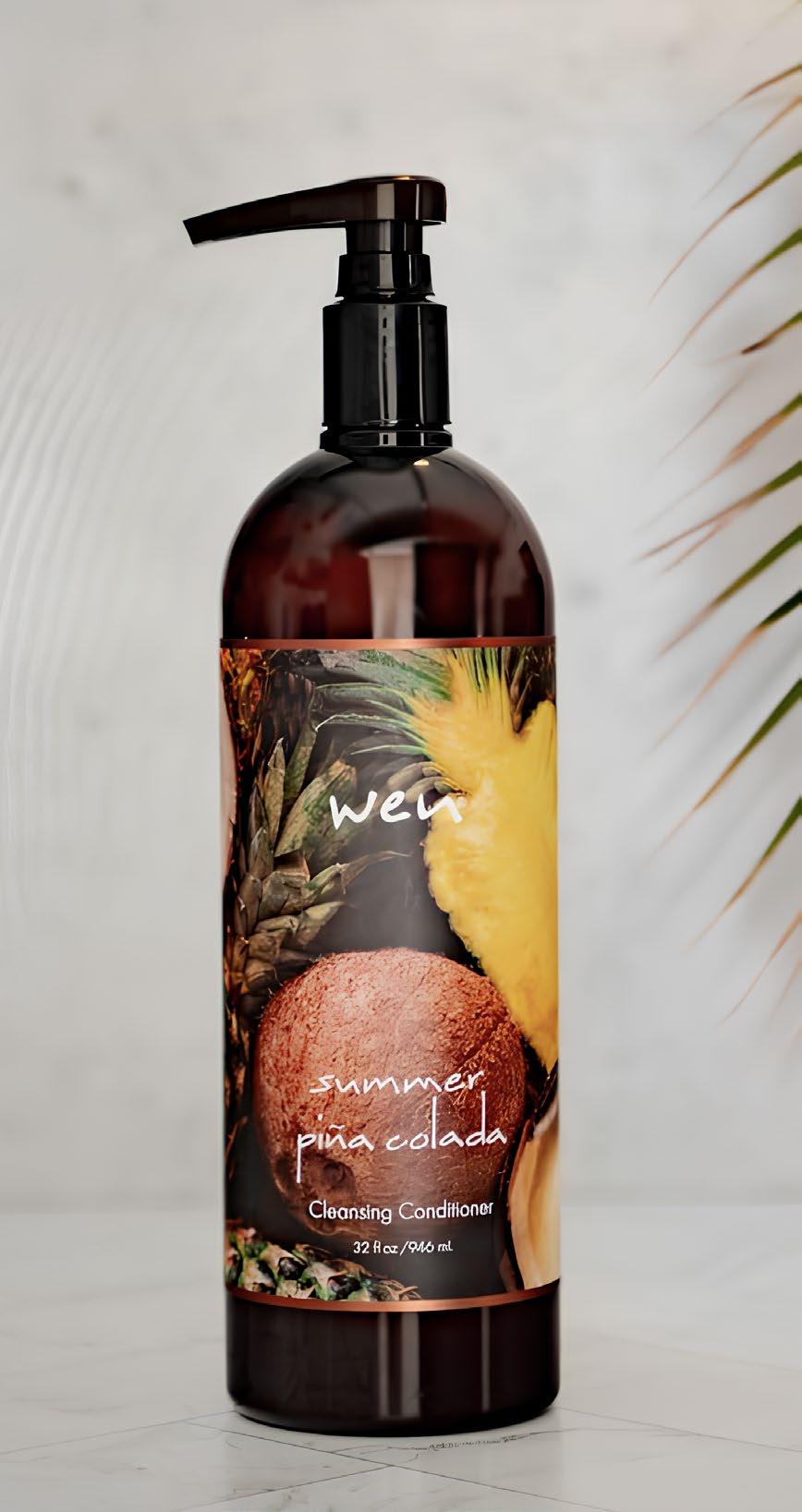
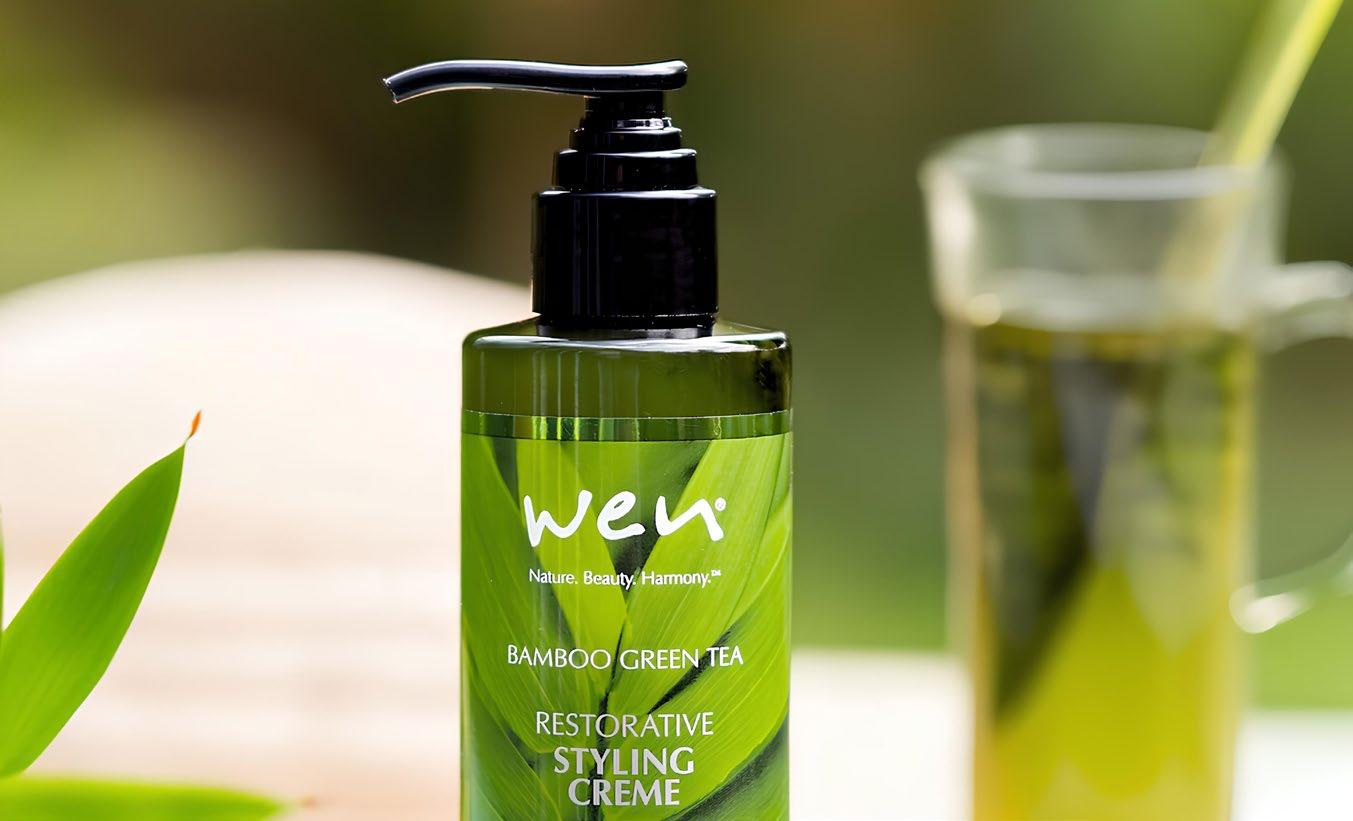
Rituals and Hero Products
Chaz swears by his Bella Spirit Lip Scrub and Lip Treatment for fighting sun damage on the lips. The scrub gently exfoliates with lemon peel and black rice seed, while the treatment hydrates and plumps with shea butter, hyaluronic acid, paraffin, and beeswax.
Also in his summer lineup: WEN® Nourishing Mousse, leave-in conditioners, and treatment mists. “I use everything I recommend. I don’t use any other products,” he says. “I treat my hair before swimming, mist after, and follow the same steps every time. If you stay consistent, your hair will feel beautiful and healthy all season long.”
Three Words for Summer Hair? Healthy. Hydrated. Voluminous.
Inspired by Nature
Chaz draws his creative energy from nature. “In London, I saw a lilac tree that inspired a whole product label. In Tokyo, I captured cherry blossoms in full bloom that led to a new scent,” he shares. “I see beauty everywhere — that’s the gift of being a photographer.”
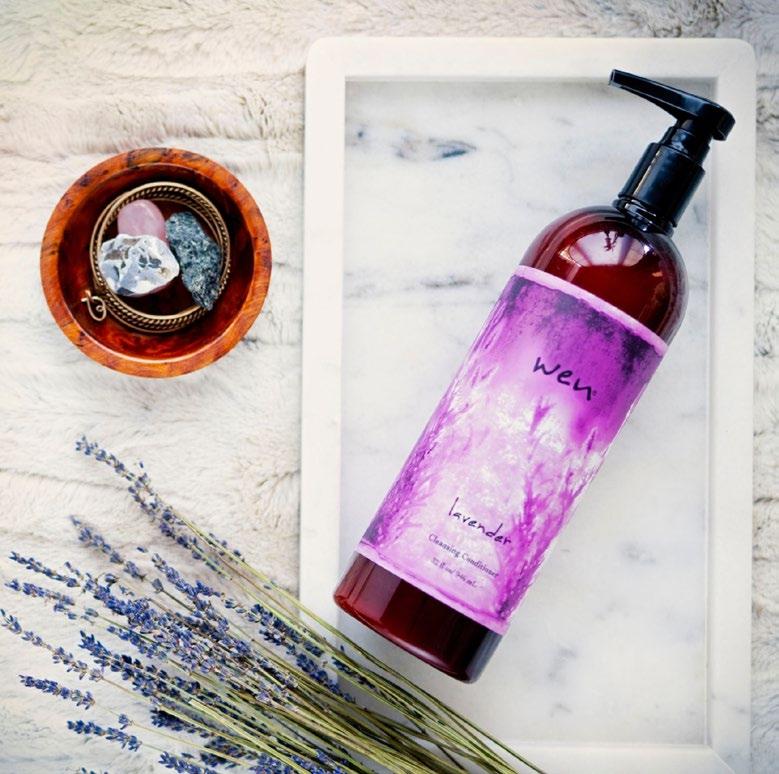

Golden Hair Hour is more than a season —it’s a mindset for hair health. With a few intentional changes to your routine, you can keep your hair glowing long after the sun sets.
Website: chazdean.com

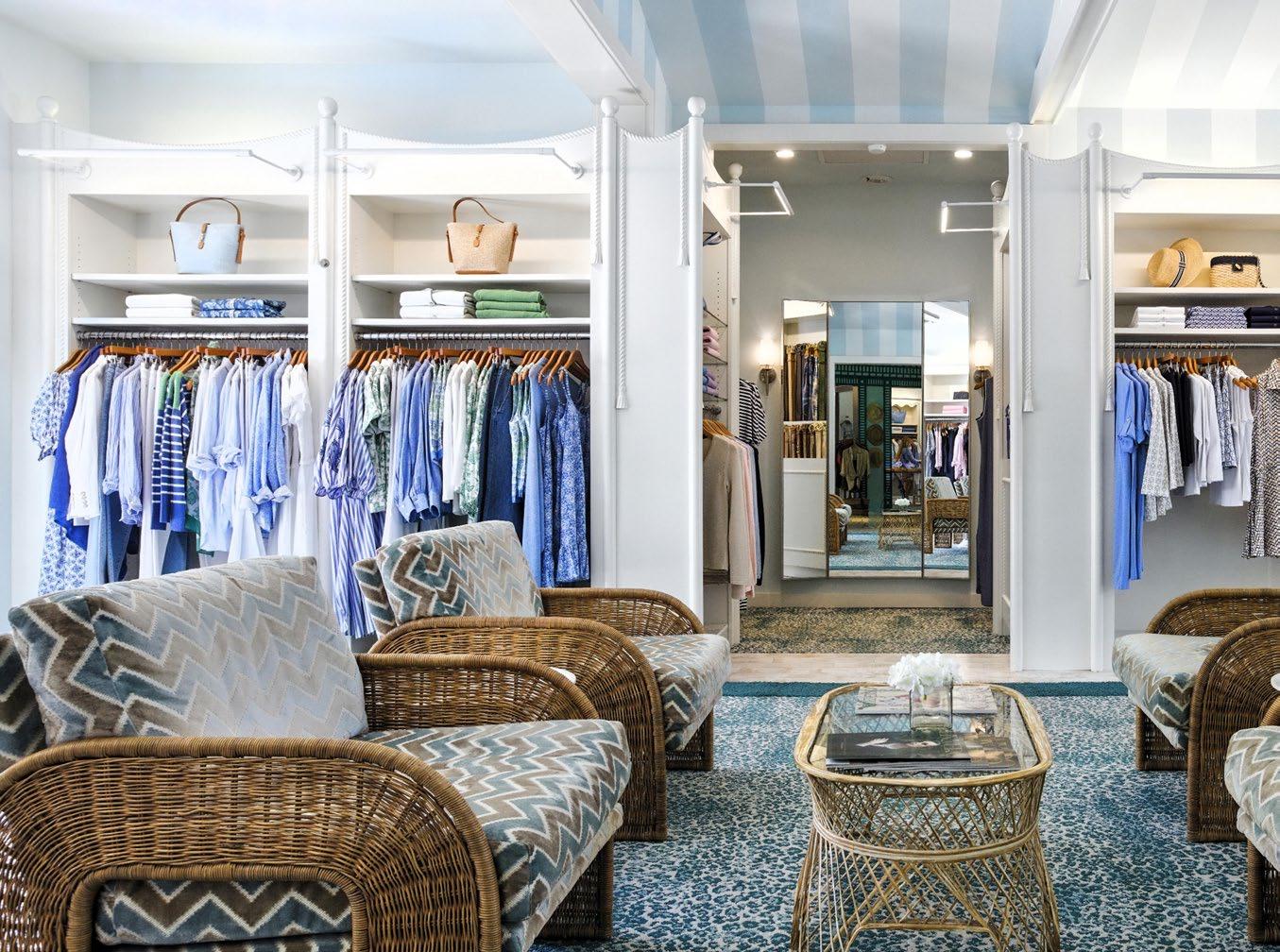
by Chris Foster photography by Yuri Semenyuk
On a mission to discover effortless summer style here in Vero Beach, we entered J. McLaughlin—and were immediately greeted by a mix of coastal elegance and curated charm. Located just north on the barrier island in the Village Shops, the boutique radiates a breezy sophistication that feels both upscale and welcoming.
What we discovered inside was more than just summer style—it was a store filled with thoughtful fashion, elegant silhouettes, and pieces that reflect the spirit of seaside living. From lightweight linens to patterned wraps, each rack offered a new layer of inspiration. But it wasn’t only the clothes that impressed us— it was the people.
Store manager Lynette Torres and stylist Caterina “Rina” Bruzzese greeted us with an energy that makes fashion exciting again. With a natural talent for pairing pieces and a warm sense of humor, Rina introduced us to one of the store’s signature accessories: the scarf. But this
wasn’t your typical styling session. With a few simple folds and flourishes, Rina transformed a patterned scarf into a rose-shaped brooch, then into a mini handbag. It was artistry in motion, showing that with a bit of imagination, even the most classic accessory can make a statement.
As the cameras rolled and sunlight streamed through the windows, we witnessed how J. McLaughlin provides something for every summer event. Whether you’re dressing for a seaside brunch, a barefoot garden party, or simply elevating your everyday style with a fresh look, this boutique delivers.
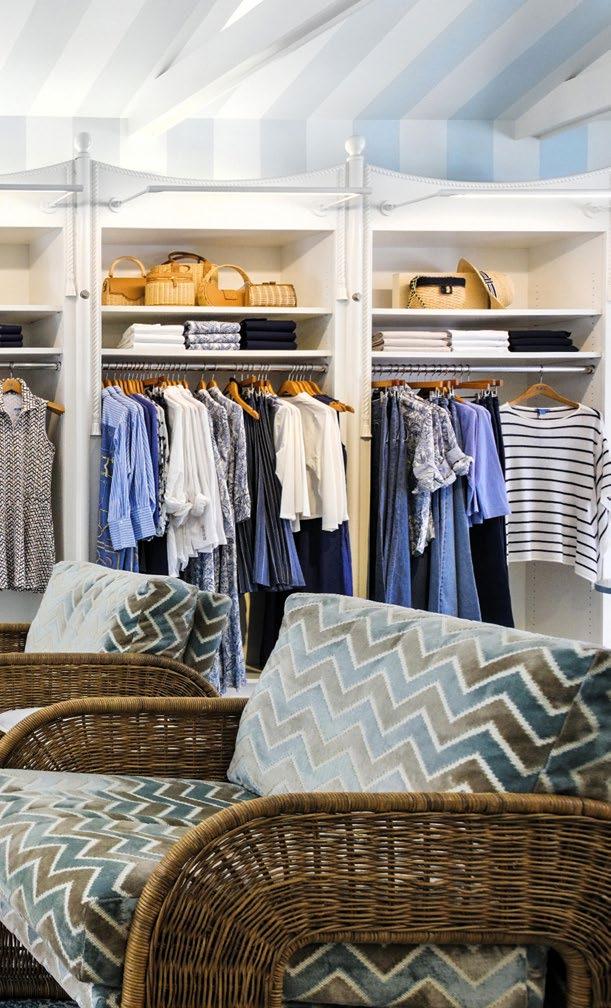
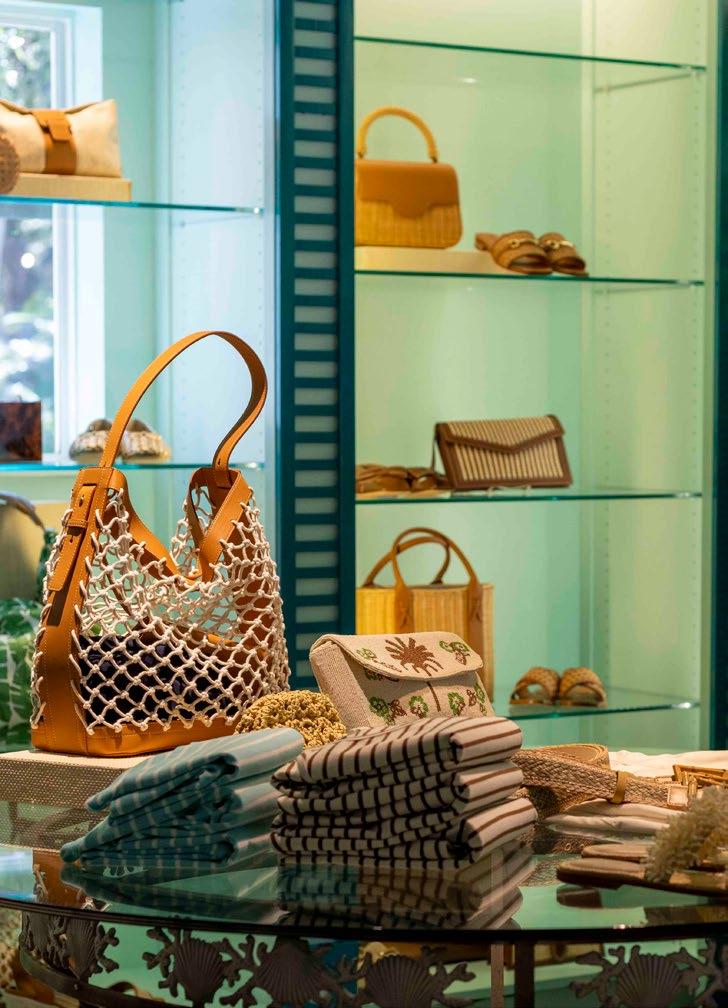

Fashion, to me, is about taking risks— expressing who you are in the moment and who you’re daring to be next. What we found at J. McLaughlin is a space that makes those risks feel exciting, supported, and completely personal.
From casual to elegant, simple to striking, J. McLaughlin in Vero Beach is redefining coastal chic with heart, heritage, and style you’ll want to wear all season long.


6210 N Highway A1A
Vero Beach, FL 32963
772-231-4887
Instagram: @jmclaughlin
Website: jmclaughlin.com
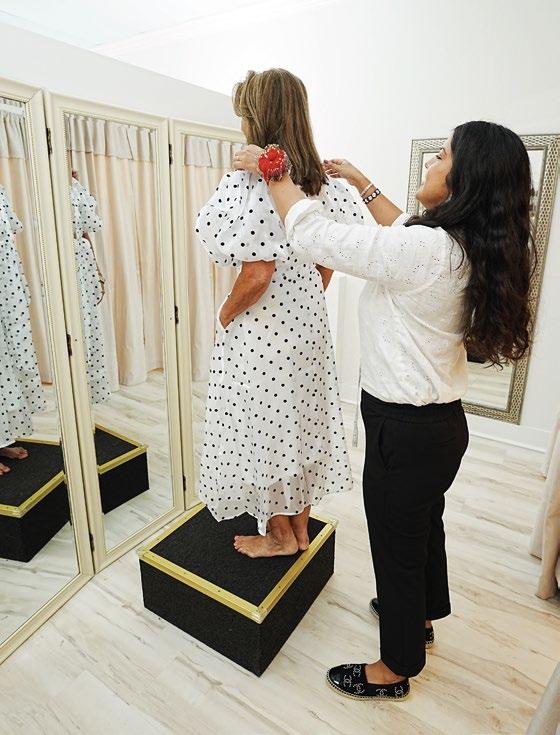





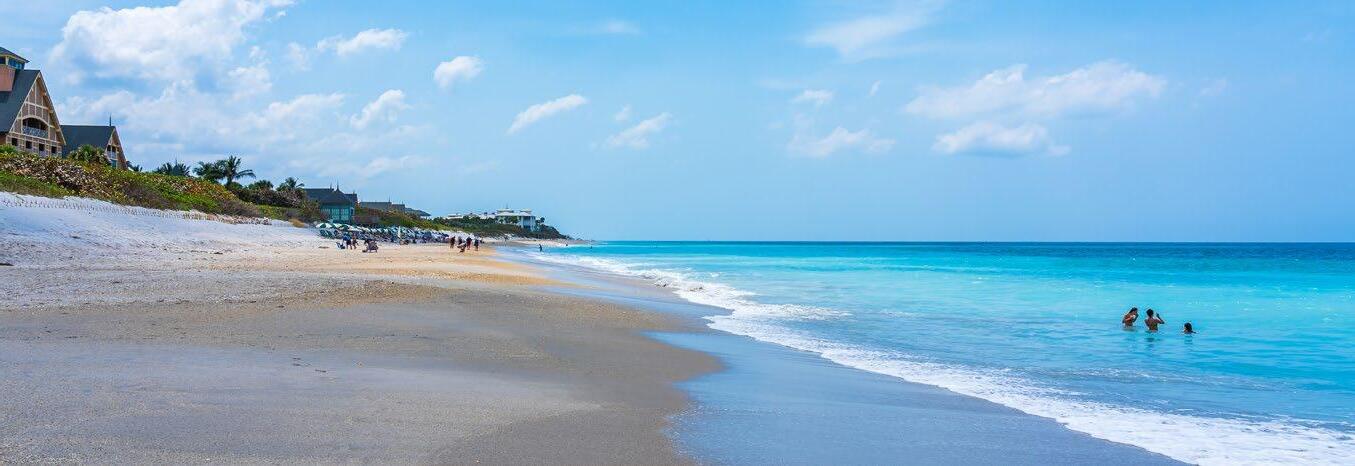
by Chris Foster
The crystal-clear waters off Florida’s Treasure Coast may appear perfect, but just beneath the surface, coral reefs are quietly struggling. What many beachgoers don’t realize is that something as small as the sunscreen on your skin could be contributing to the issue.
The hidden harm in your beach bag Conventional sunscreens often contain chemicals like oxybenzone, octinoxate, homosalate, and avobenzone—ingredients that not only absorb UV rays but also harm marine ecosystems. When swimmers enter the water or rinse off in the shower, these chemicals wash into the ocean, where they bleach coral, deform marine larvae, and disrupt algae—the foundation of the reef food chain.
Scientists estimate that over 14,000 tons of sunscreen end up in oceans each year. Even in small amounts, these chemicals can harm coral reefs and build up in marine life, from tiny plankton to the fish we eventually eat.
Reef-safe sunscreens are made with nonnano mineral ingredients—usually zinc oxide or titanium dioxide—that stay on the skin to reflect sunlight instead of being absorbed. They’re free from chemical filters and biodegradable, so they won’t linger in ocean water or harm marine life. These formulas have evolved from thick, chalky pastes to sleek, sheer lotions that are just as effective—without the ecological footprint.
It
Florida’s coral reefs are the third-largest barrier reef system in the world—and among the most endangered. Rising ocean temperatures, overfishing, and pollution already threaten their survival. By choosing reef-safe products, locals and visitors can take a small step toward protecting a resource that supports tourism, marine biodiversity, and even coastal storm protection.
“People think it takes grand action to help the ocean,” says marine biologist and activist Dr. Elena Ross. “But reef-safe sunscreen is a small, powerful shift that anyone can make.”
LIV VERO’s Best Reef-Safe Sunscreens
Blue Lizard Sensitive Mineral Sunscreen SPF 50+. Made in Australia, formulated without oxybenzone; popular among dermatologists and travelers.
SunButter Tinted SPF 50 Face Mineral Sunscreen. Tinted daily zinc sunscreen for the face with high SPF and a smooth finish.
Project Reef SPF 50 Mineral Sunscreen. Non-nano zinc formula enriched with shea and aloe; great for active outdoor use.
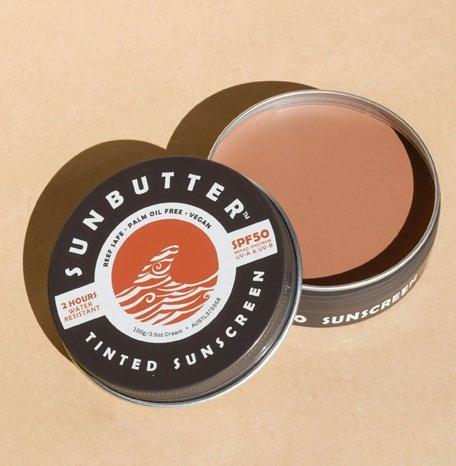
• Check your labels. Avoid oxybenzone, octinoxate, and “nano” ingredients.
• Cover up. Use UPF clothing, hats, and sunglasses to decrease sunscreen use.
• Support reef-safe brands. Many are available locally or through ecofriendly retailers.
• Educate others. Share your knowledge and encourage friends and family to switch.
The reef can’t speak for itself, but its fading colors and struggling wildlife tell a story loud enough for all of us to hear. With a simple conscious switch, your summer skincare can become part of the solution.
BECAUSE BEAUTY SHOULD NEVER COME AT THE COST OF THE OCEAN.
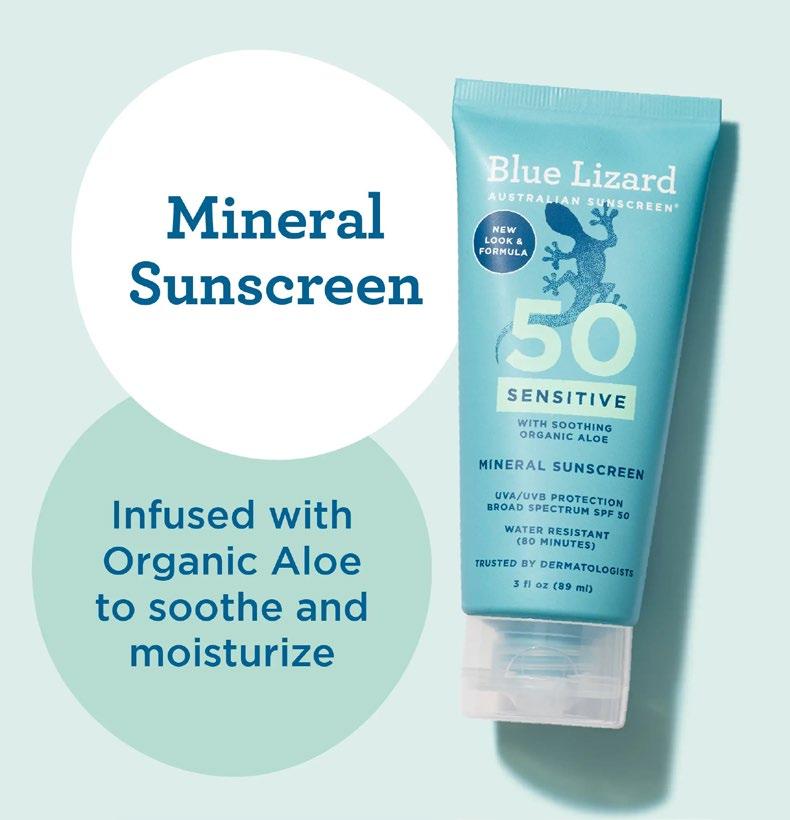
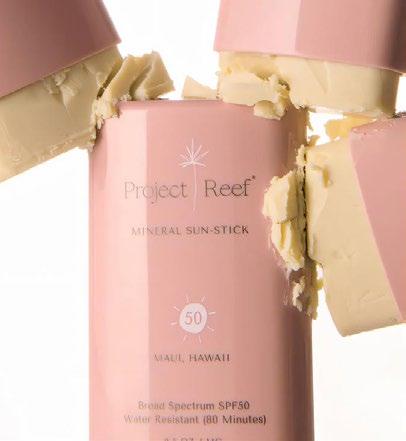

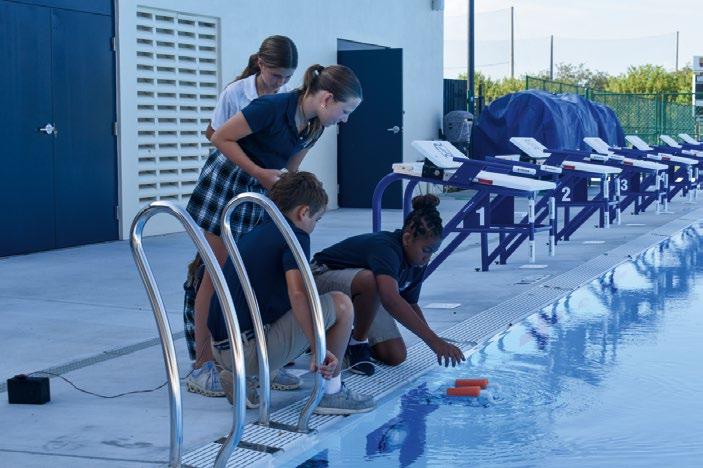





At Saint Edward’s School, students experience science labs, Spanish and fine arts at every grade level, benefit from a dedicated safety and wellness team, and this year, achieved a 94% AP exam pass rate.
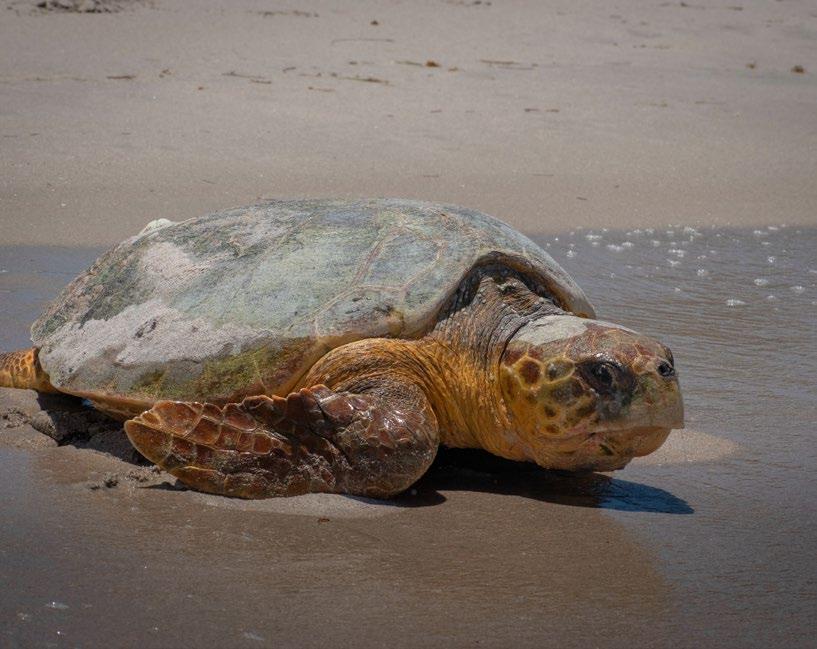
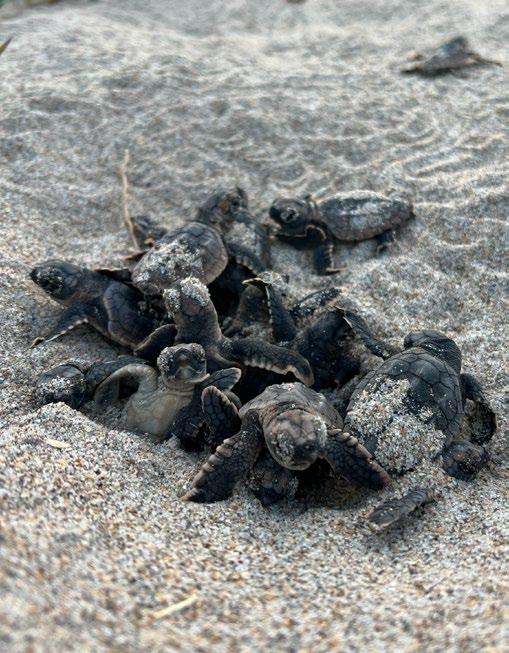
Conducted by by Jim Field photography by Ecological Associates, Inc.
Editor’s Note: Quintin Bergman, Coastal Resource Manager for Indian River County, is a driving force behind efforts to renourish our beaches and protect our sea turtle populations. I asked Quintin to assist in preparing this article, our objective being to provide a detailed accounting of sea turtle nesting, imparting readers with an “upfront and close” sense of this amazing phenomenon.
JF: To begin, when is nesting season and what types of sea turtles lay eggs in Indian River County?
QB: Sea turtle nesting season for us runs March 1 to October 31. We have three species of sea turtles that nest on our beaches: loggerhead (Caretta caretta), accounting for 84% of nests; green (Chelonia mydas), 14% of nests; and leatherback (Dermochelys coriacea), 2% of nests.
JF: Can you paint a picture of what’s happening with the sea turtles before nesting reason?
QB: Offshore you have adult turtles, male and female. As nesting season approaches, they start migrating away from foraging areas where they live most of the year. The migration distance could be thousands of miles away. Amazingly, the female returns to the same beach location where she herself was born.
JF: How precise is their return? Is it a small stretch of beach?
QB: No. It’s more like they return to our county’s 22.5 miles of beach. But in the grand scheme of the oceans, that’s precise targeting. The scientific word is “natal homing.” Simply put, they have cells inside their head that read the Earth’s geomagnetic field, pointing them in a compass direction leading to “home.” It’s an emerging area of research.
JF: Where does mating occur, and when?
QB: Green turtles tend to mate fairly close to shore. You can actually see the green turtles from the shoreline—two turtle heads out there, bumping into each other. Loggerheads mate in deeper water. And we don’t really know where leatherbacks mate. Sea turtle reproductive biology is fascinating. Females have an organ that stores sperm following insemination. So
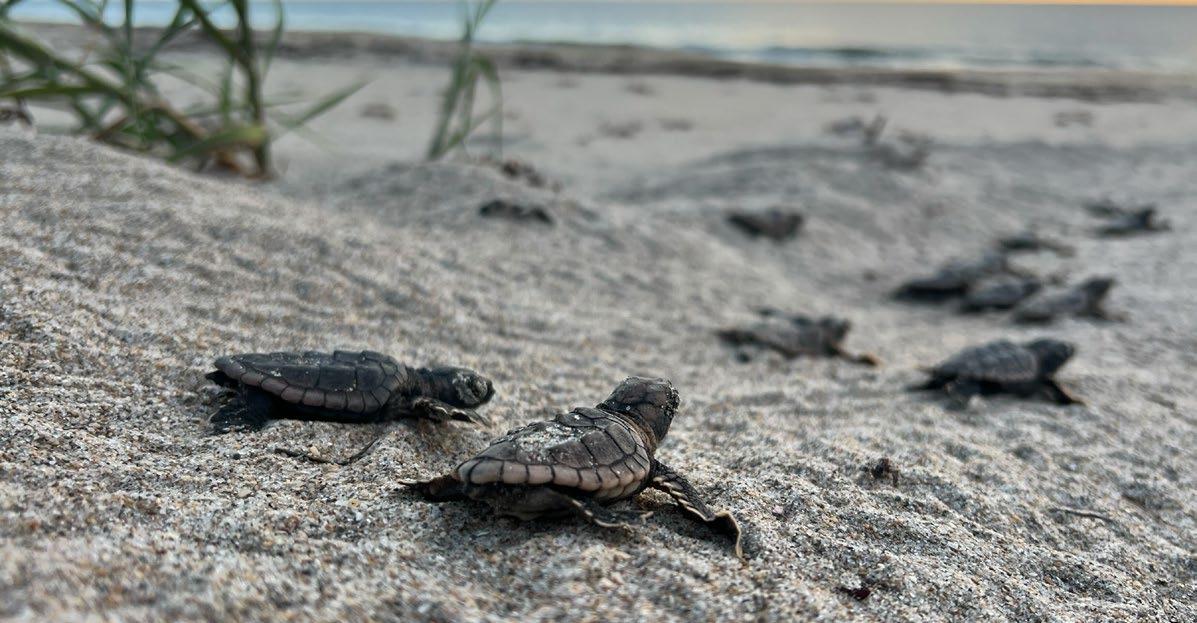
it’s not like human fertilization where it has to happen right away. The female will store sperm and inseminate eggs periodically. In addition, females will mate with more than one male—it’s called multiple paternity—thus mixing sperm, which imparts genetic diversity and survival benefits for the species. Accordingly, for every nest of eggs, there is one mother and multiple fathers represented.
JF: Incredible, nothing more elegant than nature.
QB: Exactly. Roughly two weeks after the initial insemination, the female will choose her nesting beach and emerge out of the water, typically at night. Leatherbacks come in first, then loggerheads, and lastly the greens. Remember, males never leave the water. Not every exit from the water will work out; if she doesn’t like what she encounters, she’ll do a “false crawl,” where she exits, turns around, returns to the water. Oftentimes she’ll immediately try again in a location just a little further away.
JF: Yes, I’ve seen those tracks, a tight U-turn.
QB: She’ll crawl to the site where she intends to place her nest, digging a hole with her back flippers. It might be dark and without moonlight—she can’t see anything—so it’s done on instinct and feel. She’s very meticulous digging out this hole, going as deep as her flipper size allows. She lays anywhere between 100-120 eggs, maybe 140 in some cases. The eggs are soft and leathery, plopping out with every contraction, the grouping called a “clutch.” When finished, the turtle will use her back flippers to cover the clutch with sand and pat down the area. Finally, starting back towards the ocean, she’ll pause and use her front flippers to throw sand behind her—what we call camouflage—an evolutionary trait to hide the nest from predators. She’ll never return to those eggs again. There’s no parental care.
JF: It’s all about volume, right?
QB: True. Species survival is based upon laying a multitude of eggs and having a subset survive, as opposed to protecting and caring for a chosen few to the point of independence.
JF: Once the female re-enters the water, where does she go? What’s next for her?
QB: She’s going to hang around offshore, often in the nearshore hardbottom reefs, often in deeper water. She isn’t seeking male companionship. Using the stored sperm, she will inseminate herself again, and two weeks later crawl ashore to deposit another clutch. Following this, she will do it again, producing up to six nests in one summer. Doing the rough math: six nests every two weeks means she will spend three months laying eggs. Six clutches with 120 eggs per clutch means she will produce 720 offspring, a percentage of which will make it into the surf. Finally, looking at loggerhead turtles specifically, if we assume they collectively lay 6,500 nests per season in Indian River County (the range is 5,000-8,000) and six nests per female, then over 1,000 different females participate in the nesting. Turtles start to reproduce when they are 20-30 years old, and they will continue to reproduce until the day they die, most living well beyond 50 years.
JF: Will the females seek food during this nesting duration? For example, on the nearshore hardbottom reefs?
QB: Actually no, they’re not focused on eating. They’ll hang out on the reef, tuck themselves under ledges, just waiting for the next batch of eggs to develop inside. Interestingly, researchers have measured fat content on these turtles. Initially they come in really fat and by the end of the season they’re skinny. They purposely prepare for the extreme energy expenditure required for reproduction. Presumably, fatter females could lay more eggs and clutches.
JF: How much does the exact location of the nest on the beach influence the survival chances of a clutch?
QB: It’s significant. She will attempt to get as far away from the surf as possible to escape high tide. You don’t want the nest to get swept away; you don’t want it to get flooded with standing water. But she can only control so much. Tides will change in strength across the nesting season. Some beaches will be narrow, limiting her ability to crawl up the berm and into the dune. And if the beach is “armored” with a wall, she’ll hit a dead end close to the surf. Imagine the challenge at hand. Consider a female who’s never nested before. She hasn’t left the ocean in 20-30 years—it’s her first time. She’s not necessarily good at it. From a physical perspective, if you’ve lived your entire life in the water floating
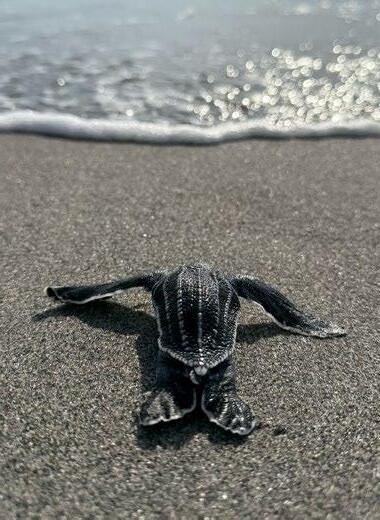
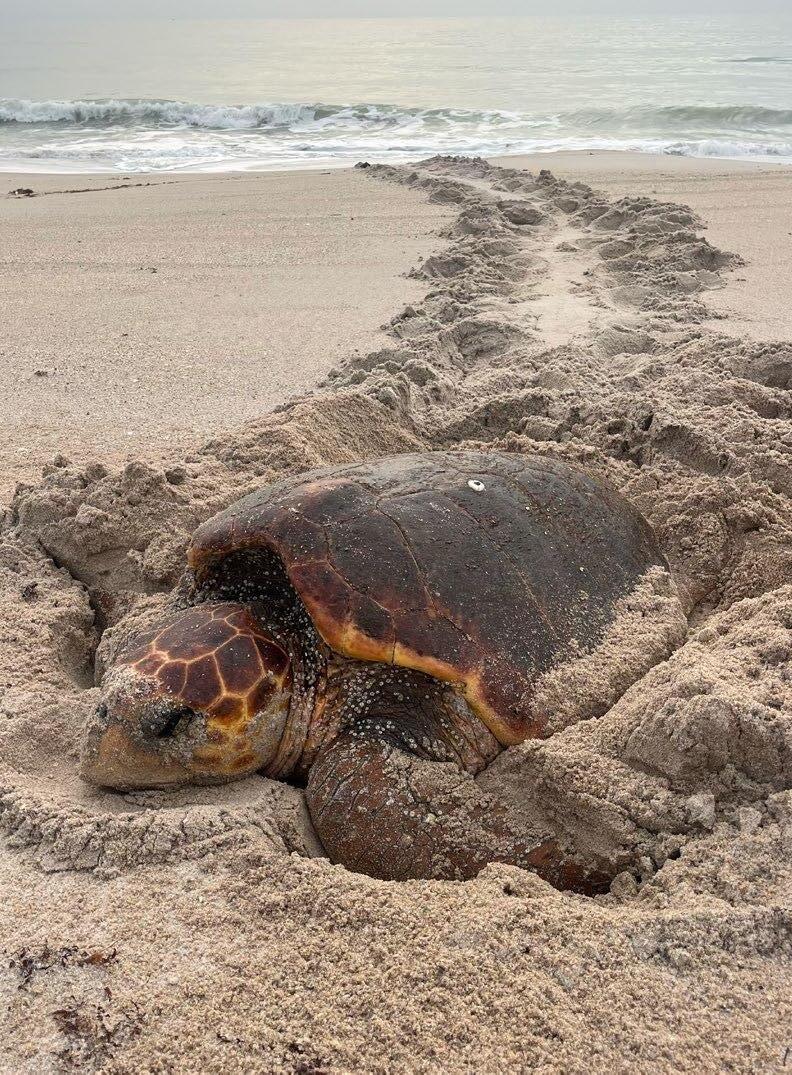
and swimming almost neutrally buoyant, you’re faced with hauling yourself up the beach feeling the full weight of gravity. She’s moving slower. She’s burning a ton of energy. She’s trying to figure it out. So sometimes we do see nests close to the water’s edge, vulnerable to the ocean’s power.
JF: How long is the incubation period?
What’s the mix of male and female?
QB: The incubation period depends on temperature and moisture content, lasting anywhere from 40-70 days, and in some cases, even 80 days. There’s no formula. What’s really cool is that during incubation gender is largely determined by temperature. [In mammals, biological sex is
determined by chromosomes, specifically the sex chromosomes X and Y.] Cooler eggs will turn into males and warmer eggs into females. “Hot chicks, cool dudes” is how you remember that. In perfect conditions, one clutch will have a 50/50 split. You can identify the variables that come into play: eggs located near the center of the clutch will be warmer than eggs on the perimeter; eggs closer to the surface, or those aligned to the sun’s direction, will also be warmer.
JF: Will all the eggs hatch at one time, or across a period of hours or days?
QB: It largely happens at once—as if someone set a timer. Of course, a percentage won’t hatch at all, and others a bit later,
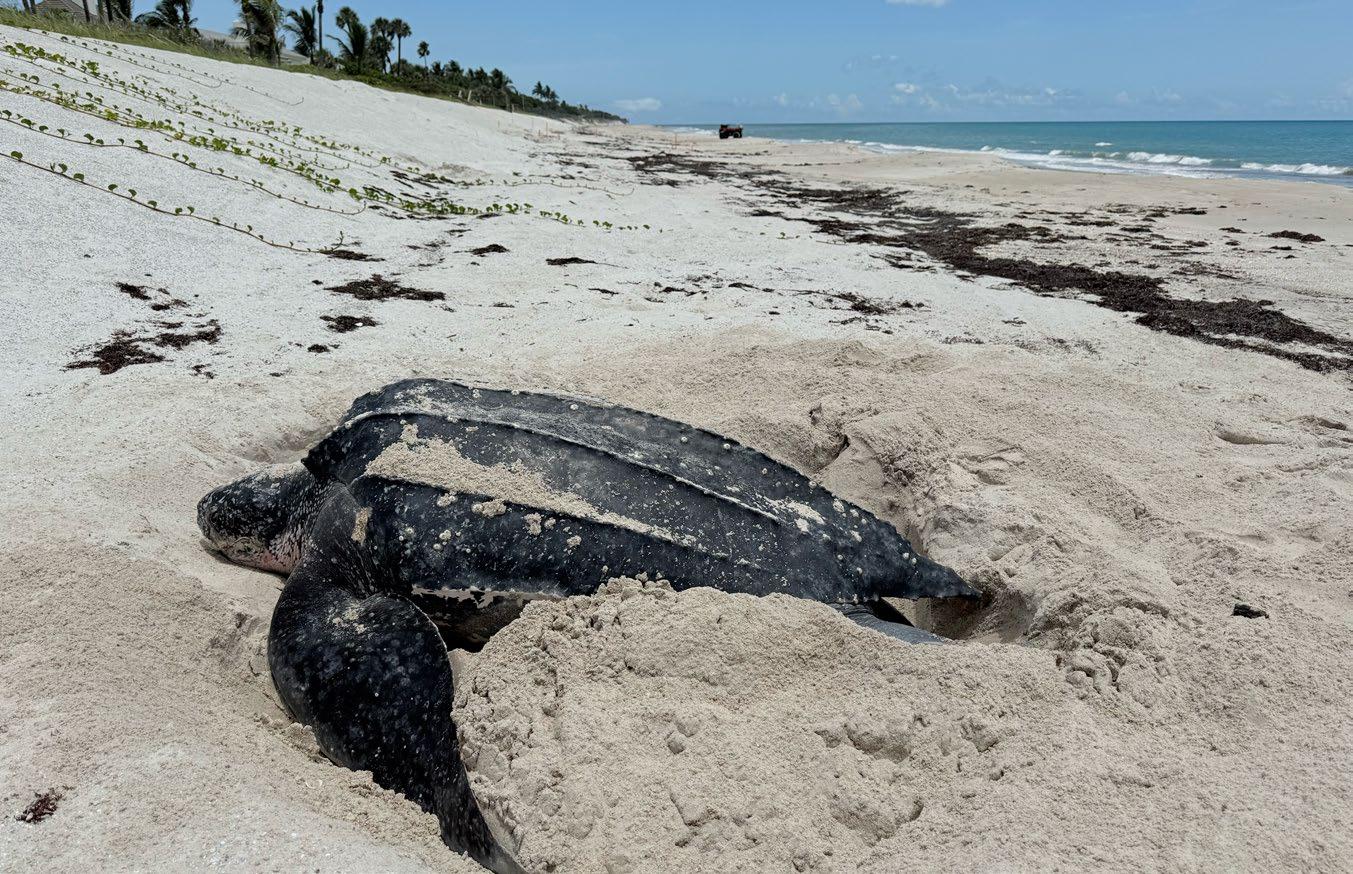
but it’s a mini-eruption. They typically hatch at night. How do the hatchlings know? After all, they’re buried under sand and can’t see anything. The answer is they gauge the barometric pressure change at night. They bust out of their egg casings and stay under the sand for maybe a day or two. They’re stretching out of their shell, which they’ve been curled up in. And then they’ll collectively crawl out of the sand together—they literally boil out of the sand.
JF: And now the quest for survival really kicks in.
QB: It really does. They’re exposed on the surface. They have to find the ocean by instinct. As newborns their eyesight is not yet developed. To the west there is dune vegetation, which doesn’t reflect light. Nor does the sand itself. But to the east the ocean will reflect light from the moon and stars. Wave action will also appear a bit white, perhaps dimly, but it’s another source. So one instinctual strategy is to seek out the brightest, lowest horizon in their natural setting. In addition, re-
search has established that they’re also using their sense of touch, they’re feeling the waves crashing, the vibrations, and they can smell the ocean. In such tenuous circumstances, you can understand how harmful artificial light sources can be, disorienting them, sending them into the dunes, into landscaping, onto A1A.
JF: Speaking of dangers, what other threats do they face?
QB: Lots. First of all, there’s the big threat of eroded and disappearing beaches, which directly translate into reduced habitat for nesting. Every time a beachfront homeowner builds a steel wall to protect their property, that’s one more length of beach where a turtle may not successfully nest. Thus the importance of the County’s beach renourishment efforts. Then there is human presence near a hatching nest. Voices, flashlights, even a shadow can interrupt their natural processes. It’s best if we let nature take its course and we’re not present. And of course there is nature’s onslaught of predators—it’s everything trying to eat everything else and them-
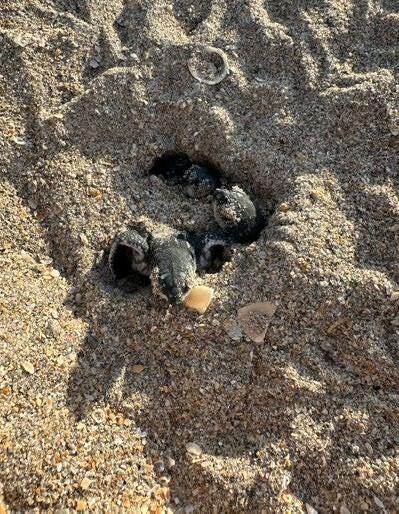
selves not getting eaten. Raccoons, armadillos, cayotes, possums—old records show black bears—panthers, bobcats, cats, dogs, shorebirds, fish crows, frigatebirds, and finally fish, any species with a mouth big enough to eat a tiny hatchling, especially bluefish and including our many varieties of sharks. It’s quite a lineup.
JF: I’m exhausted just listening.
QB: The hatchlings are heading towards the surf and only have so much energy. They haven’t fed, there’s no food source for them. They’re sustaining themselves on the yolk sack from the egg. Importantly, a couple of things are happening on the trek from nest to water. They’re setting a home beacon, placing a pin, picking up magnetic fields that define home. And they’re warming up, using their flippers, crawling for the first time. And here’s where humans can inadvertently do harm. People want to help animals, especially babies and if they’re struggling. The temptation is to pick up a hatchling and carry it to the surf. But in doing this you’re denying them an important physiological developmental step that prepares them to swim. It’s best to step away, keep your distance, and help by keeping birds and other predators away.
JF: That’s important advice.
QB: So imagine, a brand new organism just came into this world and within 24 hours it now has to swim for miles. In the surf, they have to make it through the waves. They can orientate themselves and actually duck dive under waves. And then they go on a swimming sprint, for one to two miles, swimming straight out, away from the coast, hopefully surviving the gauntlet. Ideally, they’re looking for sargassum weed, a type of brown algae that floats freely on the surface, forming island-like masses that can stretch for miles, each one a mini-ecosystem of organisms and species, which the hatchlings will join for the first few years of their lives. This will be their nursery.
JF: That’s amazing, they could in fact swim right over the top of a parent, resting on the bottom between nests. QB: Depending upon conditions, sargassum weed might be present in small or large quantities. Eventually the hatchlings locate some, and as they mature, they’ll swim between sargassum weed islands, going with and against the current, until eventually they move on to populate forage areas with adults.
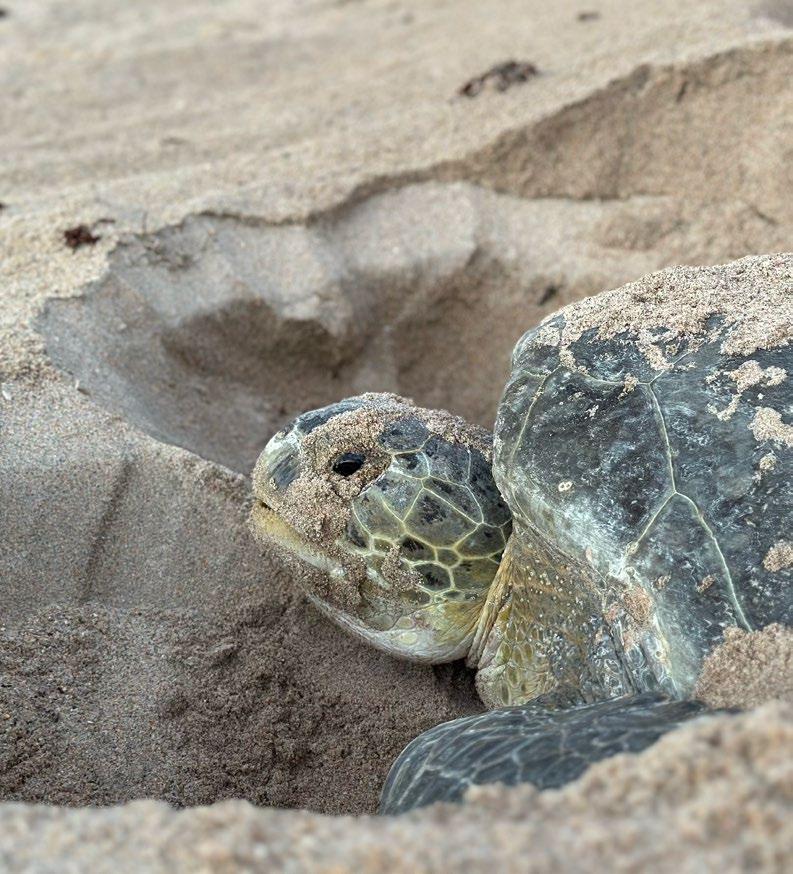
Part 2 of this article will appear in the September issue and focus on the organizations and people that manage the sea turtle nesting process.
Green Sea Turtle (Chelonia mydas)
A large, herbivorous marine turtle found in tropical and subtropical seas worldwide. Named for the greenish color of its body fat, which results from its plant-based diet. They have a smooth, heart-shaped shell with gorgeous markings—olive to brown with streaks or spots. Adults grow up to 5 feet in length and weigh over 300 pounds. They typically nest at two-year intervals that can vary significantly.
Loggerhead Sea Turtle (Caretta caretta)
A large marine turtle recognized by a huge, reddish-brown head and powerful jaws. Found in temperate and subtropical oceans, it has a broad, slightly heartshaped shell and can grow up to 3.5 feet long, weighing over 250 pounds. Loggerheads are carnivorous, feeding mainly on hard-shelled prey like crabs, mollusks, and jellyfish.
Leatherback Sea Turtle (Dermochelys coriacea)
The largest sea turtle, reaching over 7 feet in length and weighing up to 2,000 pounds. Lacking a hard shell, its back is covered by tough, leathery skin with ridged lines. They are found in oceans worldwide and known for deep dives (exceeding 4,000 feet) in search of food, primarily jellyfish, their shell flexing with ocean pressures. Their migratory range is the widest of any sea turtle species.

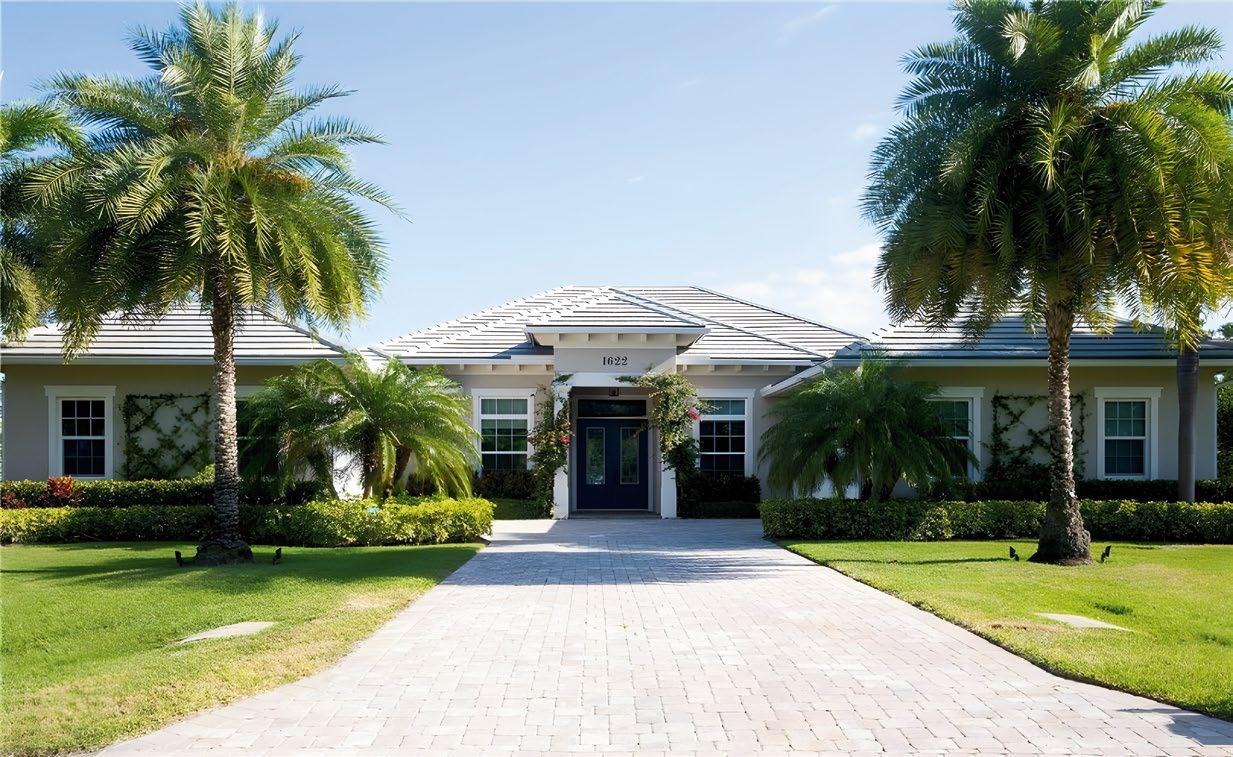
Where elegance, comfort, and convenience come together in one exceptional address. Step into soaring ceilings and sunlit elegance. Perfect for everyday serenity and unforgettable gatherings. From the grand foyer, take in the stunning view of your screened lanai, saltwater pool, and spa.
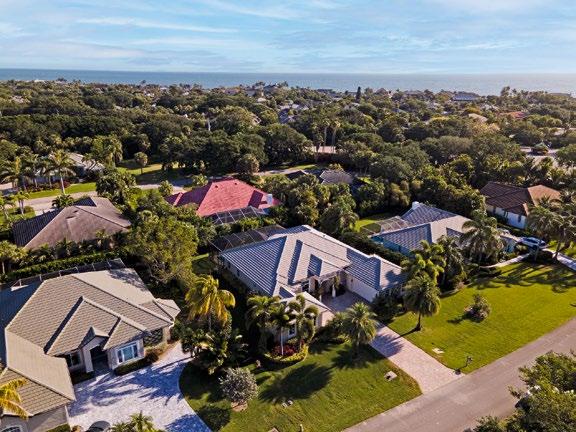
The chef-inspired kitchen features a 6-burner gas cooktop, double ovens, wine fridge, and a spacious walk-in pantry —ideal for effortless entertaining.
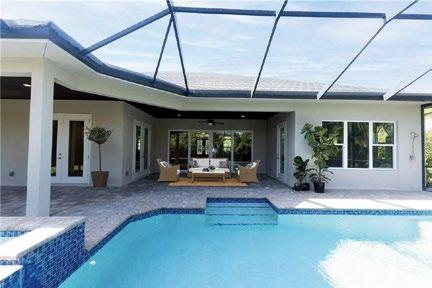
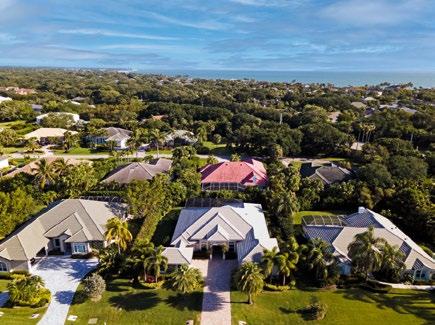
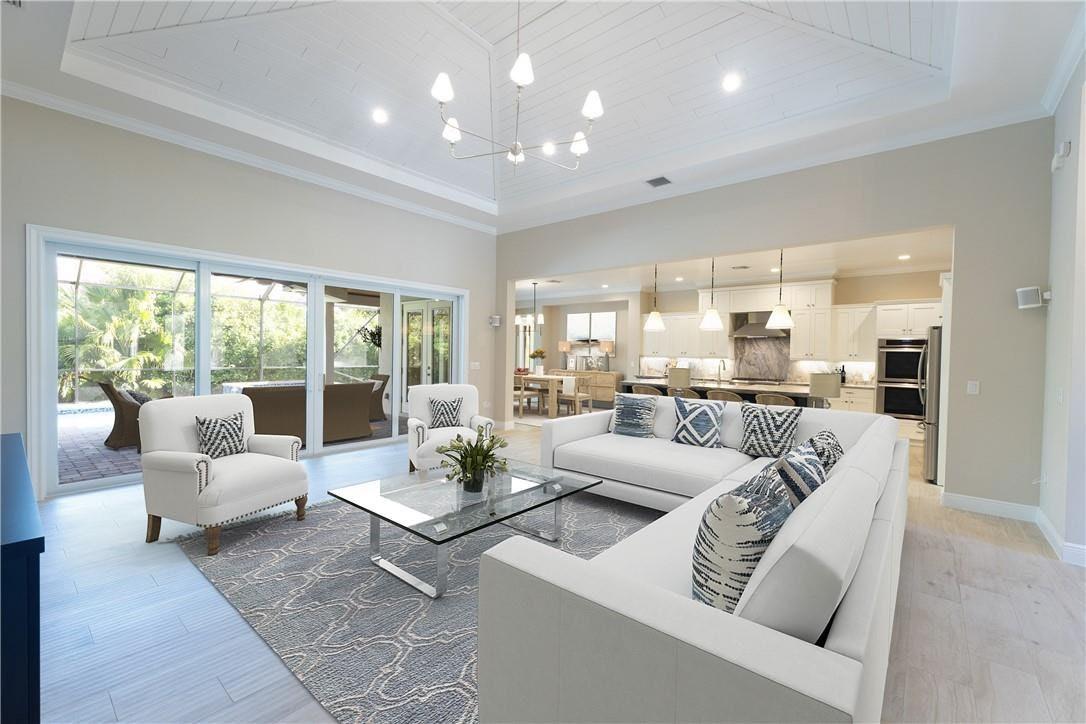
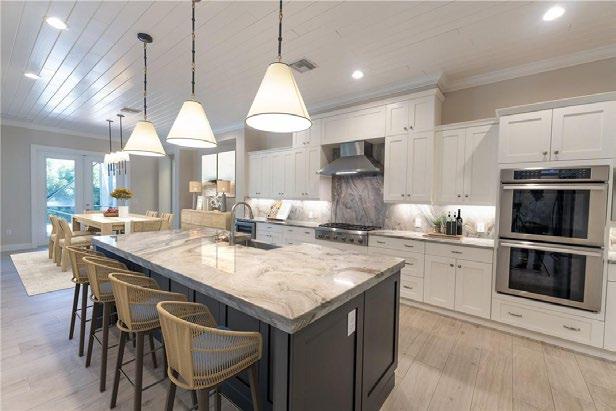
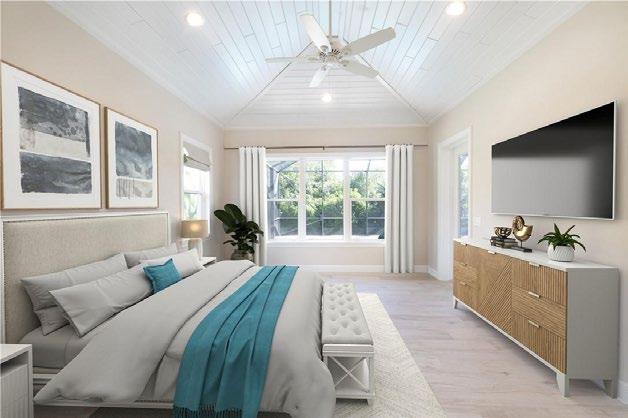
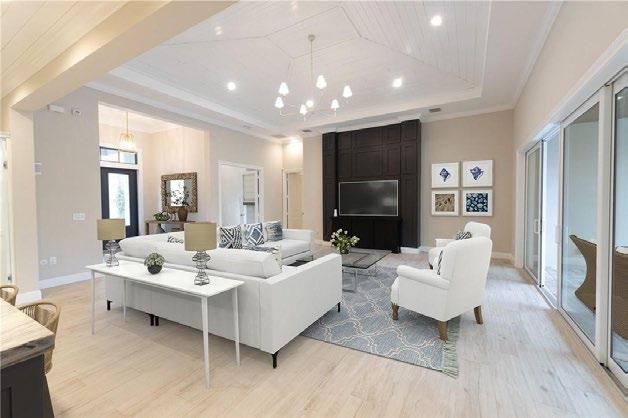
The thoughtfully designed 3-way split floor plan has 2,965 square feet and offers ultimate privacy, with a luxurious owner's wing complete with soaking tub, walk-in shower, and custom closets. Two ensuite guest rooms provide comfort and seclusion for visitors.
The thoughtfully designed 3-way split floor plan has 2,965 square feet and offers ultimate privacy, with a luxurious owner 's wing complete with soaking tub, walk-in shower, and custom closets. Two ensuite guest rooms provide comfor t and seclusion for visitors.
Features include lush landscaping, a full-house generator, impact doors and windows, 3-car garage, and a dedicated office space for remote work or study.
Features include lush landscaping, a full-house generator, impact doors and windows, 3-car garage, and a dedicated office space for remote work or study.
Located in the private, gated community of Sandpointe West, this move-in ready home is just a short walk to St. Edwards School and The Moorings Yacht & Country Club.
Located in the private, gated community of Sandpointe West, this move-in ready home is just a shor t walk to St. Edwards School and The Moorings Yacht & Country Club.
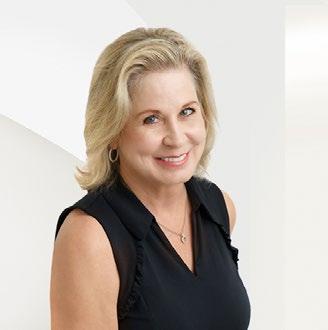
Offered at $1.895 million
Offered at $1.895 million
MLS # 287425
MLS # 287425
Diane Field - Broker Associate +1 (703) 915-4236
Diane Field - Broker Associate +1 (703) 915-4236
diane.field@evrealestate.com www.dianefieldrealtor.com
diane.field@evrealestate.com www.dianefieldrealtor.com
Schedule your private tour today
Schedule your private tour today

New Equipment Is Here!
Check It Out Covered Tennis Courts Coming Fall 2025

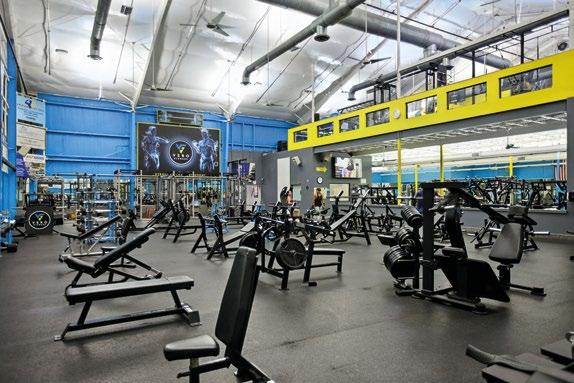
KEY METRICS: 100+ GROUP FITNESS CLASSES PER WEEK
58,000 SQUARE FOOT FACILITY
30+ YEARS FAMILY OWNED & OPERATED
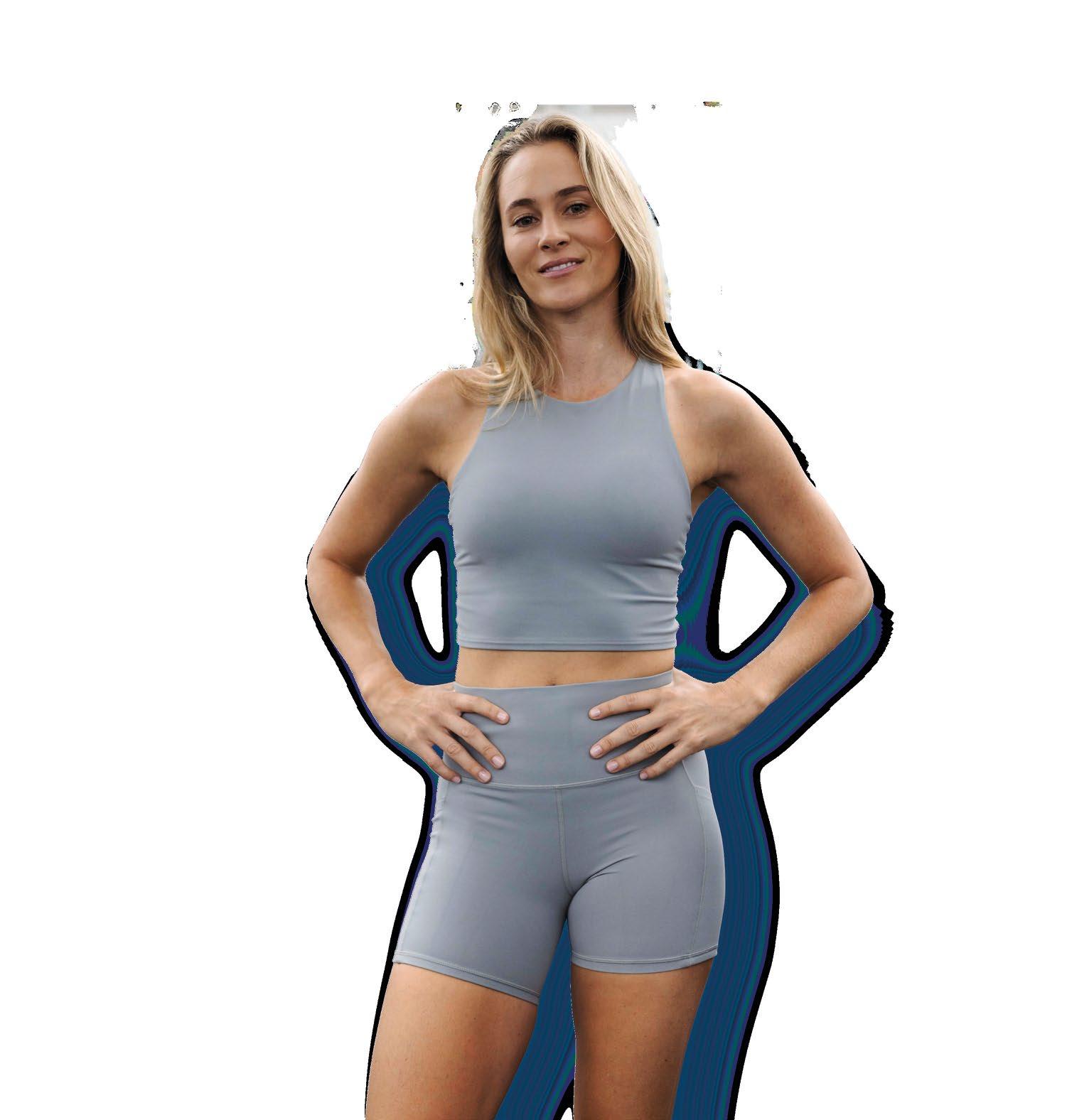

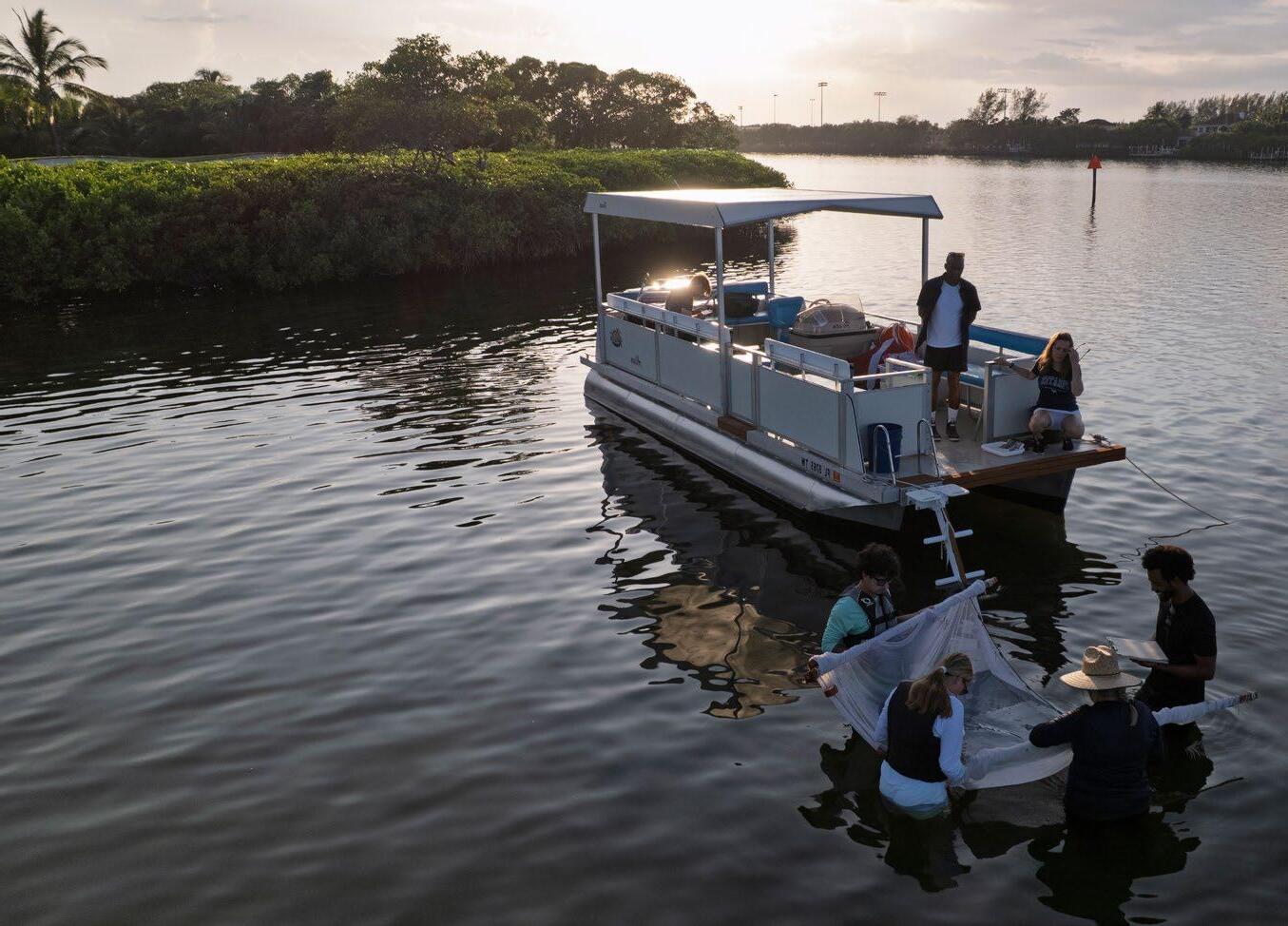
by Brandy Nelson photography by Yuri Semenyuk
Saint Edward’s School, located along the shoreline of the Indian River Lagoon (IRL) in Vero Beach, recently created the Marine and Environmental Sciences Program to provide inquiry-based and experiential learning opportunities for Upper School students.
As Director of this program, my charter is to teach challenging courses with significant portions of the classes devoted to hands on environmental studies. Students in the program tackle everything from upland pine ecology to IRL health, to the biodiversity and hydrology of the Florida Everglades.
The goal is for students to learn through immersive research experiences in each science topic. The Marine Science Honors, Ecology Honors, and AP Environmental Science classes within this specialized program incorporate extensive field studies, laboratory investigations, and projects related to aquatic and terrestrial ecosystems, emphasizing human impacts on biodiversity and environmental health.
Distinctively, the program offers students research-based classes to explore and deeply understand aquatic and terrestrial biology and ecology so that they may utilize the newly found knowledge and passion to help restore and protect our
natural world. Science is a verb for these students, and it’s amazing to watch them light up with all that they’re learning.
An alumna of Saint Edward’s and the University of Florida, I grew up on the lagoon, and these experiences led to a strong interest in wildlife studies and lagoon ecology. Prior to becoming a teacher, I served as a biological scientist, instructor, and marine education coordinator at the Harbor Branch Oceanographic Institute at Florida Atlantic University for over 15 years.
Further, I was a biologist and educator at the Ocean Research and Conservation Association (ORCA), where I focused on marine conservation and education, toxicology, and the operation of the deep sea video and data logger Medusa. It was the ideal setup to bring my background in
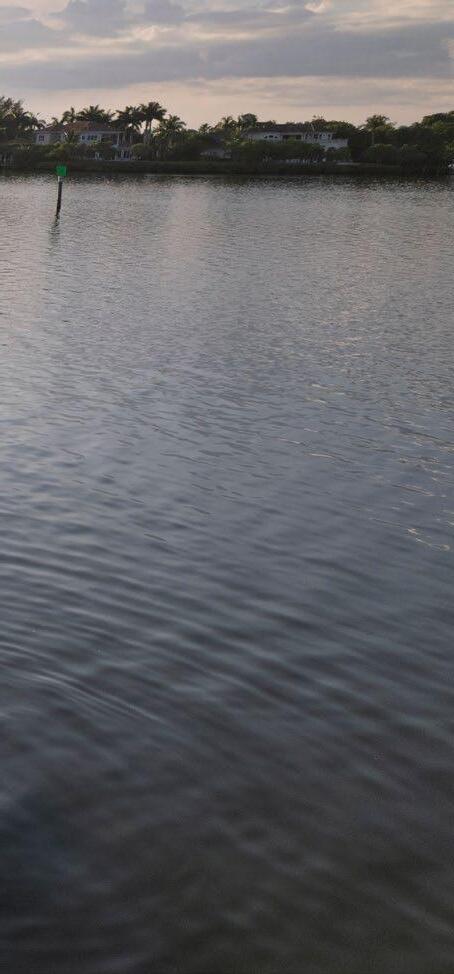
Florida’s aquatic and terrestrial ecosystems to my classroom lab, where students discover entirely new dimensions to the world where they grow up.
St. Edward’s barrier island location provides immediate waterfront access to the tranquil and shallow waters of the Indian River Lagoon Estuary, one of the most biodiverse estuaries in North America. My marine science students routinely explore and study the IRL or conduct day trips to the surrounding terrestrial, wetland, and riverine ecosystems that make up the watershed of the lagoon. I feel we have a responsibility to teach students how environmental processes and anthropogenic impacts shape the lagoon. Students investigate the complexities and importance of a healthy watershed. Then they begin to observe and understand the cause and effect of water quality and habitat loss on biodiversity.
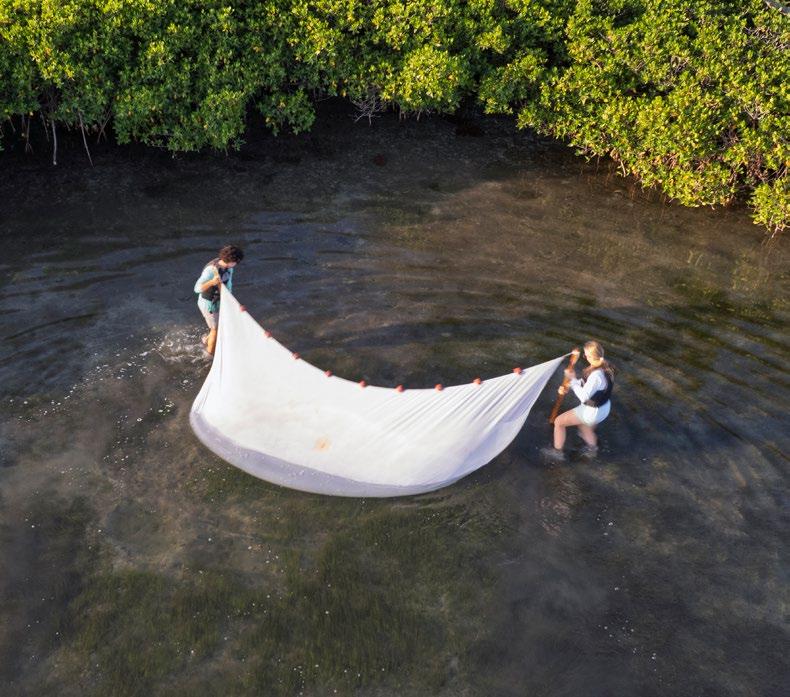
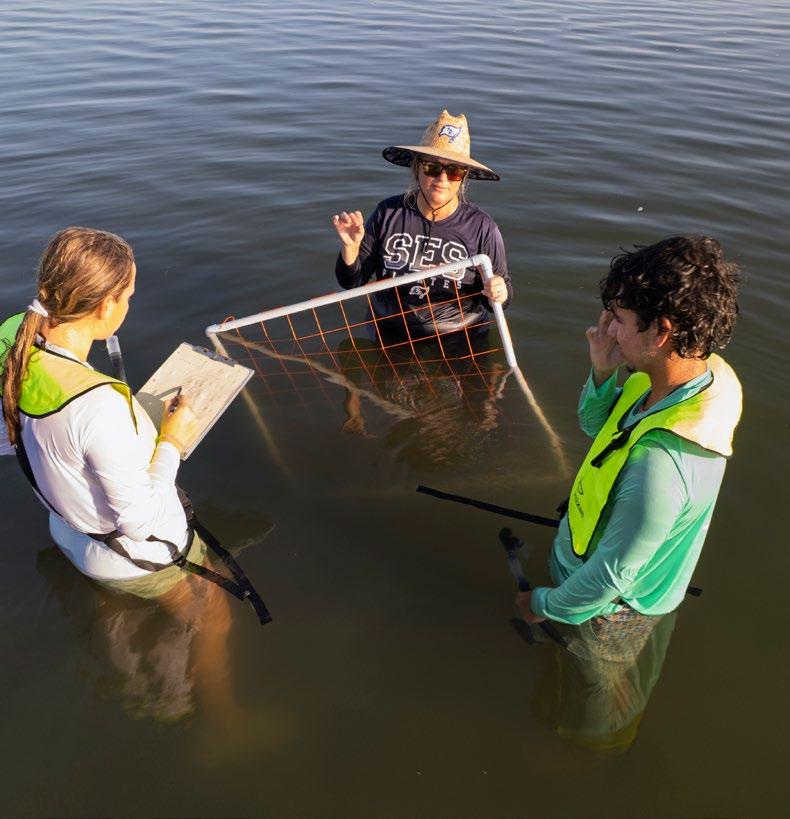
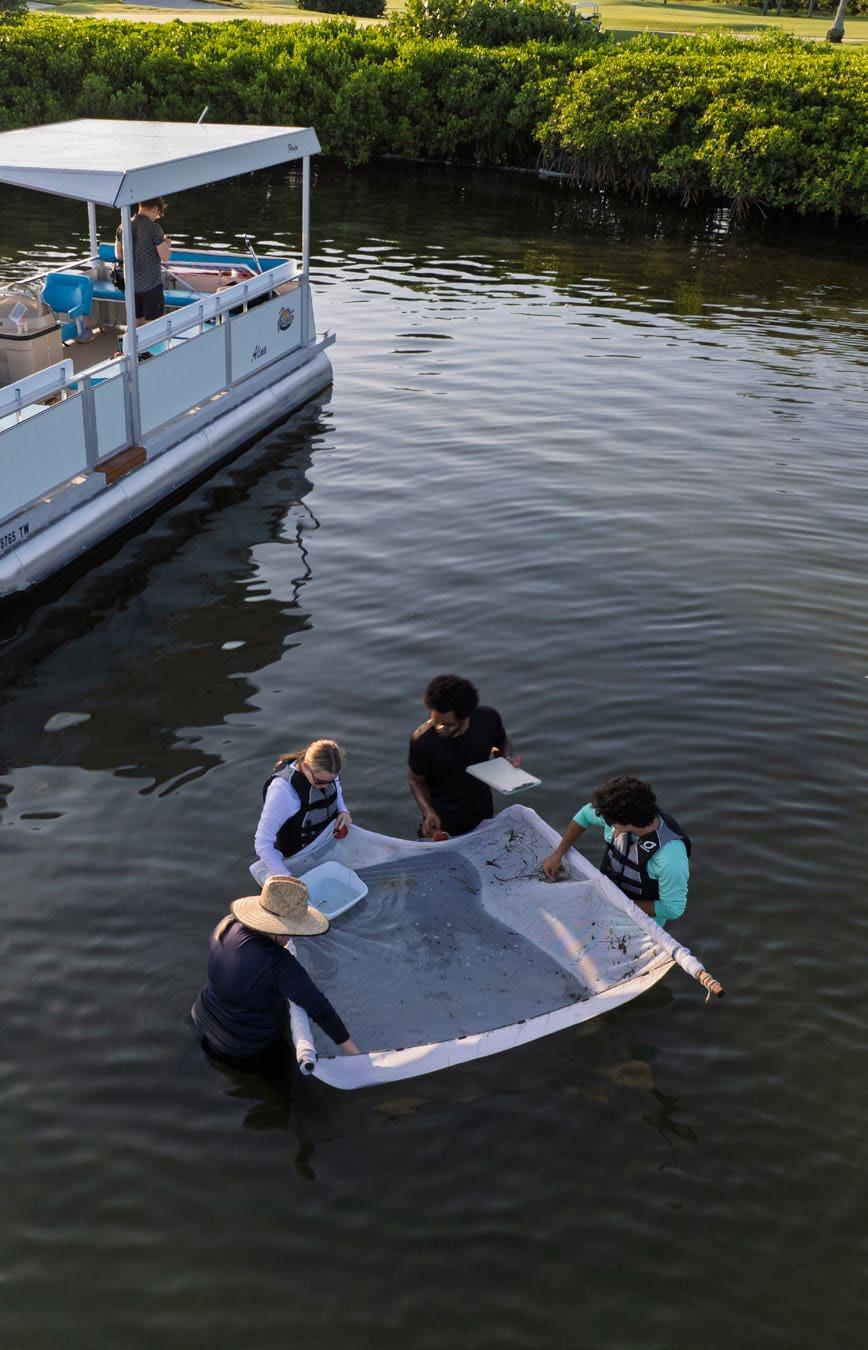
Program students board boats and kayaks, traveling to field sites in the lagoon where they have class discussions, seine the flats for vertebrate and invertebrate species, or snorkel the seagrass beds to observe benthic habitats. Incorporating lagoon-based classes strengthens scientific knowledge, research skills, and field sampling methods while emphasizing critical thinking, teamwork, and collaboration.
Current marine research is also infused throughout program classes to expand scientific literacy and provide both practical application and vision for the future in marine research and the health of the IRL.
Above all else, my role is to impart students with critical skills necessary for collegiate and professional success. Students learn current research skills and methodologies in these elective classes. They practice and problem solve, increasing their resiliency and confidence in their abilities. Finally, they learn to analyze data, create a research poster, and communicate their knowledge. Science should be rigorous, but fun, and I never want them to stop asking questions.
In addition to classwork related to marine studies, collaborations with community research and conservation organizations provide additional stewardship and research opportunities. Students recently completed a water quality and biodiversity research project as part of a grant to support the Indian River Lagoon National Estuary Program (IRLNEP). Projects encompass aquaculture, salt marsh studies, cleanups, fishing line recycling, living shoreline restoration, and bivalve restoration projects associated with preserving the IRL.
Personally, I am incredibly fortunate and grateful to be part of a program that incorporates my love of environmental research, education, stewardship, and the IRL. The enthusiasm and strong work ethic among my students, as well as the support and dedication from Saint Edward’s School and our community, have been the defining factors of the program’s success, and ultimately ensuring that our next generation supports lagoon restoration and protection.
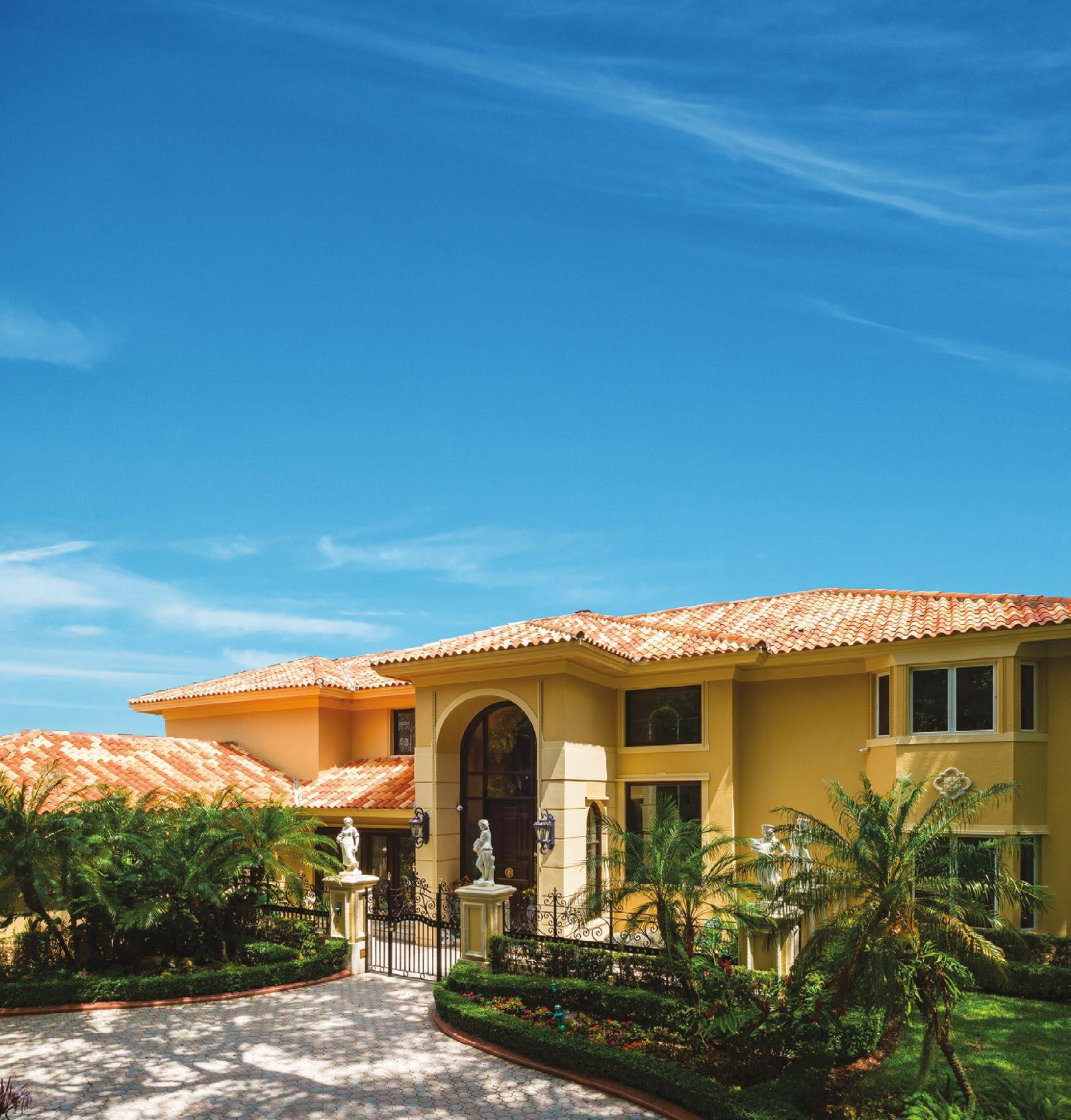
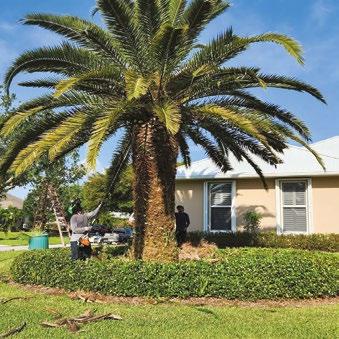
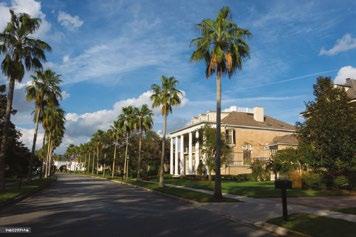
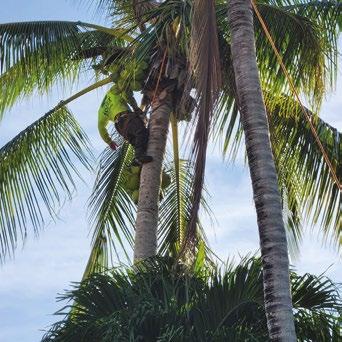


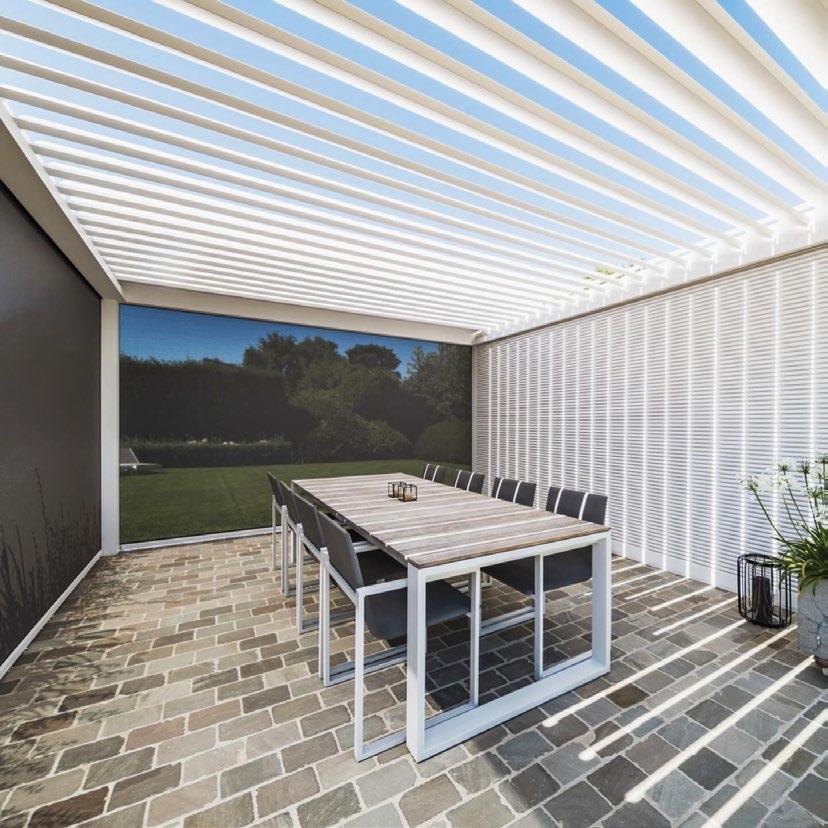
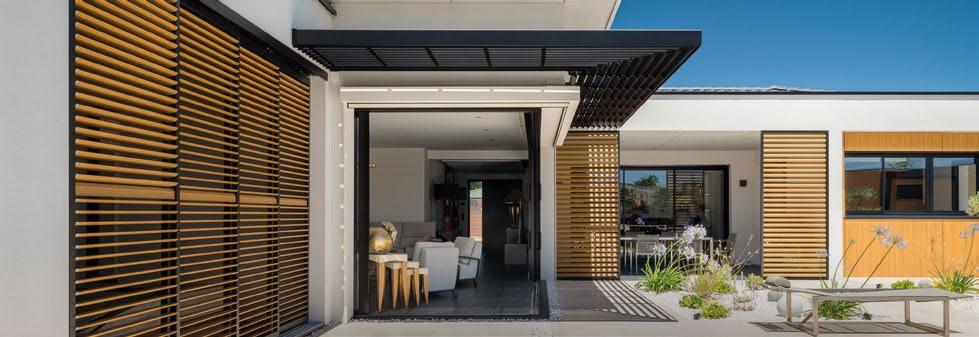

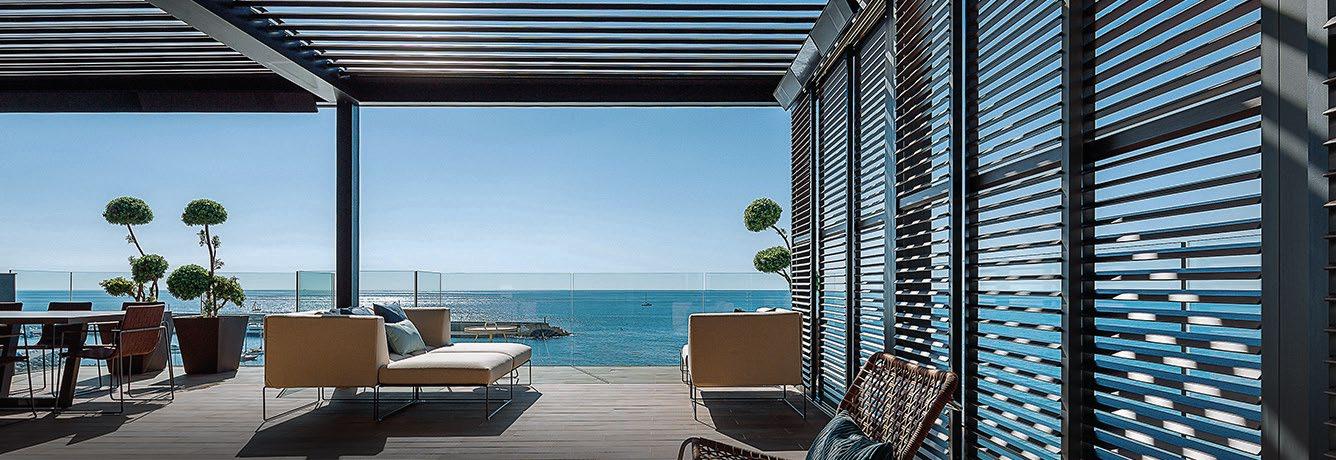
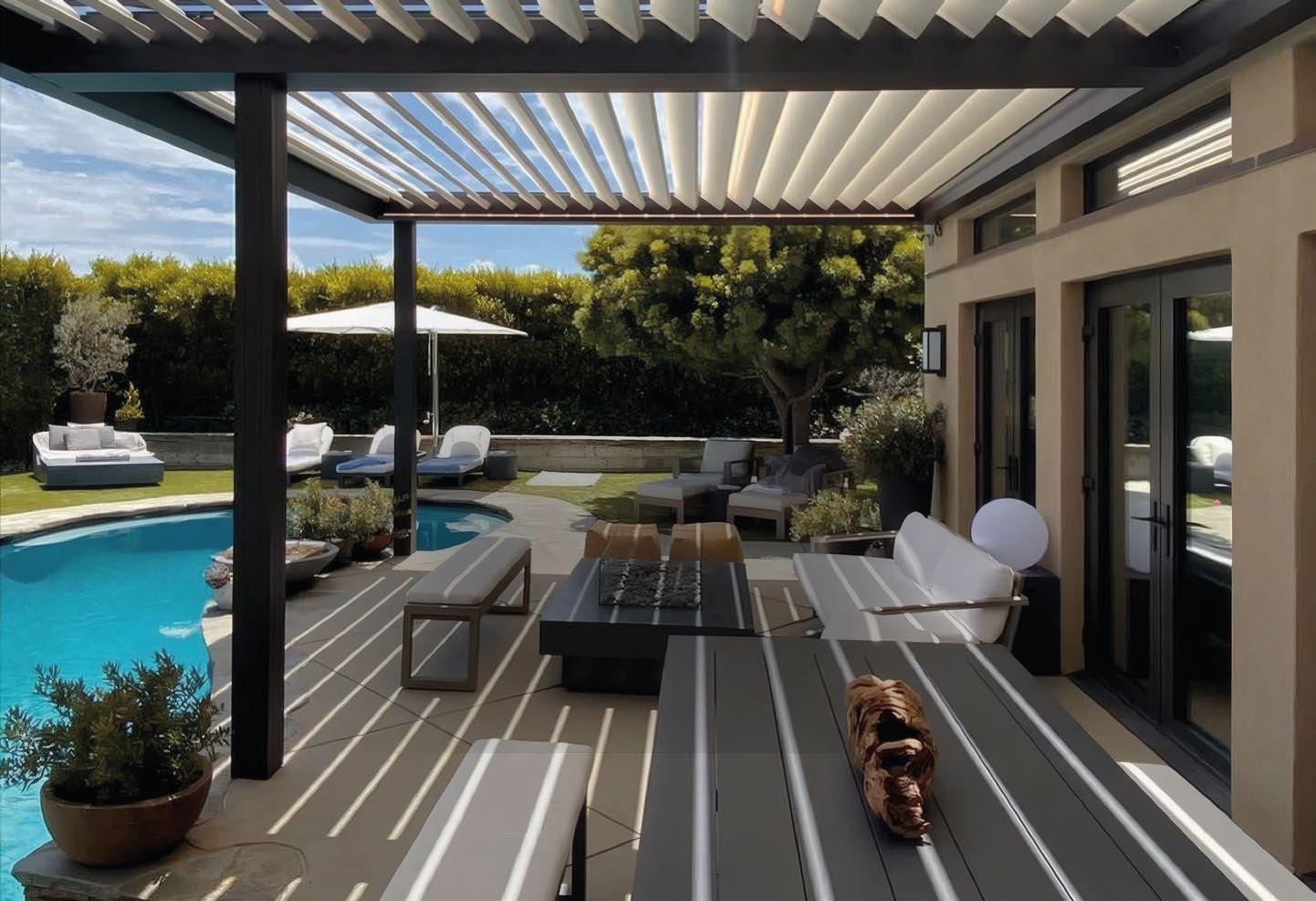





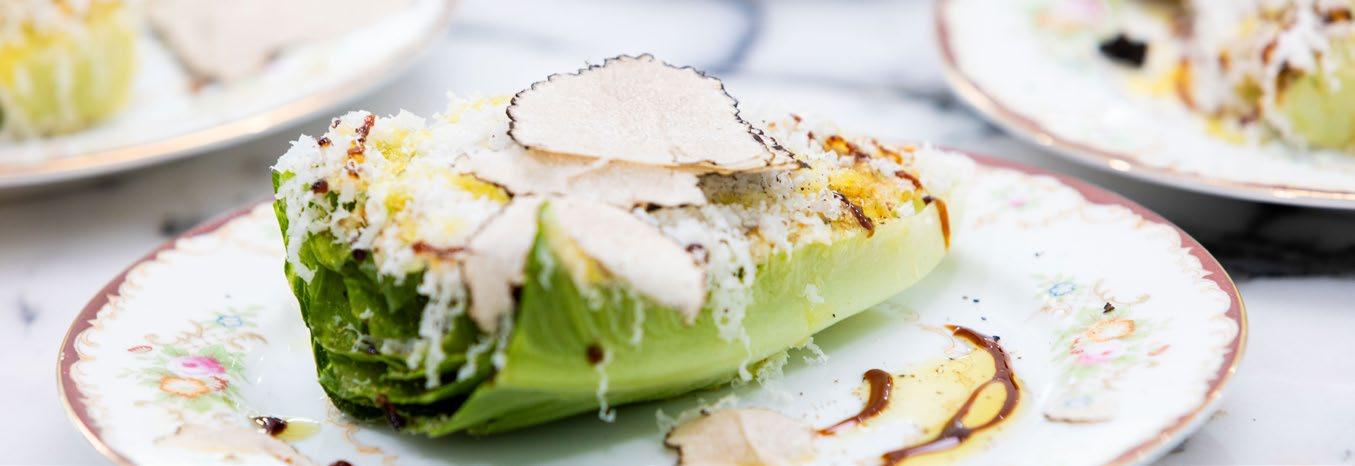
by Chris Foster photography by Yuri Semenyuk
In a town that’s quickly becoming a haven for culinary innovation, Chef Kevin Anthony is bringing something timeless to the table: heart, heritage, and a palate shaped by the finest kitchens of New York and the coastlines of Italy.
Born and raised in Vero Beach, Kevin’s earliest memory isn’t of cartoons or playgrounds—it’s of aroma. His grandmother recalls that the only thing that could soothe baby Kevin was being cradled in her arms as she stirred a pot of simmering pasta sauce. “It’s true,” he laughs. “Food has always been the way I connect to the world.”
That connection led him to the prestigious International Culinary Center, followed by a key role in launching Rezdôra in New York City—widely recognized as one of the top five Italian restaurants worldwide. From the ground up, he helped shape the vision and execution of a kitchen that would go on to earn critical praise and a loyal following. “It was an incredible experience,” Kevin says. “Being part of building something that special from scratch—especially at that level— taught me everything about excellence, restraint, and the power of intention in every dish.”
But it was his travels through Italy that truly refined his style. “There’s something about the simplicity of Italian cuisine that’s powerful,” Chef Kevin says. “You don’t need to overcomplicate it. Just respect the ingredients.”
“YOU DON’T NEED TO OVERCOMPLICATE IT. JUST RESPECT THE INGREDIENTS.”
Recently, Chef Kevin hosted an intimate evening featuring a five-course meal inspired by the flavors and spirit of the Amalfi Coast. “A lot of people vacation in these places,” he said, “but I wanted to bring that feeling to the plate—light, fresh, sun-soaked flavors that taste like summer.”
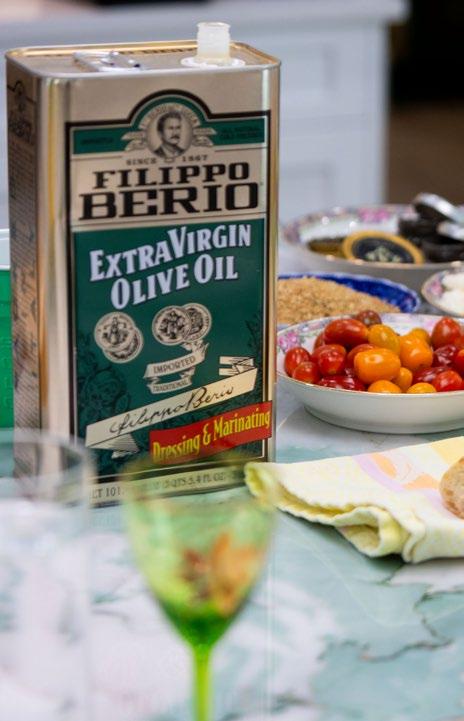
The evening started with a delicate amuse-bouche: a small piece of toasted ciabatta lightly drizzled with Sicilian extra virgin olive oil, topped with a scoop of stracciatella and a dollop of Kaluga caviar. It was an elegant nod to Italy’s coastal luxury and set the tone for the night.
Next came a red pepper burette, finished with a silky basil oil drizzle—bright, earthy, and perfectly balanced. The third course was a baby gem salad dressed in Pecorino vinaigrette, lemon fennel breadcrumbs, shaved Parmesan, and what Chef Kevin affectionately calls “Italian MSG”—Parmigiano Reggiano.
The highlight of the night was the main course: bucatini tossed in a lemon crème sauce, topped with delicate shavings of truffle and Parmesan. Bright, rich, and nuanced, it embodied everything Chef Kevin had promised—sunshine, elegance, and depth.
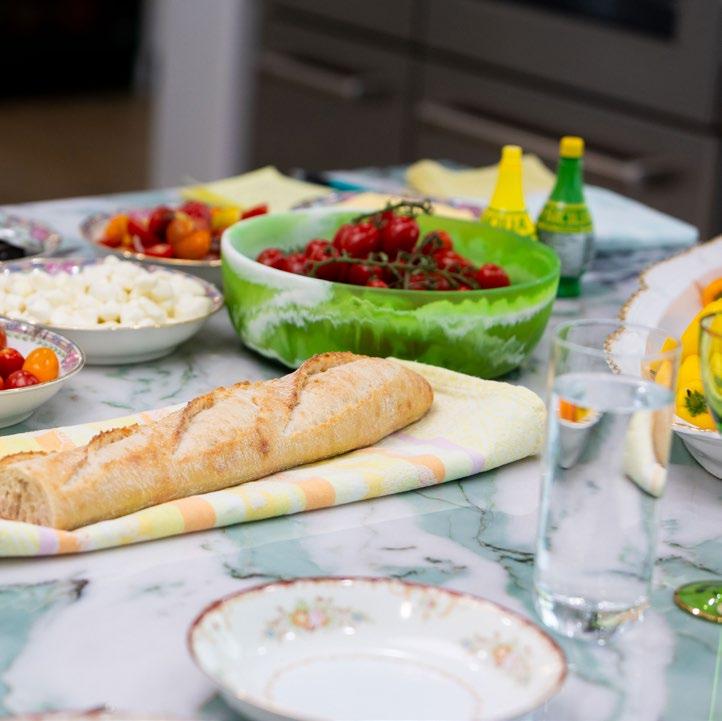
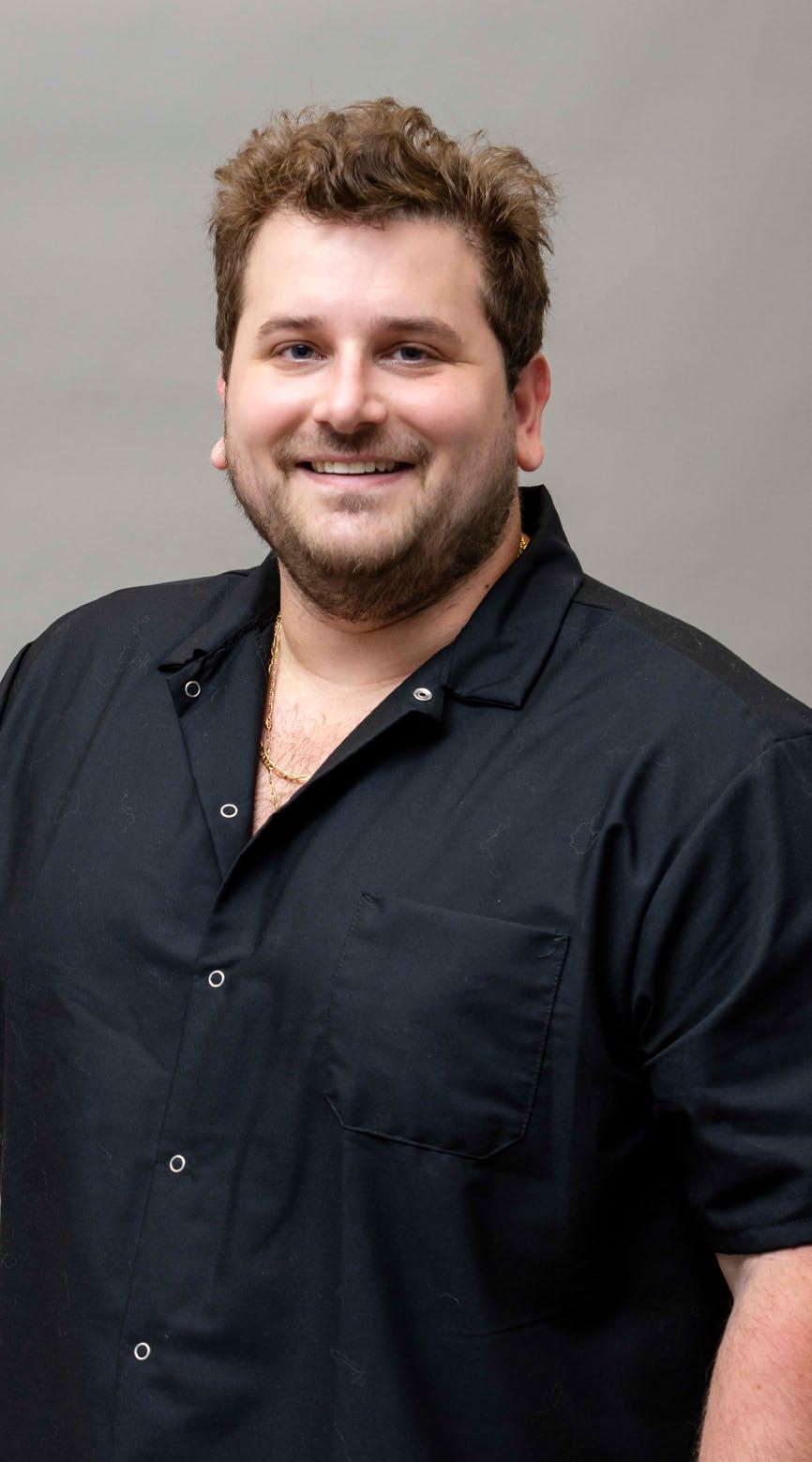
And to close the evening, he served a refreshingly vibrant fifth course: a watermelon and strawberry granita kissed with shaved lemon and lime zest, topped with baby strawberries that evoked summer in Sicily. Light, bright, and bursting with citrusy sweetness, it was the perfect ending to a sun soaked culinary journey.
“For me,” he says, “this isn’t just food. It’s the way I show love to people. Cooking is how I speak—it’s how I say, ‘You matter.’”
From Vero to Venice and back again, Chef Kevin Anthony ensures every plate tells a memorable story.
For those eager to bring this experience home, Chef Kevin now offers exclusive private dining experiences. Let him guide you and your guests on a culinary journey that thrills every part of the palate, crafted with the same passion, precision, and soul that define his cuisine. To inquire or book your unforgettable evening, contact Chef Kevin directly.
772-532-2915
Instagram: @cheflargoomba Website: club27hospitality.com

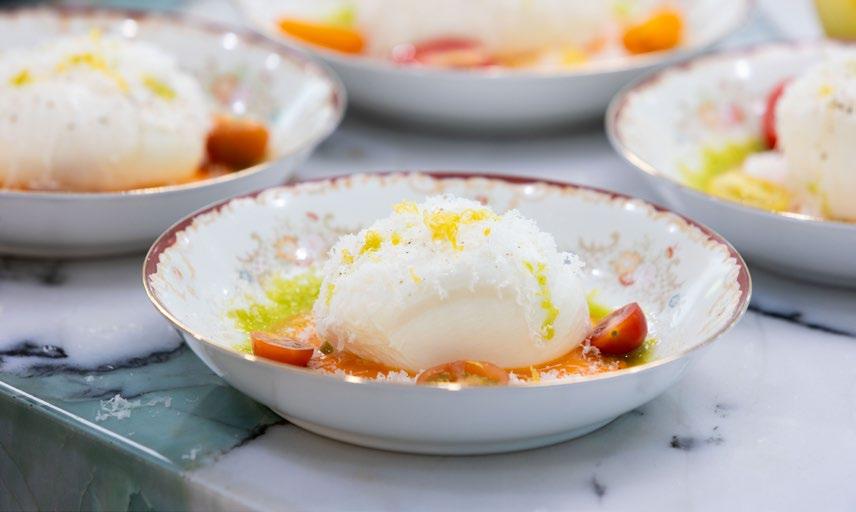



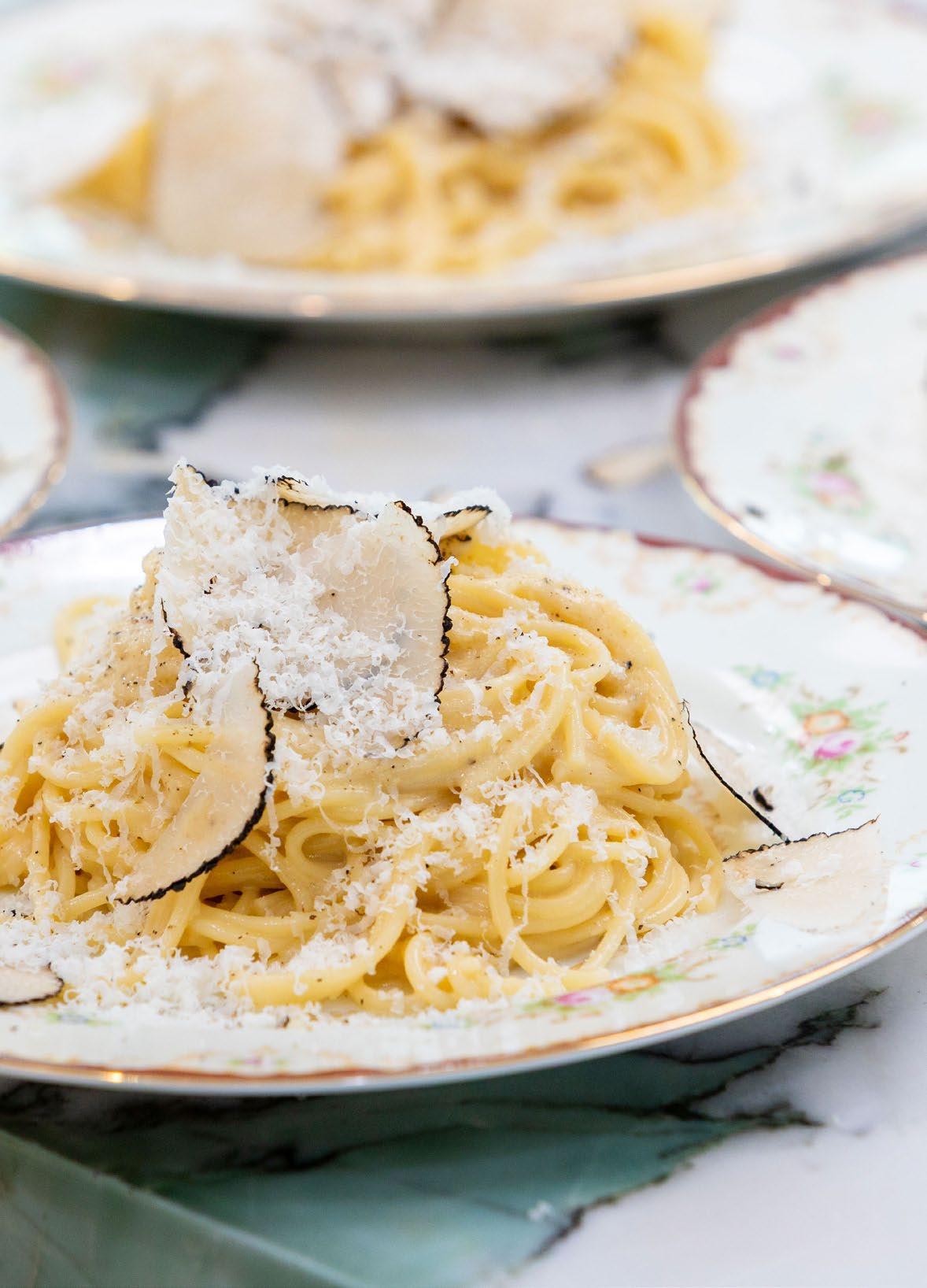


Introducing: LIV VERO Gallery
LIV VERO Gallery is a curated space within each issue dedicated to celebrating fine art and the artists who inspire us, telling stories that resonate with our community and beyond. Each showcased piece is available for purchase; inquiries please contact jim@livvero.com. Art lives here. Let it live with you.
Artist Statement
As an artist, creation comes from a place of feeling, silence, and trust. My work is deeply shaped by decades of solo rowing at sunrise, where water, light, and rhythm offer a kind of truth that words cannot hold. The stillness of those early mornings, the call of birds, and the quiet surprise of dolphins shaped my inner landscape long before I ever picked up a brush.
I didn’t come to painting through formal training, It came through healing. In the late 1990s, during a personal crisis, I was introduced to intuitive painting. It gave me a visual language to express pain, strength, and transformation.


I began teaching this practice to others as a way of releasing emotion and reconnecting with the self, believing we all have access to creativity as a path toward wholeness.
My work is layered, gestural, often echoing the fluidity of water. I paint slowly, listening for what each piece wants to become. Some arrive in a single breath, others unfold over months. I’m not attached to outcome. I destroy, recreate, and begin again. For me, abstraction is emotional memory that’s fluid, unstructured, and raw. Art, like rowing, reveals truth only when you surrender and let it move through you.
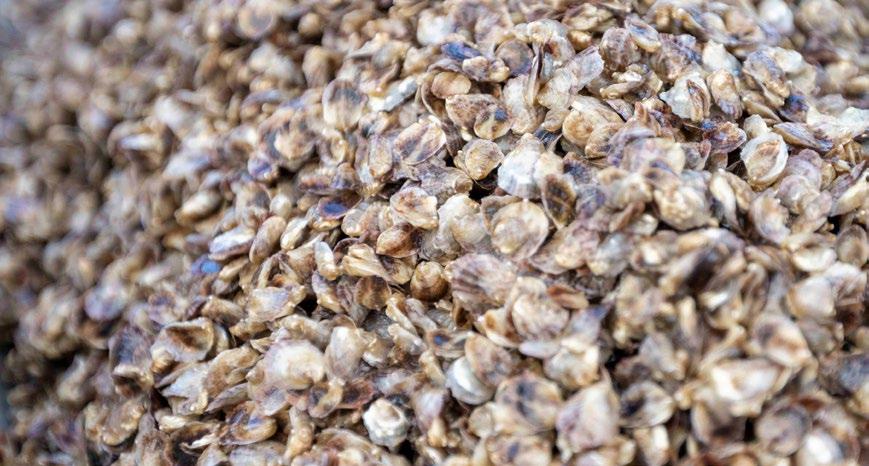
Conducted by Jim Field photography by Yuri Semenyuk
Editor’s Note:
I love oysters, and have never been to a dinner or festival where I have had my fill. Imagine my surprise to learn about a local producer of edible oysters, Treasure Coast Shellfish LLC, located in Sabastian. Nicolette Mariano is Founder and President. She kindly agreed to educate me about our common obsession. There’s a lot to learn.

JF: Nicolette, we’re so grateful for the privilege of sharing your story with our readers. Why don’t we start with an overview of your company’s aspirations—what animates you every day?
NM: We have been in business for six years and are currently the only oyster farm in our growing area. We’re part of the next generation of sustainable aquaculture farmers on the East Coast of Florida. Our mission is to bring back the oyster industry in such a way as to restore our precious Indian River Lagoon. Our farming methods use the natural environment to grow a local sustainable food product, which is also giving back to the environment by creating habitat, filtering water, and providing structure for countless native species to thrive. It’s a virtuous cycle. For our products, our goal is to produce the highest quality oysters for the premium half-shell market.
JF: That’s great. Let’s take a step back and tell me about where you were raised and what influenced you growing up.
NM: I was born and raised in Martin County in Stuart, Florida. My home was close to the Indian River Lagoon, Jensen Beach and Stuart specifically. I started swimming at an early age. My mom used to have to drag me out of the water to eat lunch. Bathtub Beach was a favorite, poking around the worm reef, lots of critters to discover. Being outside all the time was just natural.
The Environmental Studies Center in Jensen Beach was my second home from second grade through high school. They took one week out of the normal science curriculum and each grade was taught about something different, like freshwater habitats, seagrass, estuaries, spoil islands, and then you went on a field trip. In fifth grade we went on a boat and explored the spoil islands in the lagoon. Everything captured my attention and imagination.
In middle school and high school I volunteered at the Environmental Studies Center in Jensen Beach and the Florida Oceanographic Coastal Center in Stuart. So my world was family life, school, and the ocean and lagoon.
JF: You had the childhood I would have loved—to be in a marine environment. NM: Fast forward, I graduated from Florida Institute of Technology in Melbourne with a bachelor’s in aquaculture. One semester I did an internship with Florida Fish and Wildlife, working with red drum. I always
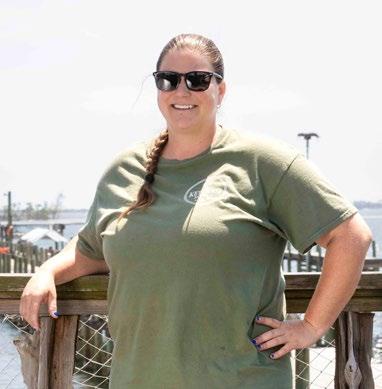
wanted to do finfish stock enhancement, so I loved this experience.
JF: After graduating, what was your first job?
NM: I received a job offer from the town of Barnstable, Massachusetts, on Cape Cod. They asked me to fly up for an interview. It snowed and I had open-toe shoes. Hey, I was a Florida girl, never knew seasons! They offered me the job and I accepted. I did stock enhancement and shellfish enforcement, and special projects with bay scallops, clams, and oysters. They allowed me to go to shellfish meetings and I got to meet people involved in the industry. I truly learned so much on the regulatory side of commercial, recreational, and shellfish aquaculture.
JF: How fortunate you were to learn this early on.
NM: My next job was in Bremen, Maine, working for a company—an established hatchery, nursery, and farm—that was building a new shellfish processing facility. This was an amazing hands-on experience for me. Yet Maine is the arctic tundra! I’d ask myself—what are you doing up here? I met great people who I still stay in contact with. I never complain about cold conditions in Florida.
JF: So far you’re on a great trajectory. I sense fate leading to where you are today.
NM: Another job took me to the University of Southern Mississippi running algae production for their red snapper stock enhancement program. I called it my algae cave. This was intense aqua farming— never a day off. Again, great experience, but not long-term. At this point, I had been away from home for ten years, and I decided it was time to return to Stuart.
I taught middle school, then accepted a position teaching high school. And just when this happened, I opted for a job in the Panhandle with a brand new oyster company, where I did everything— including events and sales, meeting people from Tallahassee and the Florida shellfish industry. In retrospect, this was a perfect capstone for me. Commuting for this position was not ideal but well worth it. Trying to stay closer to home, I worked for a private company on the FAU Harbor Branch Oceanographic Institute property

TRANSFORMATIVE FOOD
in Ft. Pierce. This was in the Fall of 2019. In March 2020 Covid hit, and soon thereafter I lost my job.
JF: I’m sensing this was a fortuitous event for you.
NM: It was. By this time I had managed to secure a sublease for access to a small area of water off Sabastian in the lagoon, and had already planted oyster seeds in bags. [Editor’s note: bags are oyster containers made of polyethylene mesh, roughly the shape and twice the size of a briefcase.] It was only a bottom lease, however, meaning I could only use the water space six inches off the bottom—as opposed to the full water column to the surface.
It was a difficult setup. I bungeed oyster bags to rebar, and had maybe 80,000 seed in the bags. I freedived to them—holding my breath—and physically shook the bags and brushed them to chip their shells
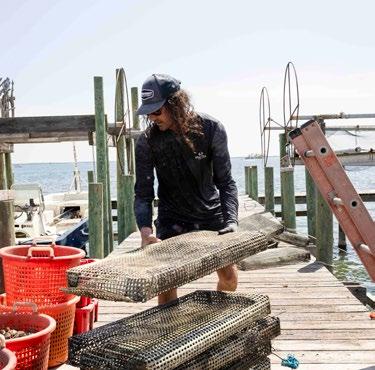
and clean off algae and barnacles and poop. I’d drive north from Stuart towing my boat, then motor to my bags, motor back, and then return south with the boat. Commuting time was three to four hours.
In March of 2020 I set up my company legally. I wrote the business plan and applied for an individual water lease from the state, which lets me use the full water column, and therefore, floating cages. Eventually the lease was approved, and I feel very fortunate. So yes, losing my job was a forcing function to start my own business. It had been a decade in the making.
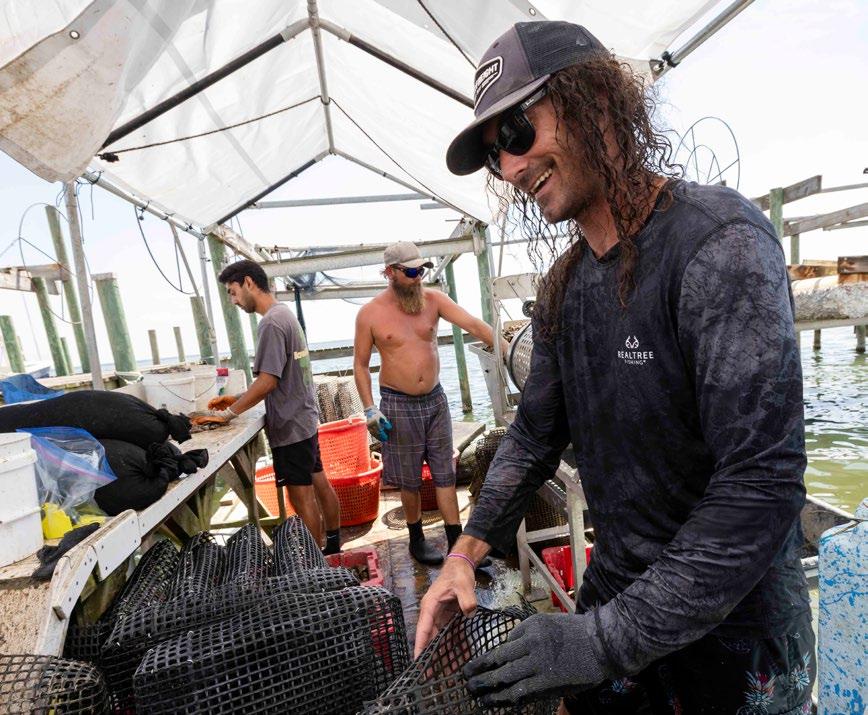
Editor’s Note: Oyster Overview Oysters are bivalves: mollusks with two-part shells held together by a hinge and strong adductor muscle to open/close the shells. The shells are concave, producing a spoonlike cavity termed the “cup.” Inside, the body is surrounded by a soft, fleshy tissue called the “mantle”—which is eaten. The mantle protects internal organs and secretes calcium carbonate that produces the shell. Oysters are filter feeders and herbivores, capturing tiny particles of algae and phytoplankton as water passes over their gills. Tiny moving hairs covering the gills move food particles to the mouth, located near the shell’s hinge, and into the stomach.
JF: Thank you for sharing your background, which tells me that you’re the ideal person to be the Founder and President of Treasure Coast Shellfish! Can you tell me about the business, starting with your assets and facilities?
NM: The lease is obviously a critical thing to have, giving me access to the water and use of the water column. I am
very fortunate to be able to lease off of a private aquaculture dock off of Indian River Drive, along which we have our nursery setup and where, further out, we tie up our boats. The farm is located on the eastern side of the lagoon, south of Sabastian Inlet and north of Pelican Island National Wildlife Refuse. The barge is a working platform with an outboard engine, on which we have our mechanical grader—a long metal cylinder with holes that we spin by hand, and various sorting tables and baskets. The transit for the barge or skiff from the dock to farm is about ten minutes. In terms of inventory, we have hundreds of mesh bags, scores of metal cages, miles of rope, hundreds of floats. And finally, we have our office, processing facility, and warehouse (all in one) about a ten minute drive from the dock.
JF: And how about employees?
NM: Counting everyone, five to six fulltime employees is where I like to be,
supplemented by two part-time staff. During summer, we have students and college interns working more regularly than during the school year.
JF: So what are you missing? Anything?
NM: We don’t have a hatchery—we purchase our seeds. We have the nursery and farm—so two of three components in the chain. And it’s very important that we are a certified processing facility, which significantly simplifies our ability to control and adhere to time and temperature protocols when we harvest, as well as food safety regulations.
JF: What is your capacity at the nursery and farm?
NM: The nursery is comprised of floating bags on lines. Right now, we have roughly 260 bags in use. The mesh sizes run 2, 4, 6, and 9 millimeters. The farm is just under seven acres. We’re using about 40% of this. Currently there are 36 lines, each line holds 14 floating cages, and each cage holds four bags, yielding 2,016 total bags. Mesh sizes at the farm are larger, so 6, 9, and 14 millimeters, and some 18s. The number of bags fluctuates.
JF: Here’s a question I probably should have asked right upfront: what kind of oysters do you grow? I’m clueless about the taxonomy of oysters.
NM: Pretty much every oyster on the east coast of the US is virginica (more formally:

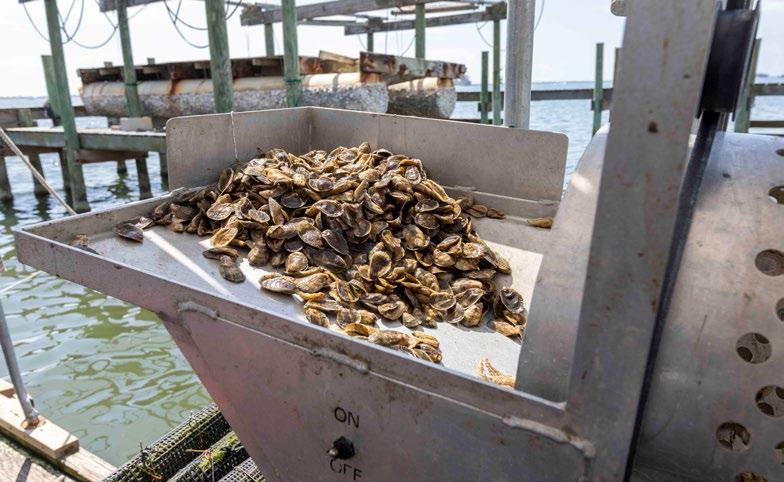
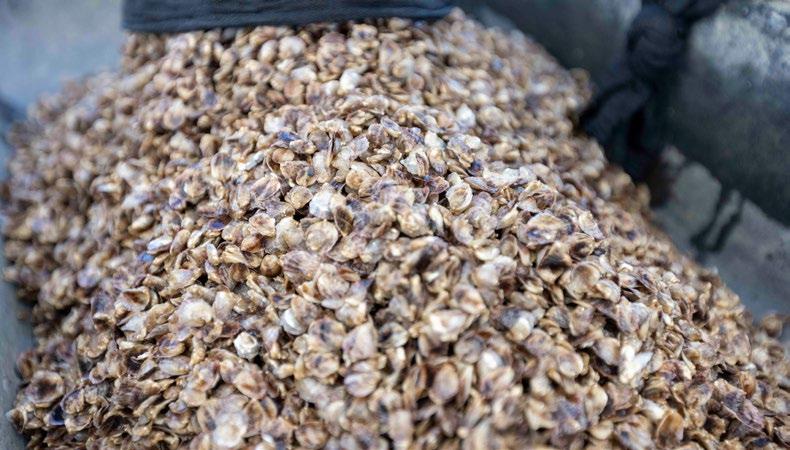
Oyster seeds.
genus Crassostrea, species virginica). Their common name is the Eastern Oyster, but are also known as the American oyster, Atlantic oyster, Gulf Coast oyster, Virginia oyster, and Common oyster. They live in shallow water bays, lagoons, and estuaries in the Gulf of Mexico and Atlantic coast between Mexico and Canada. Eastern oysters are highly adaptable, an important quality for creatures living in waters where conditions change quickly depending on season and weather.
JF: You mentioned that you purchase upon your seed from a hatchery. Tell me how the life of an oyster begins.
NM: We’ve planted over a million seeds this year—just like the ones that you saw arrive this morning. We purchase them from a hatchery in Virginia, Oyster Seed Holdings. Hatcheries are very specialized businesses. In brief, you have adult male and female oysters comprising the broodstock. They are external fertilizers. Male and female oysters release clouds
TRANSFORMATIVE FOOD
of sperm and eggs, which are fertilized in the water column. Within hours of fertilization, the eggs develop tiny shells and the ability to move independently, and they spend the next two to three weeks as rice-sized larvae swimming in search of a place to attach. Once they attach to a solid surface with a glue-like substance, they transform into juvenile oysters called “spat” or “seed.” Hatcheries have methods to induce the swimming larvae to set into spat individually, say, on finely ground oyster shell pieces called “micro cultch.” This produces individual baby oysters. In the wild, oysters cluster in large groups attached to solid objects like piers or rocks and often layer on top of each other to create solid oyster reefs. This is not what we want.
JF: Can you walk us through how you grow a baby oyster into an oyster for harvesting?
NM: We take the seeds—the baby oysters— and place them into the smallest size mesh bags, about 2-3 liters when they are the size of a candy skittle. The bags float on the surface, water flowing through them, bringing them food and nutrients. The water depth at the nursery is roughly three to four feet. Every other day we will brush the bags clean to maintain water flowing through the bags, remove the oysters from the bag, inspect them, grade them by size, and move the larger ones into the next largest mesh bag. We don’t want the oysters attaching to the bags, we don’t want their size restricting water flow. Eventually they become large enough to be transferred to the farm, and the same progression continues.
The other thing that we’re doing—that’s critically important—is that we’re chipping the oyster growth lip to grow a stronger shell, more uniformly shaped deep cupped oysters, to meet our product specifications and quality standards. An oyster shell grows by fanning out. What we do is chip its shell and encourage it to develop a cupped shape, which can accommodate larger meat and generous amount of “liquor”—the delicious water inside. Chipping is done by placing the oysters into the rotating mechanical
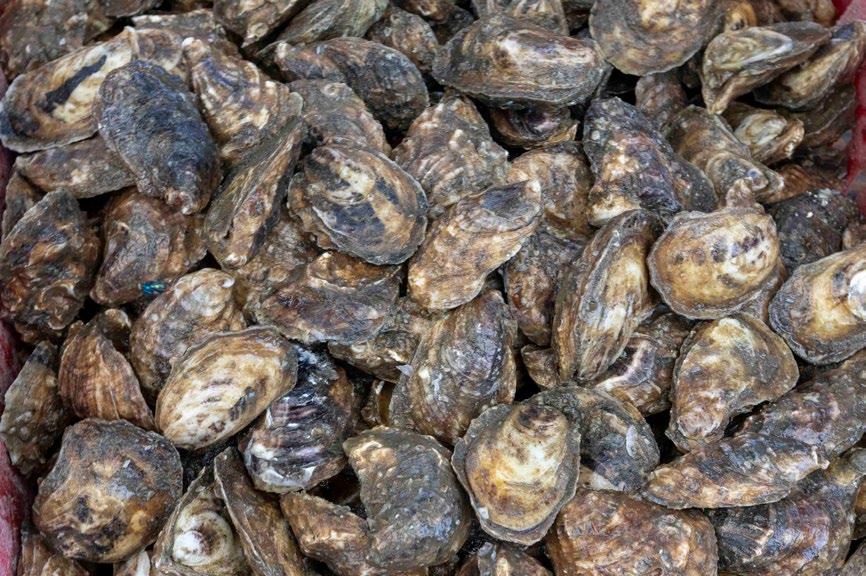
grader, where their shells strike the metal surface and each other. Our process calls for removing oysters from their bags every two to three weeks, passing them through the mechanical grader, thereby chipping them at frequent intervals. Sometimes at the farm we will literally shake the bags to accomplish the same thing.
JF: This is an incredibly labor intensive exercise—and hard work.
NM: It is. It’s a continuous process of oyster growth, removing them from bags to inspect, mechanically tumble, grade and group by size, transfer to the next largest mesh bag, until they are ready to harvest.
JF: What’s the total time duration from seed to harvest?
NM: Anywhere from eight to 18 months. If you had asked me this question two years ago, I would have told you six to 12 months, but then we had a year when we had a really bad drought, and then two hurricanes. So nothing grew very much. We had seed that was in four millimeter bags for four or five months in danger of starving because we didn’t have any rain. You need fresh water influx to maintain food and nutrients and desirable salinity
levels. We are farmers, and thus face all the uncertainties from Mother Nature. A hurricane can wipe us out. Prolonged bad weather can keep us from working the bags for weeks at a time. Like farming on land, oyster farming is full of uncertainty and a very risky business.
JF: What are the products that you sell? If everyone is using one species of oyster, the Eastern oyster, how do you make them different? I’m confused by this.
NM: Great questions. Let me take them in turn. First, we offer three main products in the market: Gold Doubloons, our biggest oysters, ranging from 3 to 3.5 inches, our Sebastian Silvers, ranging from 2.5 to 2.75 inches, and our Sebastian Silver petits, ranging from 2.0 to 2.5 inches. Keep in mind that while they’re different lengths, they are all high end products, nice uniform shape, nice deep cup. Being on the Treasure Coast, we named our products after precious metals from the 1715 treasure fleet that sunk off our coast— gold and silver. They all have a wonderful brine to them. I feel the Silvers are a little bit sweeter, and they’re easier to shuck.
As for your second question, differences between harvested oysters are the result of husbandry—that is, the various processes and techniques used by growers in the care and cultivation of their oysters. In this respect, oysters are like wine, in that vineyards can start with a common grape but produce vastly different end products—some glorious and some mediocre. Age of the harvested oyster factors in. Length of the oyster. Depth and shape of the cup. Importantly, the nature of the surrounding water, its water composition, especially salinity, and type and amount of food the oyster ingests. And of course temperature. Some oyster farmers will place the oysters in different locations on the farm or even on a completely different farm located elsewhere where the oysters are subjected to a different water composition, different currents, food, salinity. They’ll start the oysters in one section of water and then finish them in another. There’s a lot of art that can be applied to the oysters that a company produces. Variety is the spice of life!
A second article will concentrate on the sale and distribution of Treasure Coast Shellfish products direct to consumers, wholesalers, and restaurants throughout Florida and surrounding states.
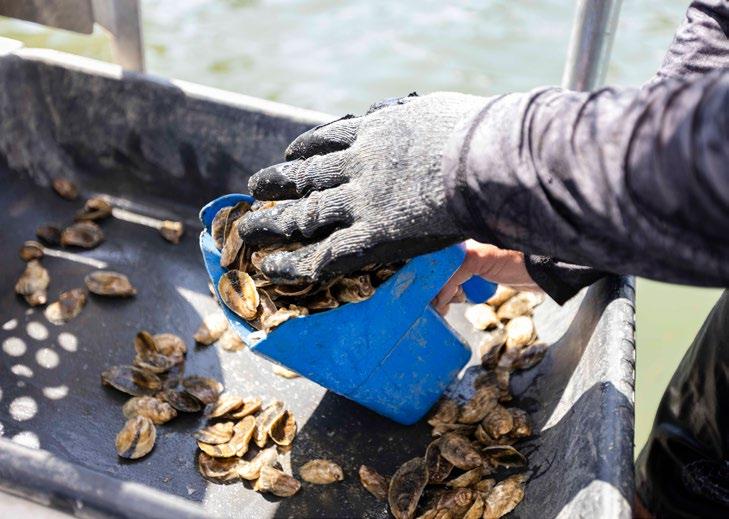
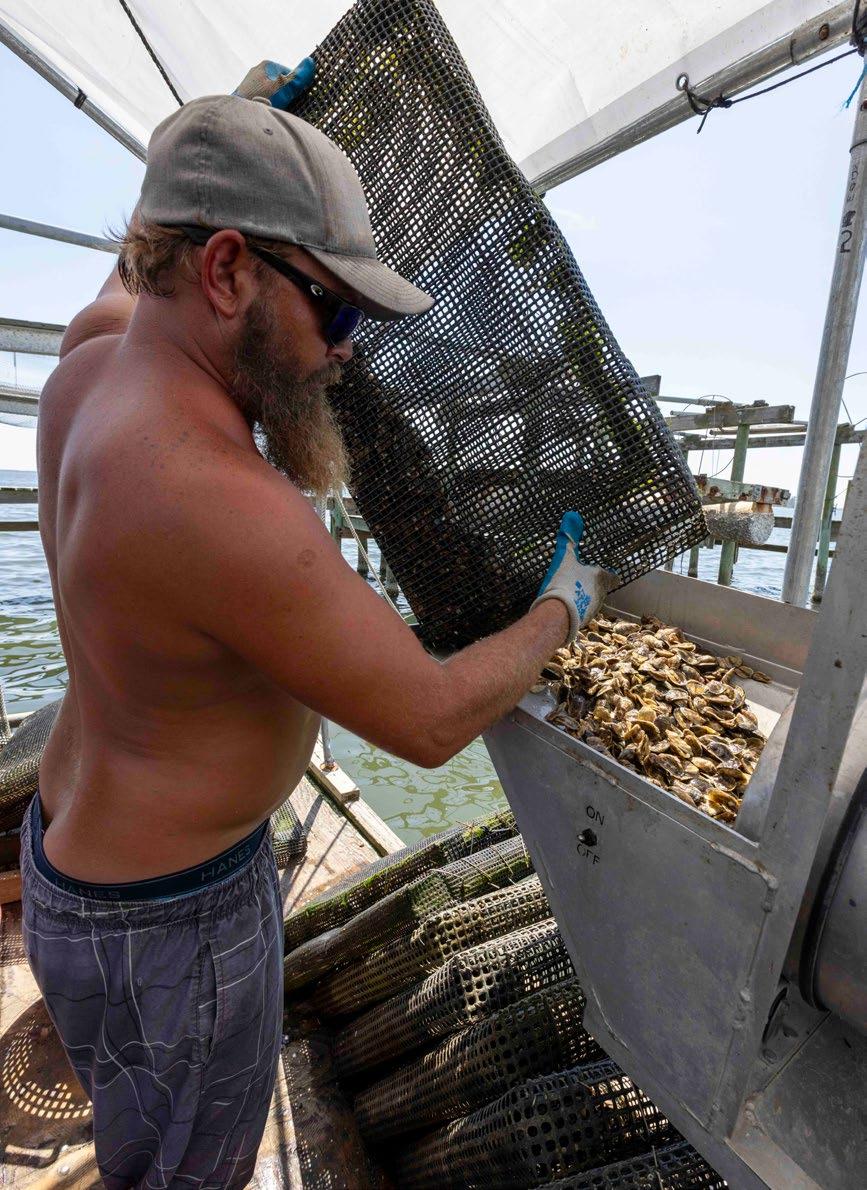
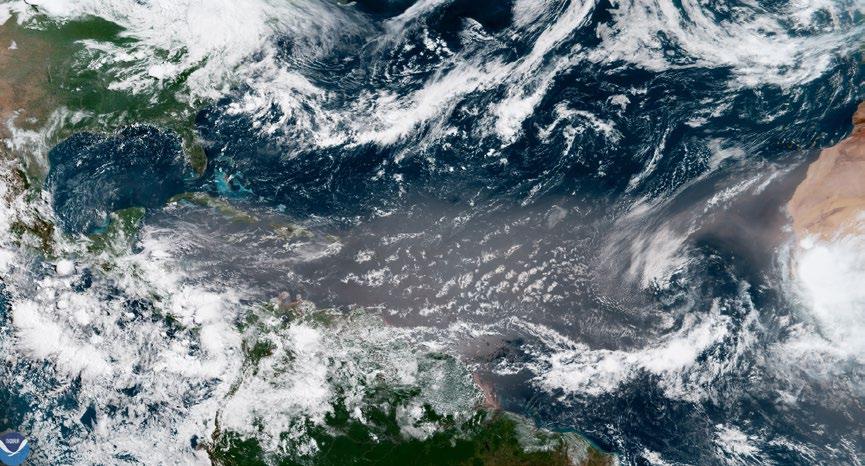
by Jim Field
Vero Beach’s calendar features a variety of special seasons. First and foremost is “In Season,” spanning October through April, when snowbirds and tourists are in town. Dreaded by many, we have Hurricane Season, June 1 to November 30. And celebrated by everyone, there is Turtle Season, March 1 through October 31.
Unknown to most, however, is another notable season: Saharan Dust Season, occurring from late spring through early fall, peaking June to August.
In meteorology circles, the Saharan Dust phenomenon is considered a great wonder of the world. It impacts all corners of the globe. Environmentally, it is critical to a healthy planet. Conversely, it can produce harmful side effects for humans. Finally, it is intertwined with Hurricane Season and can moderate storms.
Perhaps it’s time we learn more about its presence in Vero Beach.
Every year weather conditions conspire in the Sahara Desert to create a giant plume of dust and disperse it to far off locations. The Sahara is the largest hot desert on earth, covering more than nine million square miles, from (west to east) the Atlantic Ocean to the Red Sea, and (north to south) the Mediterranean Sea to the Niger River Valley.
Temperature differences between regions in the Sahara create low pressure areas and powerful winds that lift dust into the atmosphere, creating a dry layer of air— termed the Saharan Air Layer (SAL)—that hovers about a mile above the Earth’s surface and can be up to 2.5 miles deep.
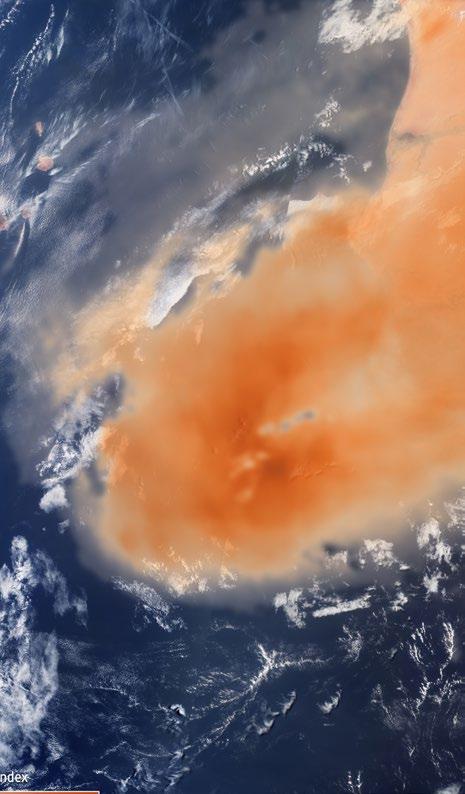
Once airborne, Saharan dust travels in three directions. There is an eastward trajectory across the Mediterranean Sea to the Middle East and even Japan. There is a northern trajectory to Southern Europe and sometimes Scandinavia. And there is the western trajectory—driven by the African Easterly Jet—roughly the size of the continental US—reaching South America, the Caribbean, and even further west to Florida, Alabama, Mississippi, Louisiana, and East Texas. The dust takes about five to seven days to traverse 4,000plus miles across the Atlantic.
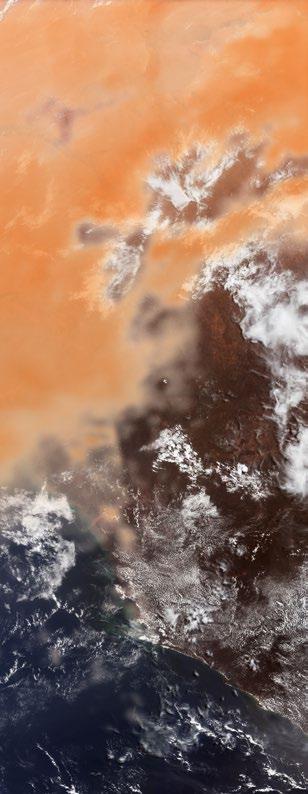

Chemically, the dust’s composition is mostly fine sand and mineral particles such as iron, calcium, and silicates. The thickest plumes can reduce air visibility— seen as a hazy sky—and produce, due to the scattering of sunlight, vivid sunsets and sunrises. Eventually, the dust will run into areas of lighter winds and dissipate.
In terms of hurricane suppression, the SAL’s dry air has about 50% less moisture than the typical tropical atmosphere. This extremely dry air can weaken a tropical disturbance by promoting severe downdrafts—i.e., wind shears—around the storm. Thus—and this is remarkable— in the very part of the world where Florida’s hurricanes are born, there is a countervailing force at work with the
potential to overpower them. Puerto Rico in particular will see fewer thunderstorms due to Saharan Dust.
Finally, concentrated dust can trigger asthma, allergies, bronchitis, even cardiovascular issues. Also, skin and eye irritation are common in affected regions.
IMPRESSIVE DUST FACTS
• Dust plumes happen every year, but some years see more dust transportation across the Atlantic Ocean than others.
• Saharan dust fertilizes the Amazon Rainforest by depositing nutrients like phosphorus.
• Saharan dust provides marine ecosystems with important nutrients such as iron, which is necessary for photosynthesis in marine primary producers such as phytoplankton.
• Deposits of Saharan dust are the only source of clay used for making pottery in The Bahamas.
• Although Saharan dust will reduce precipitation, stray showers falling through the dust layer will coat your home and car with a film.
IN THE VERY PART OF THE WORLD WHERE FLORIDA’S HURRICANES ARE BORN, THERE IS A COUNTERVAILING FORCE AT WORK WITH THE POTENTIAL TO OVERPOWER THEM.
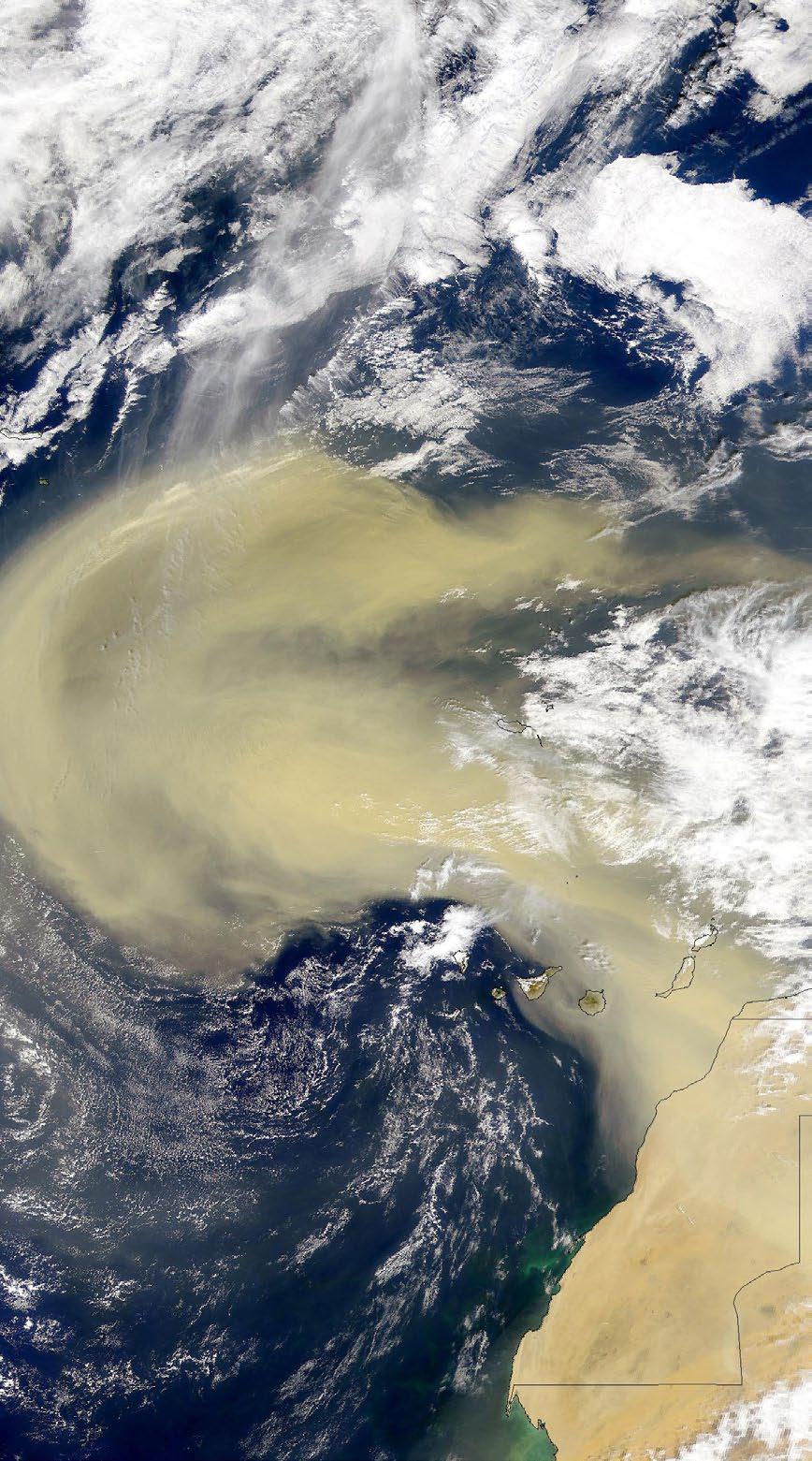

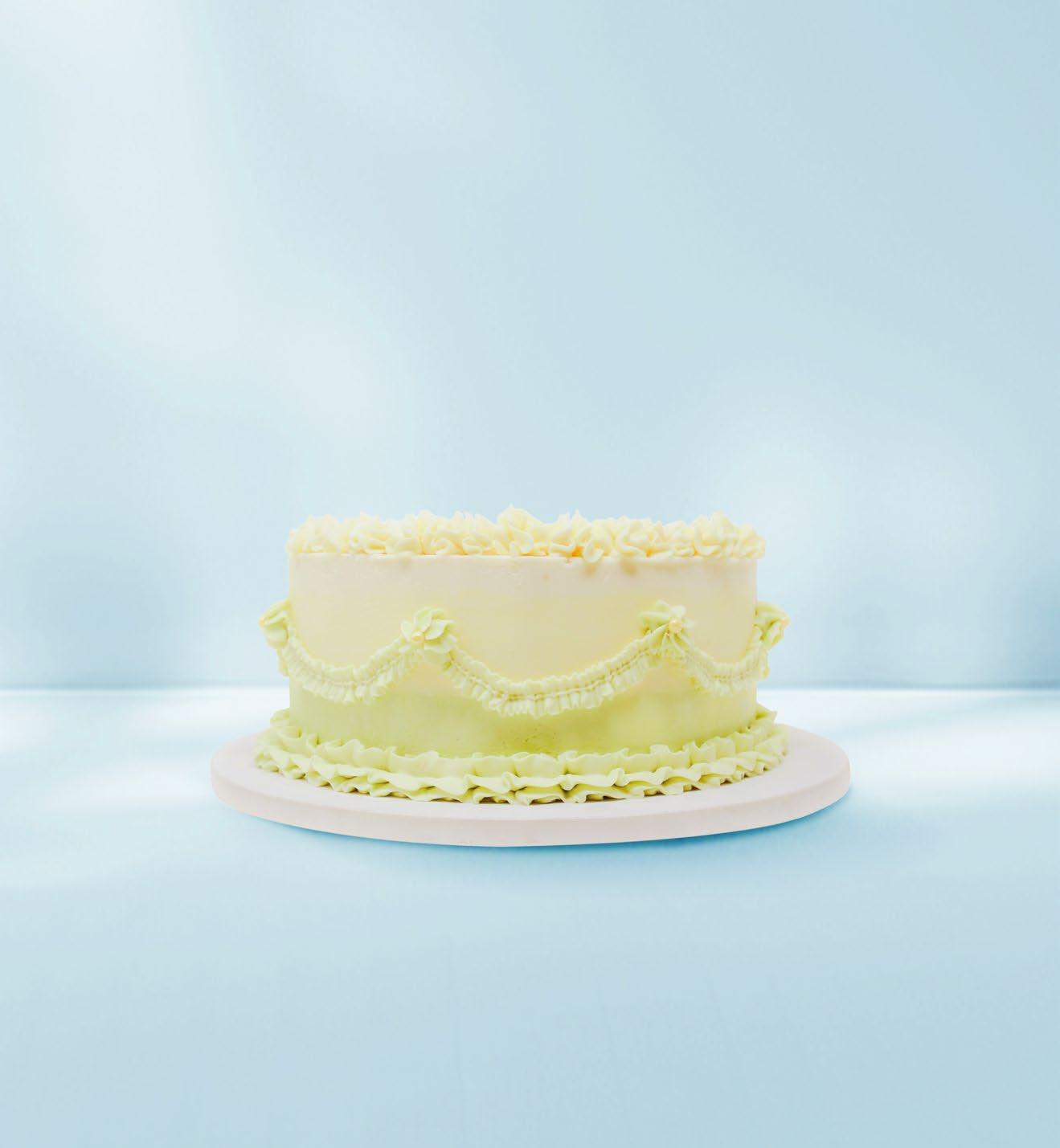
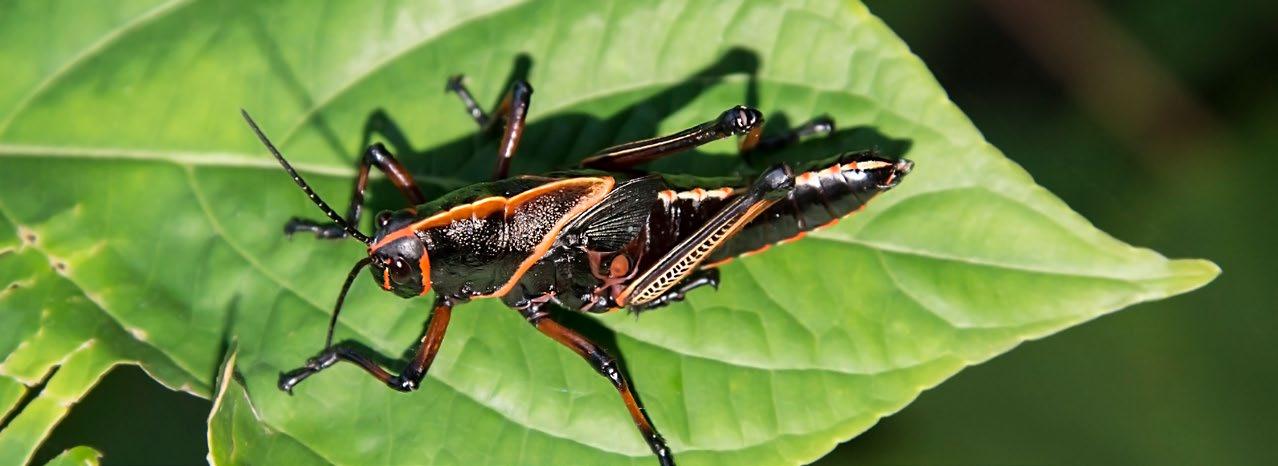
by Jim Field
Thinking back to our first year as homeowners in Vero Beach, I distinctly remember the shock of finding a gigantic insect affixed to one of our windows. I couldn’t believe its size—at least four inches in length—I had never seen anything like it before. Putting my eyes to the glass, I studied the behemoth as it remained fixed in place, unknowing or indifferent to my presence.
I am talking about the eastern lubber grasshopper Romalea microptera. Other common names include the thumper (Georgia), devil’s horse (Louisianna), and giant locust (Mississippi). For us, it’s the Florida lubber.
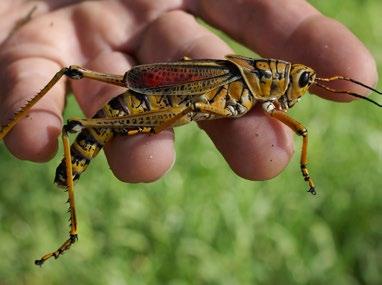

I no longer study them. Rather, I kill them whenever I can. Then I look for a second, or third one nearby, and kill them too. My method is crude but effective: crush them with the heel of my footwear, using a sharp, powerful downward thrust certain to smash its armored body. Some gardeners simply clip them in half with a hand shears.
I NO LONGER STUDY THEM. RATHER, I KILL THEM WHENEVER I CAN.
As a gardener, you should kill them too at every opportunity. They will eat—no obliterate—your shrubs, flowering plants, vegetables, citrus trees. There are no offsetting ecological advantages to these pests—they are pure destruction. One study defined its menu to include at least 100 species from 38 plant families. Their modus operandi is to eat irregular holes in vegetation and then move on to another leaf or plant. Technically, they are “defoliators.”
The term “lubber” in Old English means lazy or clumsy. Seafarers refer to novices as “landlubbers”—not meant as a complement.
Our grasshopper is, indeed, an inelegant creature. It walks very slowly and leaps as if a leg were broken and its weight imbalanced. It has wings but cannot fly. Still, it is a strong climber, and does so at night, scaling landscaping to eat tender new growth on the tips of branches.
Its inability to escape quickly from eminent threats, however, has not disadvantaged its survivability, thanks to special offsetting defenses. First of all, its bright coloration—in south Florida, yellow with black spots—warns possible predators that it is foul eating. Second, when alarmed, it spreads its wings and makes a hissing sound. Finally, it emits a foul-smelling chemical froth from its
respiratory openings, projecting a fine spray up to six inches.
The lubber grasshopper inhabits an expansive terrain, encompassing North Carolina to Florida on the east coast, west along the gulf coast to Texas, north to Arkansas, Tennessee, Missouri, and even southwest to Arizona.
There is one new generation of lubbers per year (thankfully!). Females lay eggs in clusters, or pods, consisting of 30-60 eggs suspended in a light, foamy froth. A typical female produces three-to-five pods. Pods are buried in soil two-to-three inches deep; upon hatching, newborns crawl up out of the ground and gather near food sources.
Females begin laying eggs during the summer months. The duration of the egg stage is six to eight months. As such, eggs
remain in the soil through fall and winter and then begin hatching in the spring. In Florida, the largest number of adults are observed in July through September.
Lubbers grow through five stages, molting their exterior covering each time. Nymphs are almost completely black with red, orange, or yellow thin stripes. Antennal segments and two sets of wings develop over time, the body lengthening, broadening, and hardening. The only real purpose of the wings—pink and rose in color—is to make noise by rubbing them together. In northern Florida, adult lubbers are mostly black with yellow lines. In southern Florida, adults are consistently bright yellow.
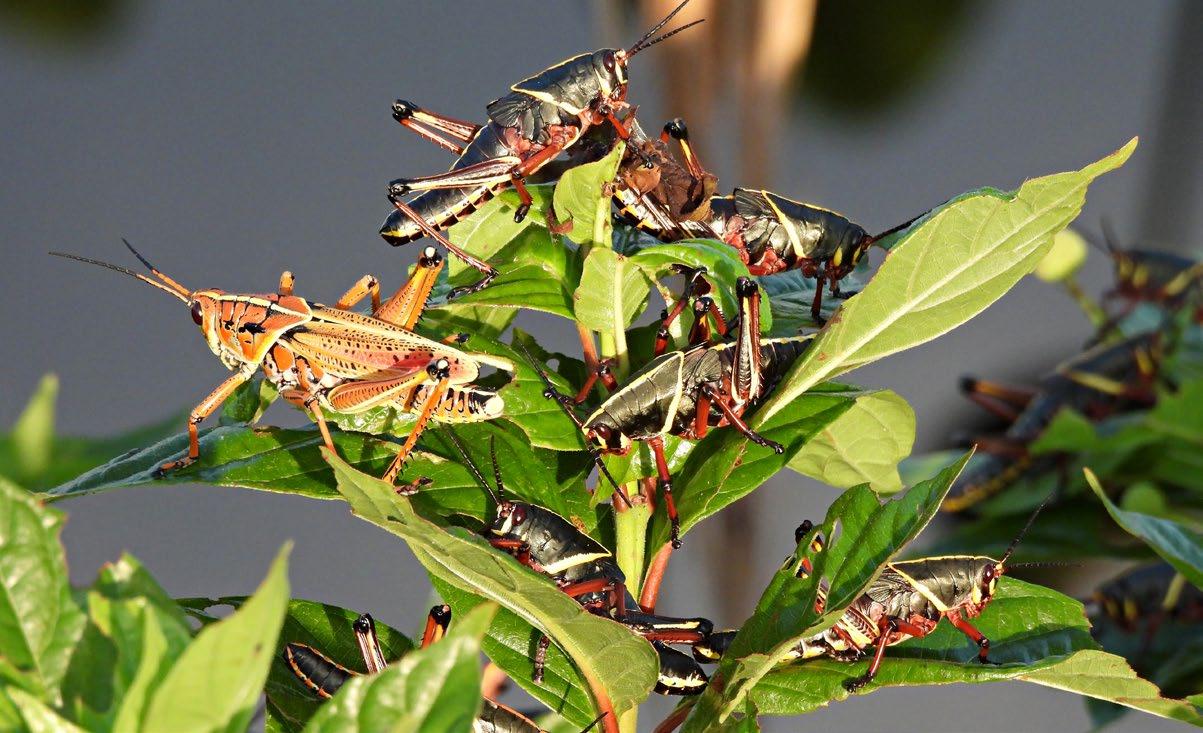

by Jim Field
I get excited by the good fortune of seeing a favorite bird, of which I have many. It’s not a daily occurrence, but happens multiple times a week, at minimum.
I get more excited by the magic of coming across a butterfly. It doesn’t happen very often—although I do spend a good amount of time gardening—and so I consider it a special treat, a privilege really. Actually, I believe they find me, as opposed to me finding them.
South Florida is considered a hotspot for butterflies, given its tropical climate and diverse plant life. Common butterflies in Vero Beach include Monarchs (Danaus plexippus), Queens (Danaus gilippus), Gulf Fritillaries (Agraulis vanillae), and Florida’s state butterfly, Zebra Longwings (Heliconius charithonia).
Rather than relying on the goodwill of butterflies to present themselves to us, a better idea—if you truly love them and are drawn to their company—is to proactively attract them by creating a butterfly garden. This article covers the basics involved.
Like most lepidopterists—i.e., butterfly enthusiasts—I am particularly fond of monarchs, given their innate beauty and amazing migratory story. So too, I am captivated (horrified) by the unfolding story of their tragic demise, and actively interested in doing something to assist them. Turns out, a butterfly garden in Vero Beach will do this.
Here is what is decimating monarch populations, which have dropped 80–90% in some areas:
Loss of milkweed. The only plant eaten by monarch caterpillars, due to widespread use of herbicides, building and development. Without milkweed, monarchs starve. Climate change. Extreme weather alters migration timing and weather patterns, kills butterflies or disrupts breeding, affects the growth of both milkweed and nectar plants. Deforestation in Mexico. Monarchs that migrate to Mexico depend on the Oyamel fir forests for overwintering, which have been reduced by illegal logging and habitat fragmentation. Migration hazards. Monarchs migrate up to 3,000 miles from Canada to Mexico. Along the way, they face road mortality, loss of stopover habitats, exposure to pollutants.
This is not an overwhelming project by any means. Locate a relatively small space on your property that is underutilized, and spend a few weekends putting the components together. The goal is to provide them with everything they need to feed, reproduce, and thrive.
Host plants for caterpillars. Host plants are where butterflies lay eggs and caterpillars (larvae) eat, thus facilitating new generations. Examples: milkweed, parsley, thistle.
Nectar plants for adults. Provide energyrich nectar for flying, mating, and escaping predators. Examples: butterfly bush, coneflower, lantana.
Sunny sheltered location. Butterflies are cold-blooded and need warmth to fly. Place the garden in full sun. Provide shelter from wind using hedges, fences, trees. Puddling area. Butterflies seek out moist soil or mud to sip water and ingest minerals. Fill a shallow dish with sand or soil, add a little water and dash of sea salt.
Milkweed (Asclepias spp.). Besides hosting eggs and providing food for caterpillar larvae, milkweed contains cardenolides (toxic chemicals) that monarchs ingest and store, making both caterpillars and adult butterflies
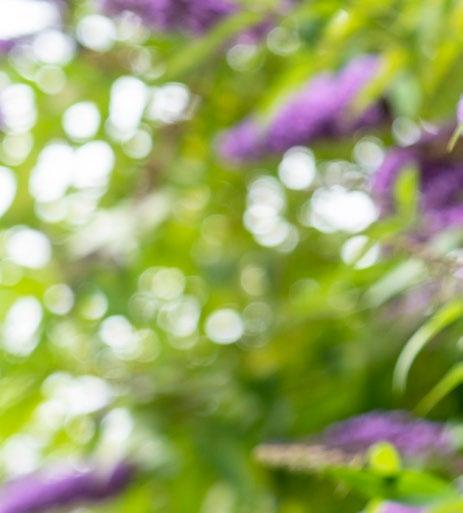
poisonous to predators like birds. The monarch’s orange coloration communicates: I’m toxic, don’t eat me. Smart milkweed choices for Southern Florida include: Swamp Milkweed (Asclepias incarnata), Butterfly Weed (Asclepias tuberosa), and White Milkweed (Asclepias perennis).
Butterfly bush (Buddleia spp.) In Virginia, when our children were small, we planted a butterfly bush next to our mailbox, which grew into an enormous specimen with endless flowers, never failing to attract butterflies in large numbers on a daily basis in summer. We loved it! The natural informality of their foliage and flowers is endearing, easily set in motion by the slightest breeze. A perennial, they grow and flower best in full sun. Take care to cut them back and thin them to avoid a tangled, woody mess. They are considered an invasive plant in Florida, although given their exceptional beauty, I prefer them hands down over most other plants, and merely prune to keep them in check. The flowers also attract hummingbirds.
Coneflower (Echinacea spp.). A natural pairing with the butterfly bush, both sunloving and adored by pollinators. Depending upon the height of your butterfly bush, coneflowers can be used as an underplant or at the forefront of your butterfly shrubs to add color. Perennial closely related to daises, sunflowers, and ragweed. Not invasive.

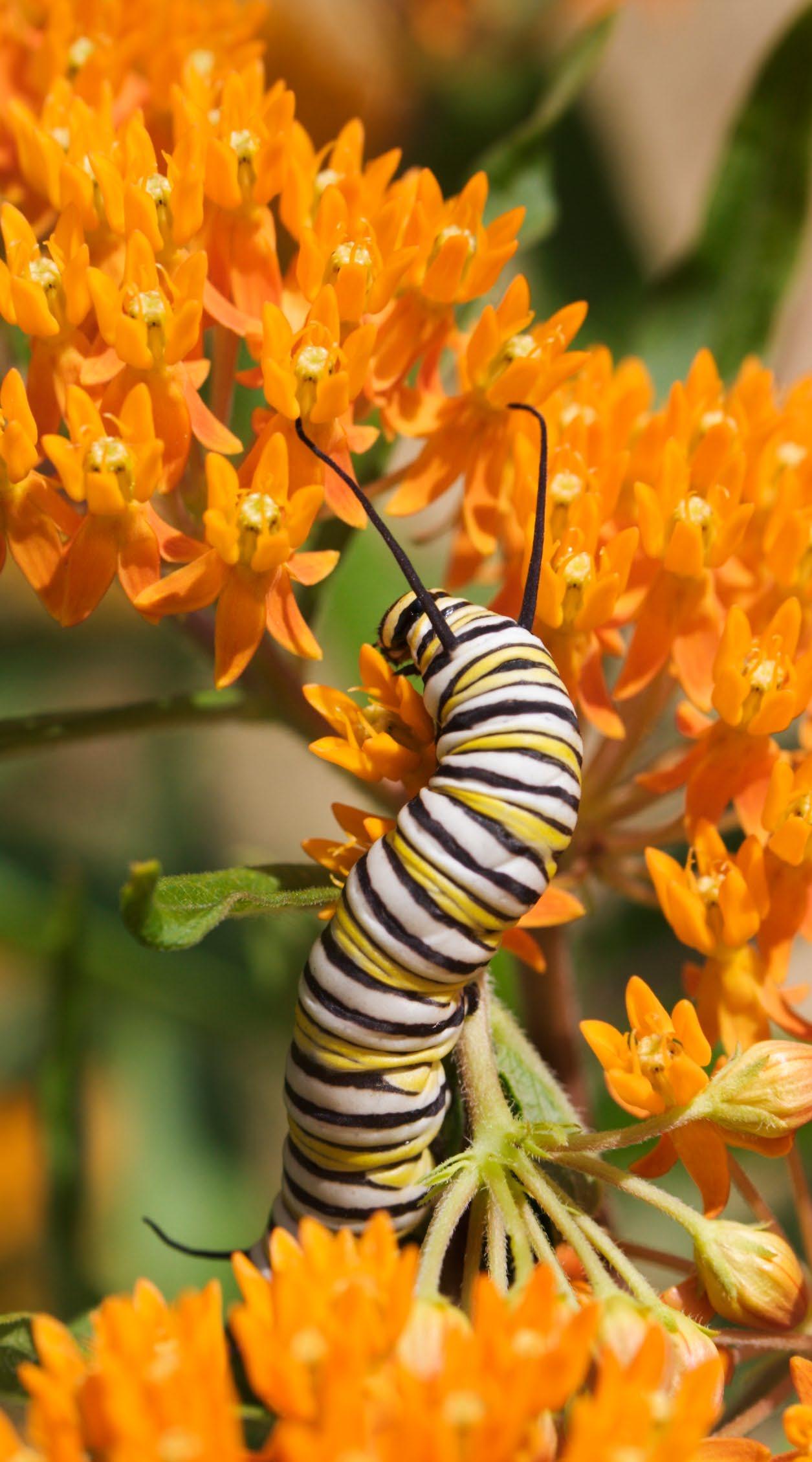

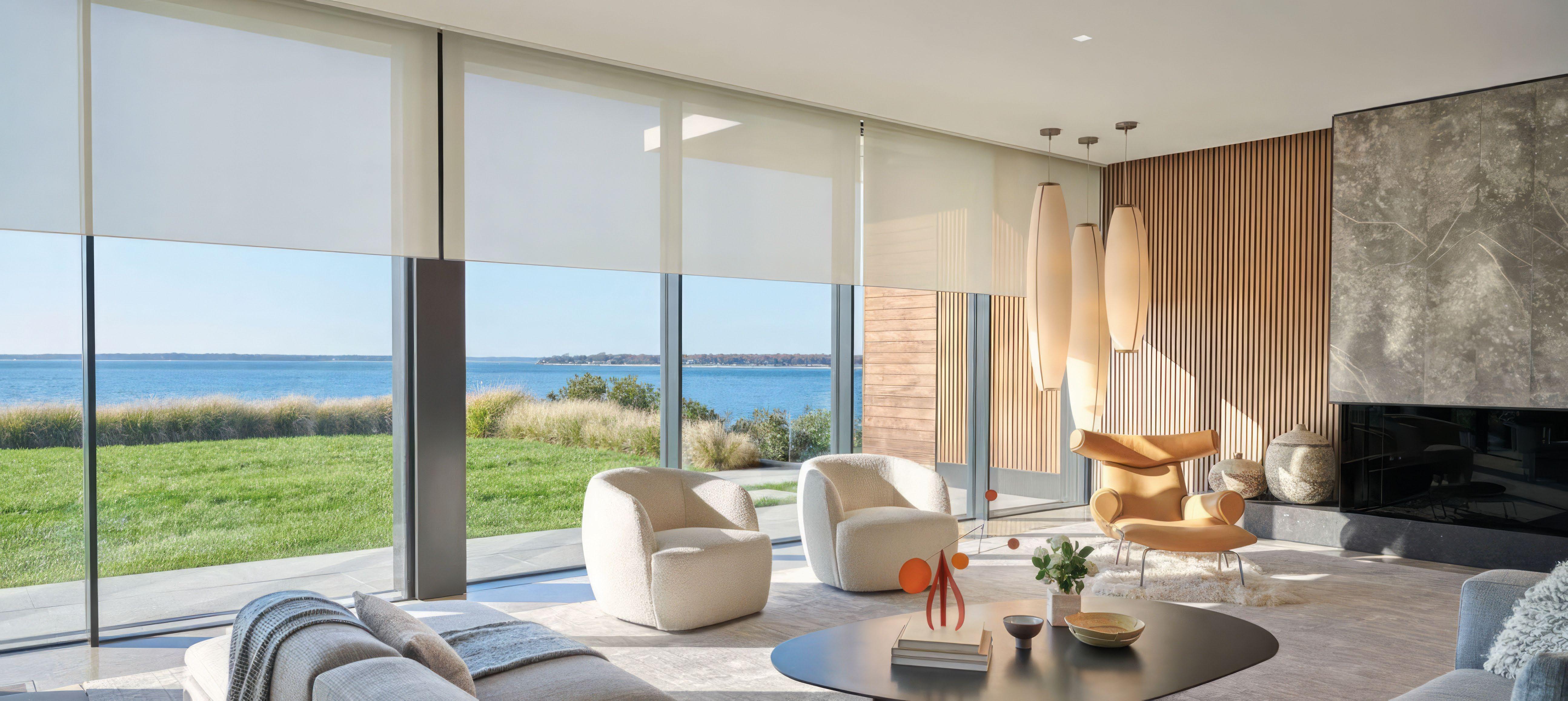


























As temperatures climb, the social scene in Vero Beach heats up. From sunset parties to secret whispers, here’s your scoop on what’s happening around town this July and August.
One downtown gallery is rumored to be planning a surprise fashion and art hybrid event. Think mannequins, movement, and
A familiar face from Palm Beach is quietly house hunting near the marina, and locals are speculating that a splashy retail concept could
That’s the scoop. Check back next issue as the fall buzz starts brewing—and don’t forget to tag @LIVVero in your summer snaps. Who knows? You might be in the



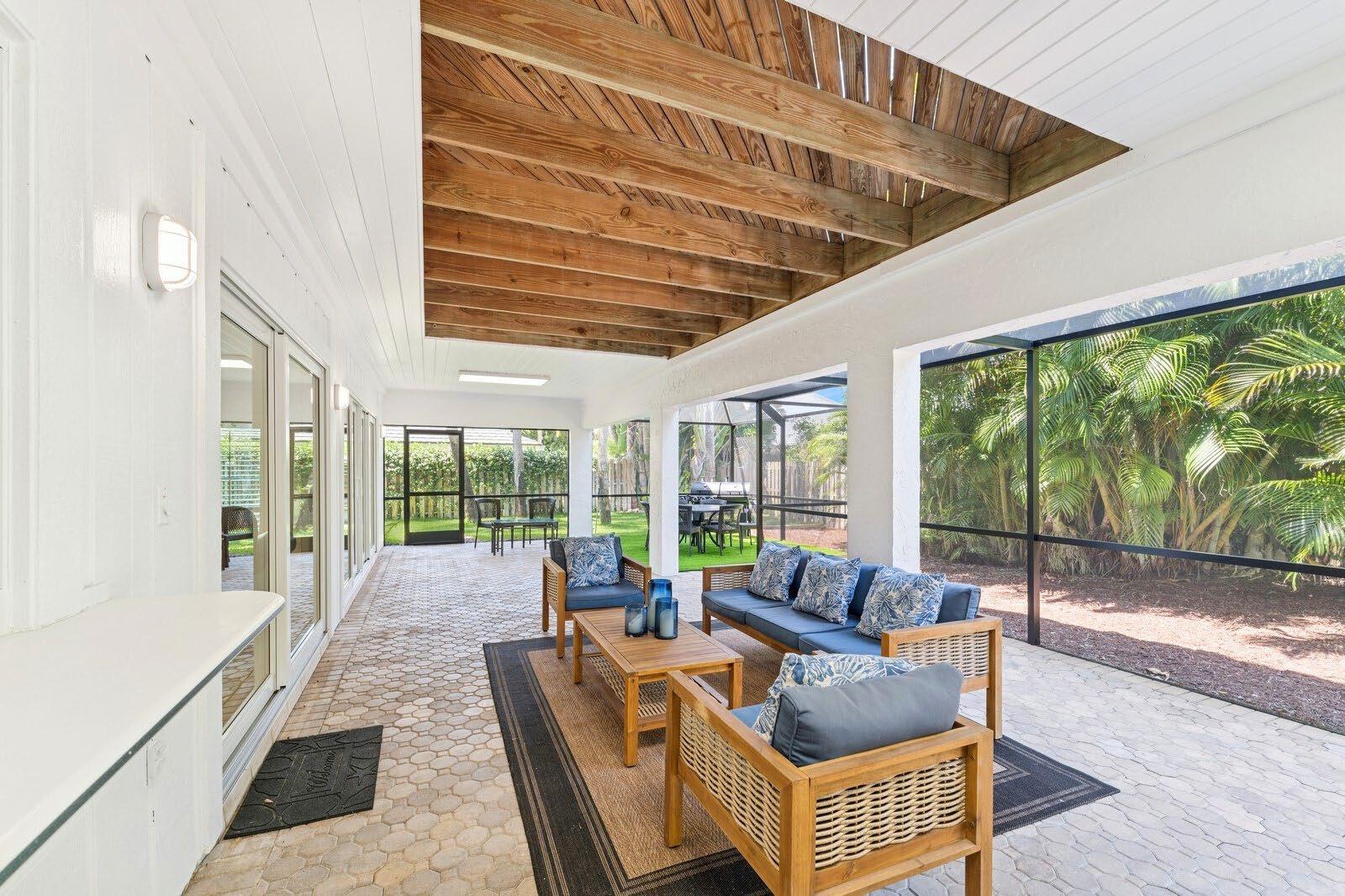
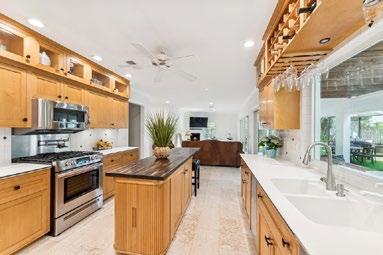
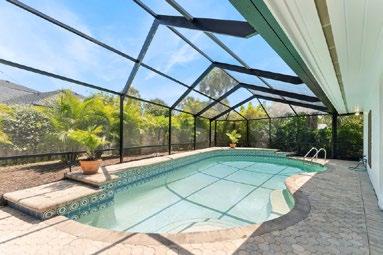
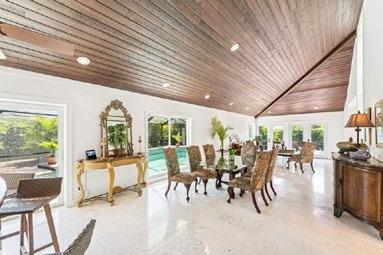
Completed in 2025, this West Indies-inspired estate blends timeless design with modern luxury Behind the gates of the exclusive enclave of Seagrove East, the home offers over 3,000 sq ft of screened outdoor living, a resort-style saltwater pool, and lush, tropical landscaping.
Built to last with a 50-year metal roof, impact-rated windows and doors, and concrete block construction, every detail speaks to quality and durability Inside, enjoy two elegant primary suites, four ensuite guest rooms, vaulted ceilings, and natural finishes including limestone and bamboo flooring Expansive living spaces offer the perfect setting for both elegant entertaining and tranquil relaxation.
Additional features include dual laundry rooms, 24/7 gated security, and access to two private beaches with optional private dockage available
Luxury coastal living at its finest.
Now Offered at $1.995 million.
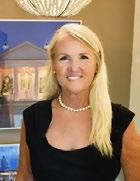
Sherry Goff | Luxury Coastal Specialist
Berkshire Hathaway HomeServices
(603) 714-5899
sherrysellsvero@gmail.com

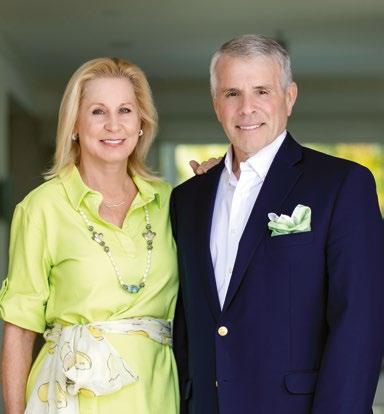
A Moment’s Notice Health Care amnhc.com
THANK YOU FOR SUPPORTING OUR LOCAL PARTNERS
Aiello Landscape aiellolandscape.com
Alexandra Nuttall Design alexandranuttall.com
We would like to express our heartfelt thanks to our advertisers and subscribers for their incredible support. We’re excited to continue sharing unique stories and providing a platform where you can proudly advertise. Here’s to growth and collaboration!
AR Homes arhomesverobeach.com
Audiohouse, The theaudiohouse.com
Coastal Illumination Landscape Lighting coastalillumination.com
Coastal Interiors coastal.net
Compass, The Reynolds Team Scott Reynolds, Team Leader myreynoldsteam.com
CrossCountry Mortgage
The Denton-McCrae Group crosscountrymortgage.com
A Moment’s Notice Health Care amnhc.com
Alexandra Nuttall Design alexandranuttall.com
Align Aesthetics & Wellness alignmedicalaesthetics.com
Louden Bonded Pools loudenpools.com
We would like to express our heartfelt thanks to our advertisers and subscribers for their incredible support in 2024. As we step into 2025, we’re excited to continue sharing unique stories and providing a platform where you can proudly advertise. Here’s to another year of growth and collaboration!
AR Homes arhomesverobeach.com
Decor Accents decoraccentsvero.com
Audiohouse, The theaudiohouse.com
Design Collaborative 772-999-2155
Berkshire Hathaway HomeServices
Sherry Goff, Luxury Coastal Specialist sherrysellsvero@gmail.com
Engel & Völkers Vero Beach Claire Higgins, Broker verobeach.evrealestate.com
Capritta Appliance & Air Conditioning caprittafinelines.com
M Bakeri mbakerillc.com
O’Dare Boga Dobson Group odareboga.com
Prism Capital 772-200-3973
Melanie Bock Studios melaniebockstudios.com
Reilly Construction building2last.com
O’Dare Boga Dobson Group odareboga.com
REsistance Cycle & Strength resistancevb.com
Moorings Real Estate Co. Marsha Sherry, Broker themoorings.com
Rise Modern Wellness risemodernwellness.com
Coastal Illumination Landscape Lighting coastalillumination.com
Engel & Völkers Vero Beach Halle Dold halle.dold@evrealestate.com
Coastal Interiors coastal.net
Engel & Völkers Vero Beach Diane Field dianefieldrealtor.com
Design Collaborative 772-999-2155
Engel & Völkers
Engel & Völkers Meadowood Thomas Panos thomas.panos@evrealestate.com
Vero Beach, Hutchinson Island Claire Higgins, Broker verobeach.evrealestate.com
Florida Shutters floridashuttersinc.com
Engel & Völkers Vero Beach Diane Field dianefieldrealtor.com
GFM Handyman 772-633-2976
Florida Shutters floridashuttersinc.com
HBS - Impact Windows & Doors hbsglass.com
HBS - Impact Windows & Doors hbsglass.com
Inspired Closets inspiredclosetstc.com
Jennifer D. Peshke, Law Offices of peshkelaw.com
Joey & Kimmy’s Seafood Market & Restaurant joeyandkimmys.com
Saint Edward’s School steds.org
Premier Estate Properties Allison Ritter browntalleygroup.info
Scott Tree Services scotttreeservices.com
Reilly Construction building2last.com
Sew Easy seweasyvero.com
Scott Tree Services scotttreeservices.com
Tocqueville Asset Management tocqueville.com
Tocqueville Asset Management tocqueville.com
VB Private Jewelers vbprivatejewelers.com
Varietals & More varietalsandmore.com
Vero Beach Pavers vbpavers.com
Vero Beach Pavers vbpavers.com
Vero Fitness verofitness.fit
Vero Custom Cabinets verocustomcabinetry.com
Vero Glass veroglass.com
Vero Glass veroglass.com
Vino Vero vinoverobeach.com
Collaboration thrives through genuine friendships
